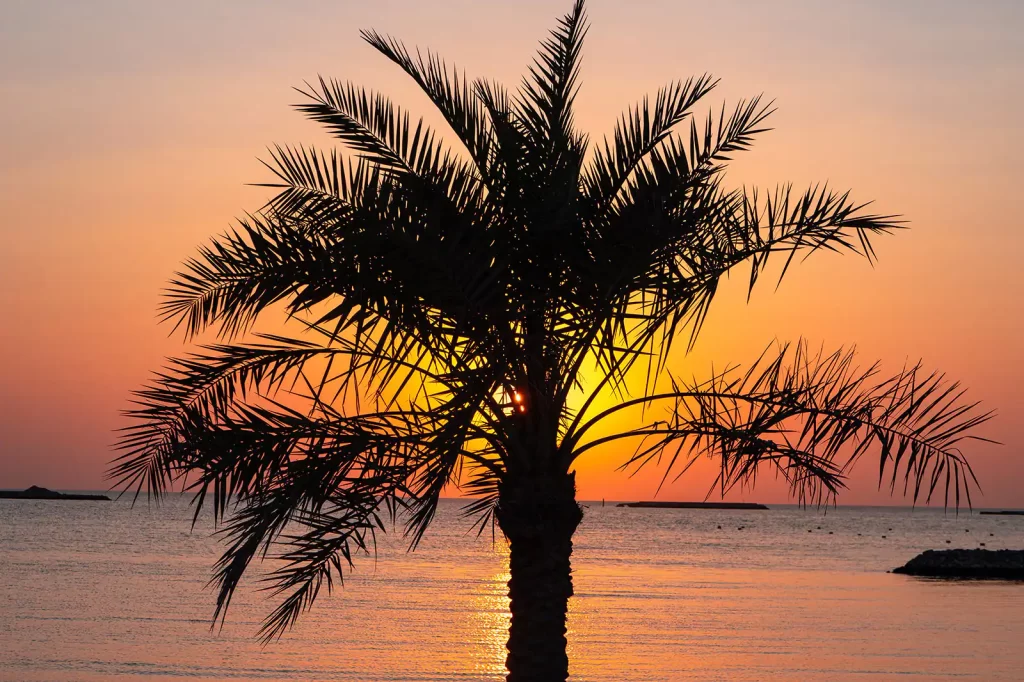ALBANIA
“Albania’s stunning mountain scenery, crumbling castles, boisterous capital and dreamy beaches rival any in the Mediterranean and continue to enchant.
Most Beautiful Places in Albania
- VALBONA VALLEY NATIONAL PARK.
- THETH NATIONAL PARK. this magnificent valley in the Albanian Alps has long been one of the most isolated places in the Balkans. Road built in 2010; Theth National Park structures created in 2022 …Admire old stone buildings, forests, caves, rivers dominated by mountains, rocky cliffs from which torrents and waterfalls tumble… An enchanting scenery.


- BERAT, the beautiful “city of a thousand windows”: Nestling between two hills and the River Osum, it proudly displays its cliff-side Ottoman houses and maze of paved streets. Kala citadel, a 13th century castle overlooking the town offers a delightful panorama of the entire valley.

- LAKE OHRID: one of the oldest lakes in the world.


- KSAMIL BEACH.
- GJIROKASTER, the city of “thousand steps” famous for its pretty historic centre and fortress, it has been listed as a UNESCO World Heritage Site for its preserved Ottoman-era buildings.


- BUTRINT, the most important archaeological site in Albania, and a UNESCO World Heritage Site at the gateway to Corfu (Greece): Discover medieval ramparts, Greek theatre, Venetian tower, Byzantine basilica and Roman ruins.
- DHËRMI, the wild beauty of the Albanian Riviera: Bordered by the Ceraunian mountains and hemmed in by paradise beaches, the bay offers unforgettable hiking trails such as the Gjipe canyon, with its spectacular cliffs overlooking a sandy cove fringed by turquoise waters.


ZVERNEC, opposite Puglia (Italy) there is a peaceful lagoon of Narta, which is home to the small island of Zvernec. It can be reached via a 270-metre-long winding bridge. This pine-covered dot of land is home to the well-preserved 13th century Byzantine monastery of Sainte-Marie.


KRUJA, famous for its hilltop castle, pine-covered mountains, cobbled streets, old white-walled houses, Ottoman monuments, old bazaar…


- KOMAN LAKE, immerse yourself among the vertiginous views offered by the High Mountains of northern Albania. The jaded waters of the lake are surrounded by rugged and verdant towering cliffs, and this peaceful cruise is the perfect opportunity for a few hours of tranquility, or for exploring Albania’s rich wildlife. Birders should look out for pygmy cormorants, herons, and golden eagles.
- TIRANA, Tirana, the heart and capital of Albania, like all other European metropolises has never-ending movement and energy. With its clubs, bars, cafes, and taverns, Tirana is worth discovering by both day and night.
- The Skanderbeg Square (Albanian: Sheshi Skënderbej) is the main plaza in the centre of Tirana. It commemorates the 15th century nobleman, and hero of the nation for resisting the Ottomans.
- Grand Park of Tirana:… an artificial lake, Saint Procopius Church, Presidential Palace, and memorials to several Albanian personalities. The Park is called the “Lung of the City” due to the diversity of plants; Botanical Garden, Zoo, complex of swimming pools; amphitheatre, the artificial lake is a well-known fishing and also swimming area.
- Bunk’Art 1 is five levels & 3,000m2 of underground protective bunker, the product of Enver Hoxha’s fear of nuclear fallout. The case of dictator Enver Hoxha is unique in the world. He built over 200,000 bunkers (even 700,000) throughout the country, driven by a fear of nuclear war and invaders.
Bunk Art 2, located right in the centre of Tirana, just 30 seconds walk from Skenderbeg Square. Based inside a real communist era bunker





ALBANIA, Guide by Intertravel
“Albania’s stunning mountain scenery, crumbling castles, boisterous capital and dreamy beaches rival any in the Mediterranean and continue to enchant.
Most Beautiful Places in Albania
- VALBONA VALLEY NATIONAL PARK.


- THETH NATIONAL PARK. this magnificent valley in the Albanian Alps has long been one of the most isolated places in the Balkans. Road built in 2010; Theth National Park structures created in 2022 …Admire old stone buildings, forests, caves, rivers dominated by mountains, rocky cliffs from which torrents and waterfalls tumble… An enchanting scenery.
- BERAT, the beautiful “city of a thousand windows”: Nestling between two hills and the River Osum, it proudly displays its cliff-side Ottoman houses and maze of paved streets. Kala citadel, a 13th century castle overlooking the town offers a delightful panorama of the entire valley.

- LAKE OHRID: one of the oldest lakes in the world.


- KSAMIL BEACH.


- GJIROKASTER, the city of “thousand steps” famous for its pretty historic centre and fortress, it has been listed as a UNESCO World Heritage Site for its preserved Ottoman-era buildings.


- BUTRINT, the most important archaeological site in Albania, and a UNESCO World Heritage Site at the gateway to Corfu (Greece): Discover medieval ramparts, Greek theatre, Venetian tower, Byzantine basilica and Roman ruins.




DHËRMI, the wild beauty of the Albanian Riviera: Bordered by the Ceraunian mountains and hemmed in by paradise beaches, the bay offers unforgettable hiking trails such as the Gjipe canyon, with its spectacular cliffs overlooking a sandy cove fringed by turquoise waters.


ZVERNEC, opposite Puglia (Italy) there is a peaceful lagoon of Narta, which is home to the small island of Zvernec. It can be reached via a 270-metre-long winding bridge. This pine-covered dot of land is home to the well-preserved 13th century Byzantine monastery of Sainte-Marie.
KRUJA, famous for its hilltop castle, pine-covered mountains, cobbled streets, old white-walled houses, Ottoman monuments, old bazaar…



KOMAN LAKE, immerse yourself among the vertiginous views offered by the High Mountains of northern Albania. The jaded waters of the lake are surrounded by rugged and verdant towering cliffs, and this peaceful cruise is the perfect opportunity for a few hours of tranquility, or for exploring Albania’s rich wildlife. Birders should look out for pygmy cormorants, herons, and golden eagles.


- TIRANA, Tirana, the heart and capital of Albania, like all other European metropolises has never-ending movement and energy. With its clubs, bars, cafes, and taverns, Tirana is worth discovering by both day and night.
- The Skanderbeg Square (Albanian: Sheshi Skënderbej) is the main plaza in the centre of Tirana. It commemorates the 15th century nobleman, and hero of the nation for resisting the Ottomans.
- Grand Park of Tirana:… an artificial lake, Saint Procopius Church, Presidential Palace, and memorials to several Albanian personalities. The Park is called the “Lung of the City” due to the diversity of plants; Botanical Garden, Zoo, complex of swimming pools; amphitheatre, the artificial lake is a well-known fishing and also swimming area.
- Bunk’Art 1 is five levels & 3,000m2 of underground protective bunker, the product of Enver Hoxha’s fear of nuclear fallout. The case of dictator Enver Hoxha is unique in the world. He built over 200,000 bunkers (even 700,000) throughout the country, driven by a fear of nuclear war and invaders.
- Bunk Art 2, located right in the centre of Tirana, just 30 seconds walk from Skenderbeg Square. Based inside a real communist era bunker


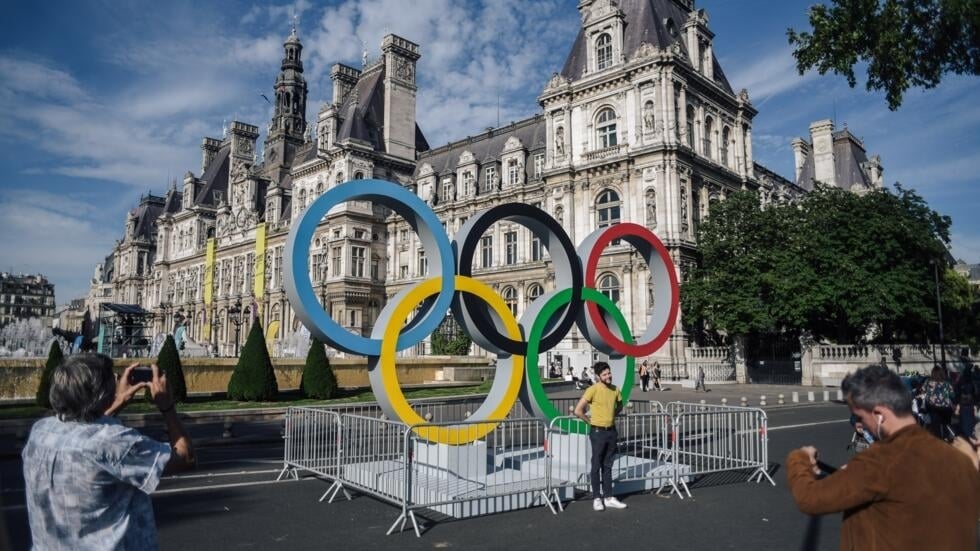
PARIS OLYMPIC GAMES NEWS
| Jul26-Sep08 | OLYMPIC GAMES will take place in Paris from July 26 to August 11. Paralympic Games from August 28 to September 8. |
| Jul26-Aug11 | Expect an increased security presence; major disruptions to traffic, and crowds. |
| May08 | From May 08th, public events related to Olympic Games will take place across France. |
FRANCE 24 VISITS THE PARIS 2024 OLYMPICS SITES ACROSS THE CAPITAL
SPORT – From the magnificent Palace of Versailles to the Stade de France and the home of French tennis at Roland-Garros, FRANCE 24’s sports editor James Vasina visits the major sites that will host Olympic events during the Paris 2024 games and the opening ceremony, one year ahead of what promises to be a global sports extravaganza.
- Palace of Versailles (show jumping, dressage)
- Alexandre III Bridge (marathon swimming, triathlon)
- Stade de France (athletics)
- The River Seine (opening ceremony)
- Other. Please refer to the link for details and maps. https://www.france24.com/en/sport/20230726-france-24-visits-the-paris-2024-olympics-sites-across-the-capital
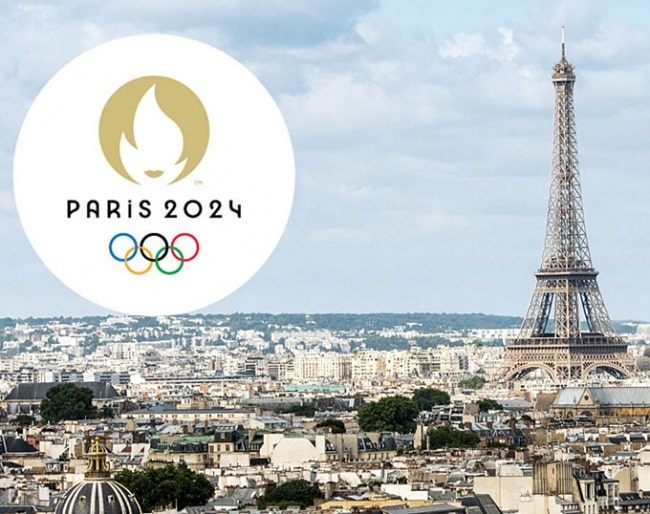
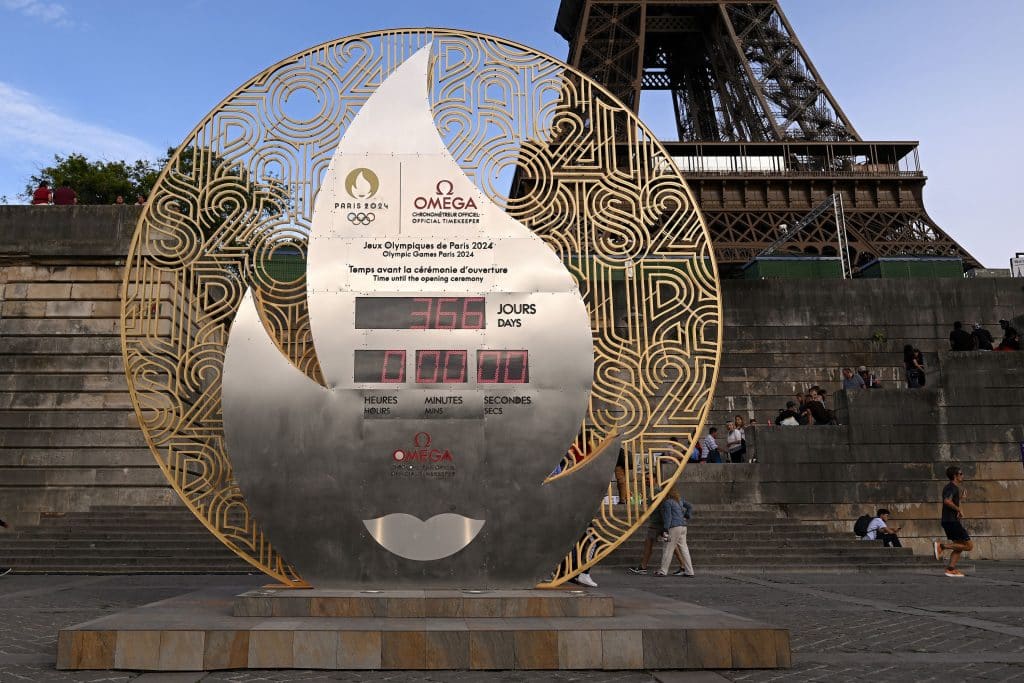
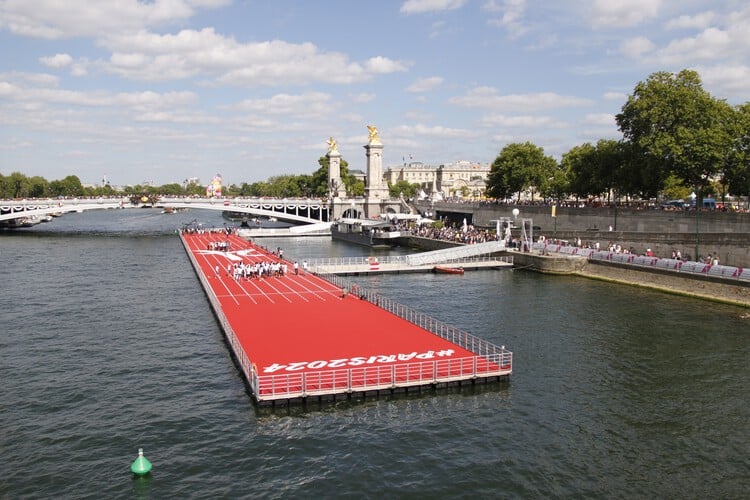
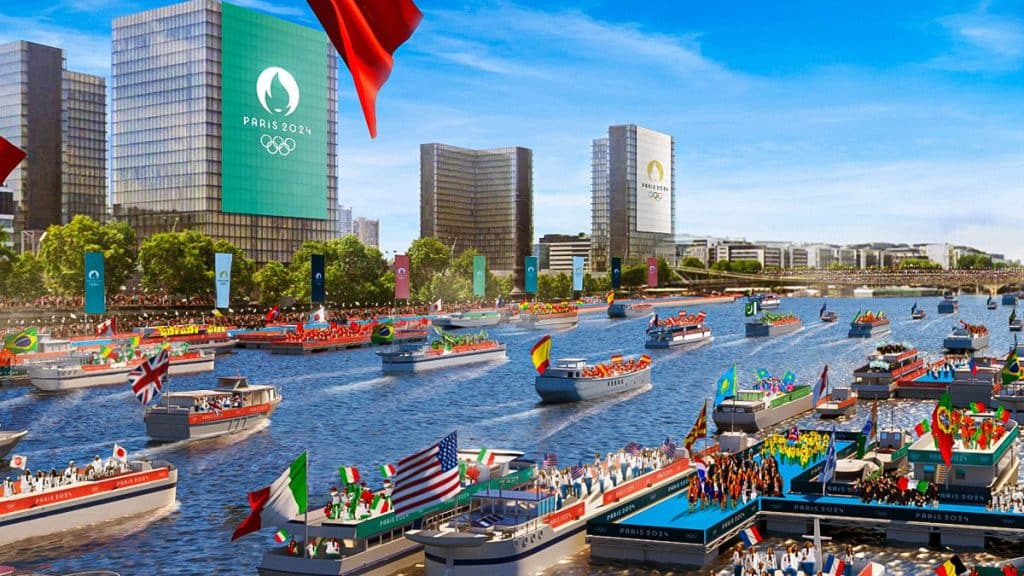
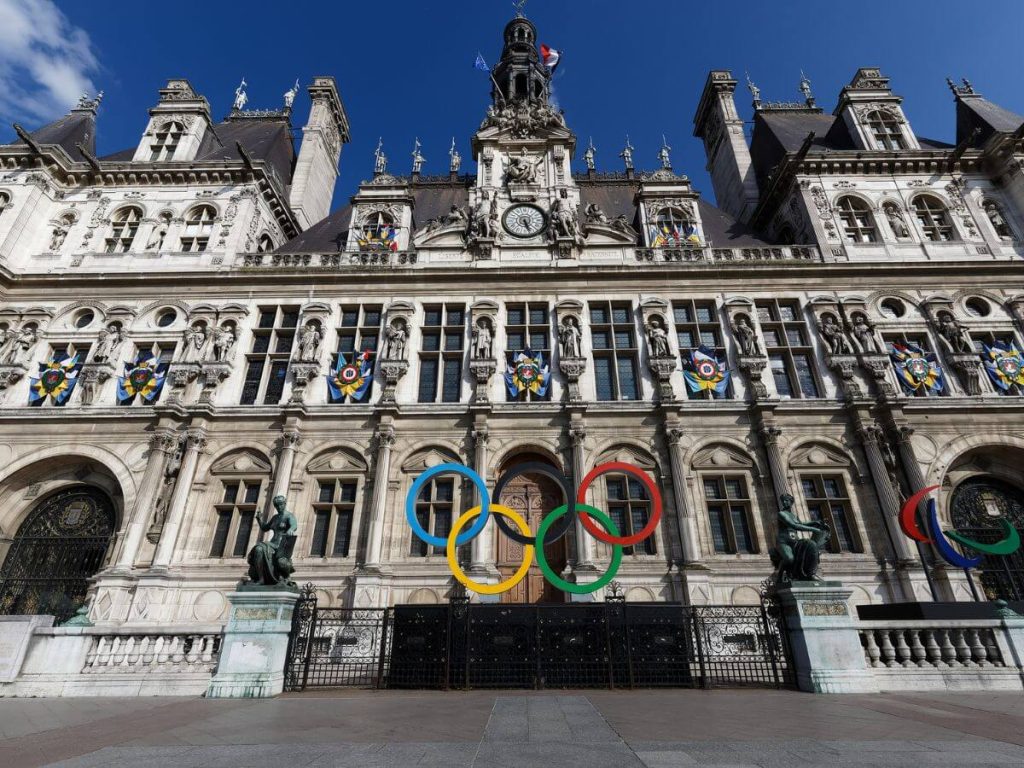

The most wonderful time of the year again! Christmas traditions across Europe are as varied as the landscapes that they are all set in. Here are some facts and traditions.
Christmas markets are a beloved part of holiday traditions in Europe. Market stalls fill medieval town squares in front of centuries-old churches and palaces. Local artisans sell their handcrafted goods—toys, ornaments, decorations, and sweets—and each city established unique traditions that captured the spirit of their people. Christmas Markets dazzle with twinkle lights, legendary cities celebrate in style, and Europe’s time-honored traditions come to life.
Christmas Facts
- First Christmas Celebrations were in Rome around 336. It became a major Christian festival on the 9th century.
- Christmas Colors in Europe symbolize: Red Jesus Blood, green eternal life (evergreen tree which does not lose its leaves in the winter), gold is one of the three gifts of the Magi, symbolizing royalty.
- The most Christmassy tradition is in Rovaniemi, Finnish Lapland. Known as the official hometown of Santa Claus, it offers a range of magical experiences: e.g. visit Santa Claus Village, witness the Northern Lights, enjoy snowy landscapes.
- 12 Christmas Symbols: star, stocking, candy cane, poinsettia, wreath, evergreen tree, dove, snowflake, jingle bells, present, angels, and lights.
- Giving presents during Christmas symbolizes the three wise men gifts to Jesus.
- It takes about 15 years to grow the average Christmas tree.
- Norway Spruce is the traditional Christmas tree which has been popular since Victoria times with short and thin, varying bright and deep green pointed needles.
- Christmas tree is an evergreen conifer, such as a spruce, pine or fir, or an artificial tree of similar appearance.
- Greece: children flock from home to home to sing Greek Christmas carols or “kalanta”; Wish neighbors happy holidays, and get sweets, dried fruits and small change.
- The Candy Cane was invented in Germany, made into a J for Jesus, with red stripes symbolizing his blood.
- The tallest Christmas tree ever displayed measuring 67-meter was in Seattle, Washington.
- Christmas came from the words Cristes Maesse meaning “mass of Christ.”
- Bing Crosby’s version of “White Christmas” is the highest-selling single of all time.
- Visa cards are used about 6,000 times every minute during the Christmas season.
- Christmas lights were so expensive that they used to be rented rather than sold.
- Jingle Bells was originally a song about Thanksgiving in 1857.
- The X in X-Mas is not an abbreviation. It actually stands for “Chi”, meaning Christ in Greek.
- The first batch of eggnog originated from medieval Britain’s drink “Posset” — a hot milky ale-like drink.
- The most popular theory of why we leave cookies and milk out for Santa, is claimed to be reklated to the Dutch children tradition.
- The concept of caroling had nothing to do with Christmas. Medieval carols were liturgical songs in the 12th century, while traveling to different homes came from a tradition in England of wishing good fortunes to your neighbors in exchange for gifts.
- The Ancient Greeks considered the mistletoe an aphrodisiac, and hence kissing under it brings luck in love life.
- For many Europeans, the season’s main event is Christmas Eve celebrated with Midnight Mass, a grand meal and gift-giving. The “Twelve Days of Christmas” stretch from December 25 until January 6, which is Epiphany, the day the Three Kings delivered their gifts.
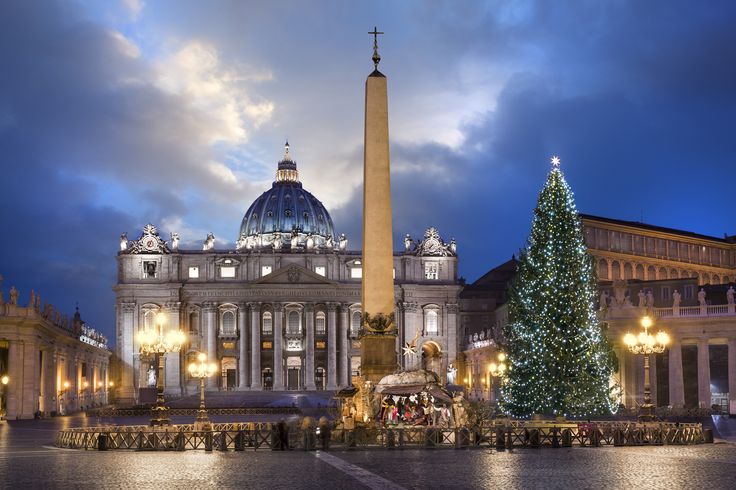
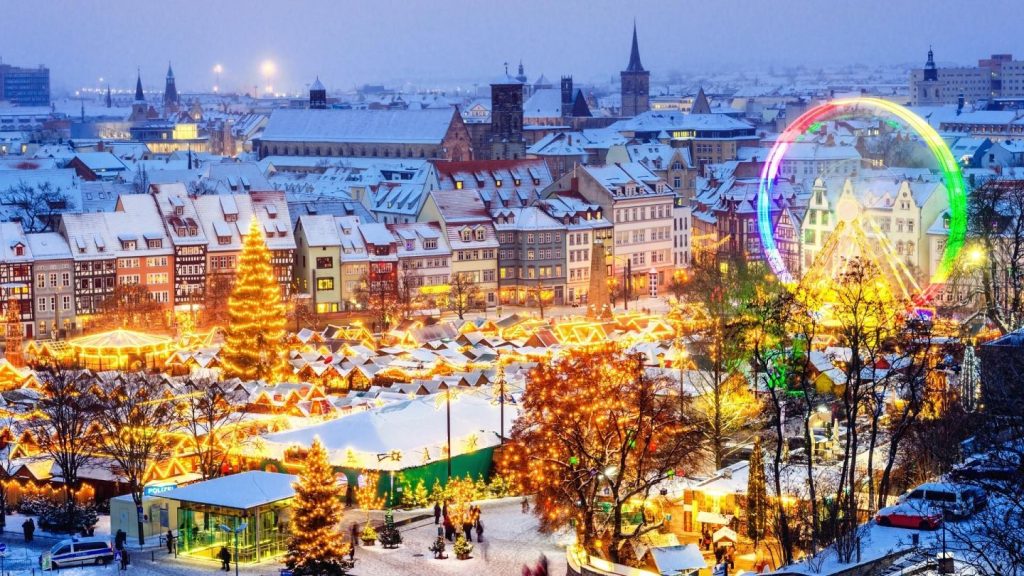
Uncommon Christmas Traditions
- ITALY: has a Christmas witch called Befana. i.e. an old woman or witch who delivers gifts to children throughout Italy on Epiphany Eve (the night of January 5) in a similar way to Santa Claus or the Three Magi Kings. A wooden puppet depicting the Befana.
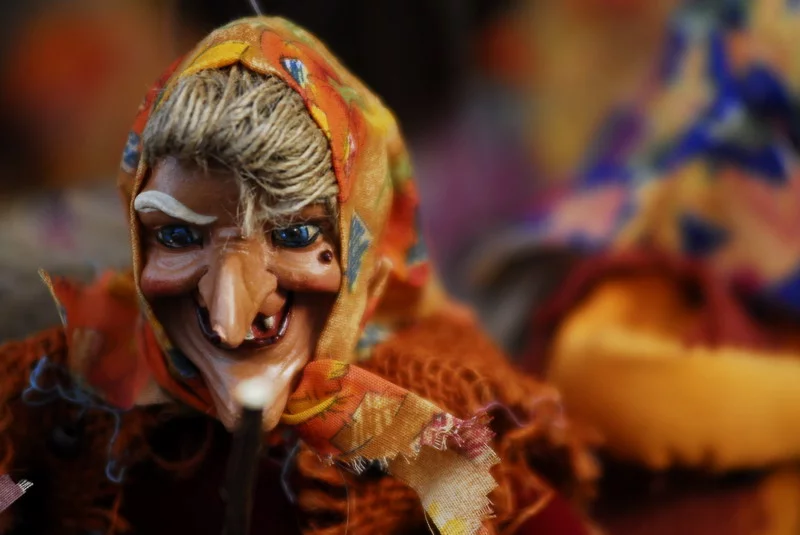
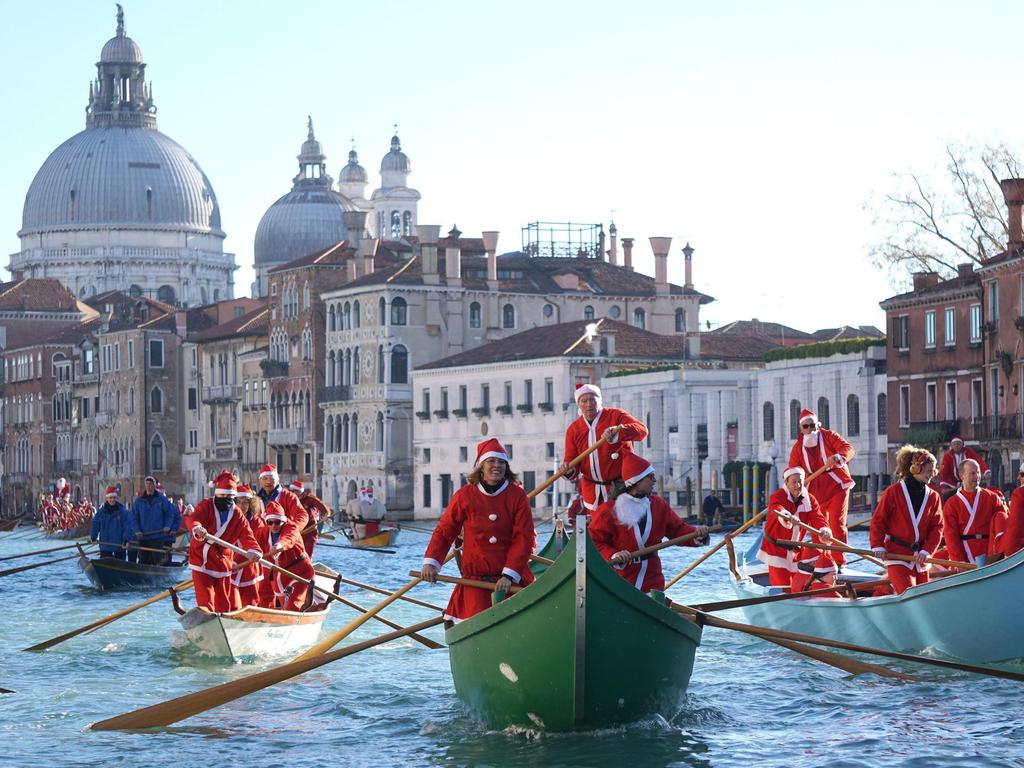
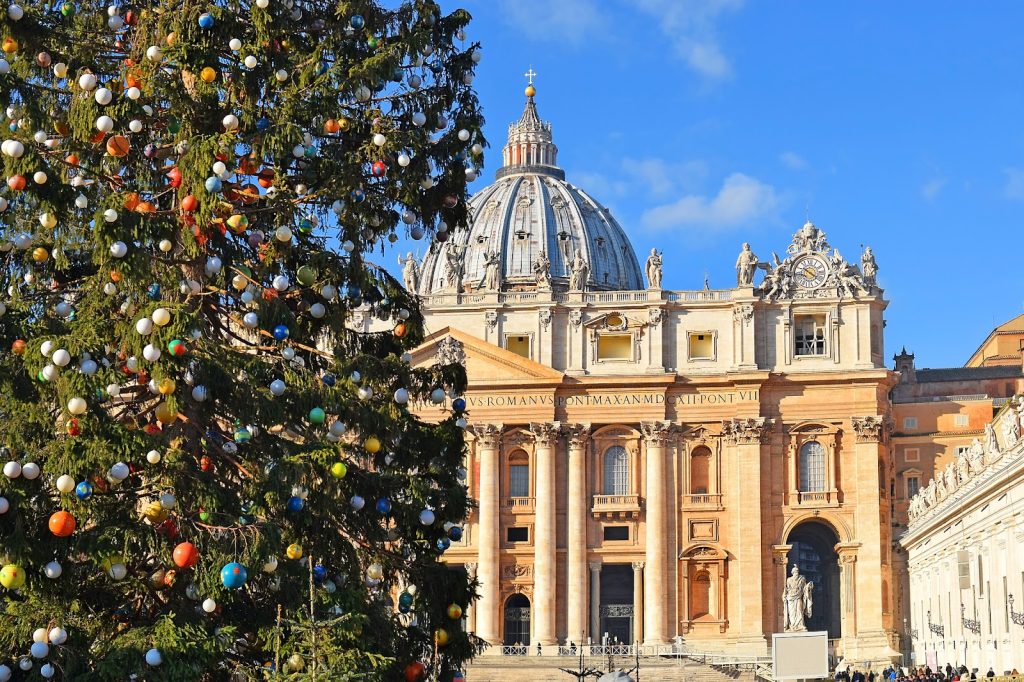
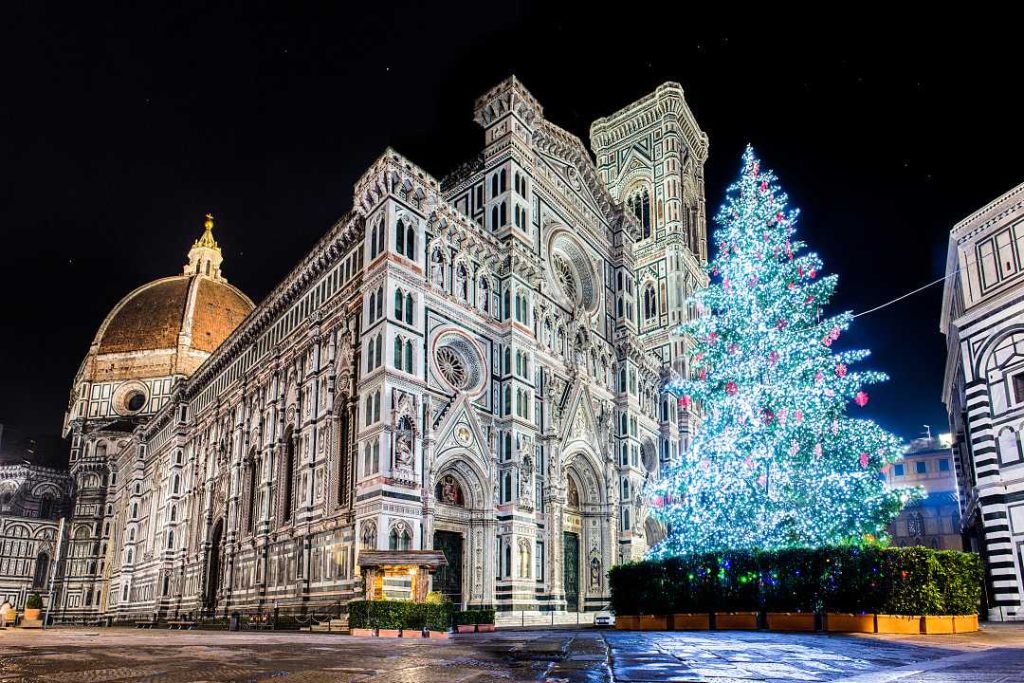
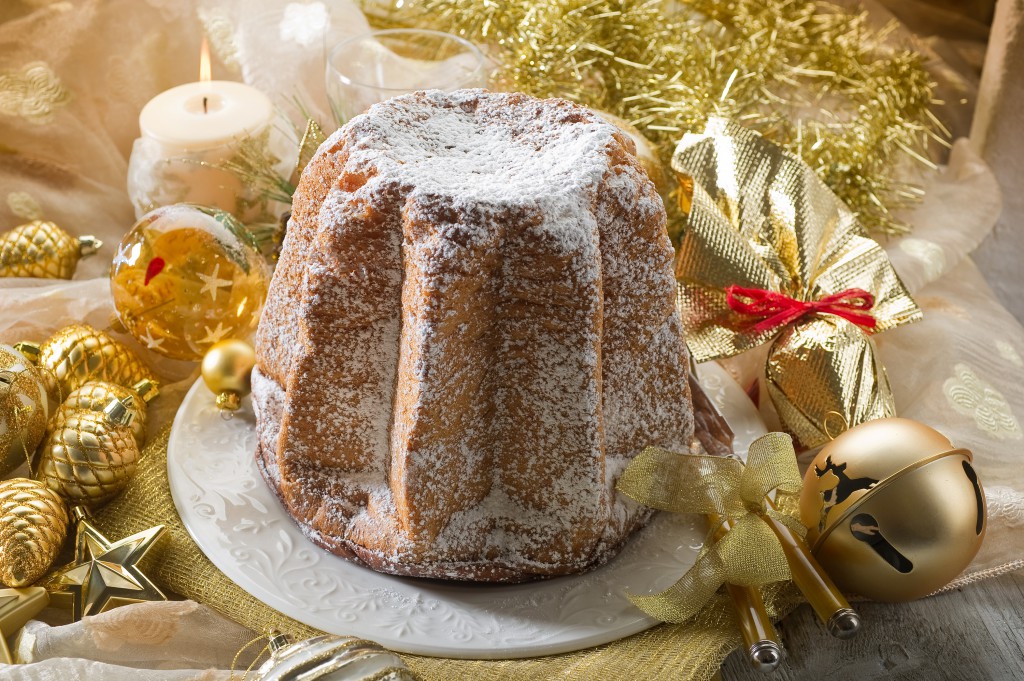
- FRANCE: Christmas for children is taken seriously in France and in fact a law in 1962 was passed ensuring that every child who writes a letter to Father Christmas (Papa Noel) gets a response – if a whole school class writes to Pere Noël – every child gets an individual reply!
- Strasbourg is the capital of Christmas. Its Christmas Market, renowned nationally dates back to 1570 i.e. typical market of traditional Alsatian symbols, e.g. hot wine, “bredele” cookies and decoration.Evenings preceding Christmas Day and New Year’s Day to have a réveillon which involves staying awake until midnight or later! French hosts push the boat out on this occasion and often the food is luxurious with plenty of wine and champagne.After Réveillon, it’s customary to leave a candle burning in case the Virgin Mary passes by.Dubbed the City of Light, on Christmas, Trees are draped with twinkling lights and colorful decorations are strung across the streets. Most areas of Paris get an extra sparkle for the festive season, but head to the Champs Elysées for the most over-the-top décor.Sparkling decorations on 150+ more streets in Paris, elaborate creations in department store windows, spectacular over-the-top light shows at Disneyland Paris, and cheerful strings of lights at the famous Paris Christmas markets.Les Treize (13) desserts: This is a Provençal French Christmas tradition, e.g. have 13 desserts after the main (big) Christmas feast, as they symbolise Christ and the 12 apostles at the Last Supper.Le Père Fouettard: Father Spanker is the partner and helper of Saint Nicolas. He decides if each kid behaved good or bad. He is the one who does the ‘spanking’ to bad behaving children.The papillotes: Theses are the chocolates (or candied fruits) wrapped in golden sparking paper with fringed ends. Inside there is a little note written on it. The papillote was created in Lyon at the end of the 18th century.
- Festive circus, a popular feature of Christmas in France.
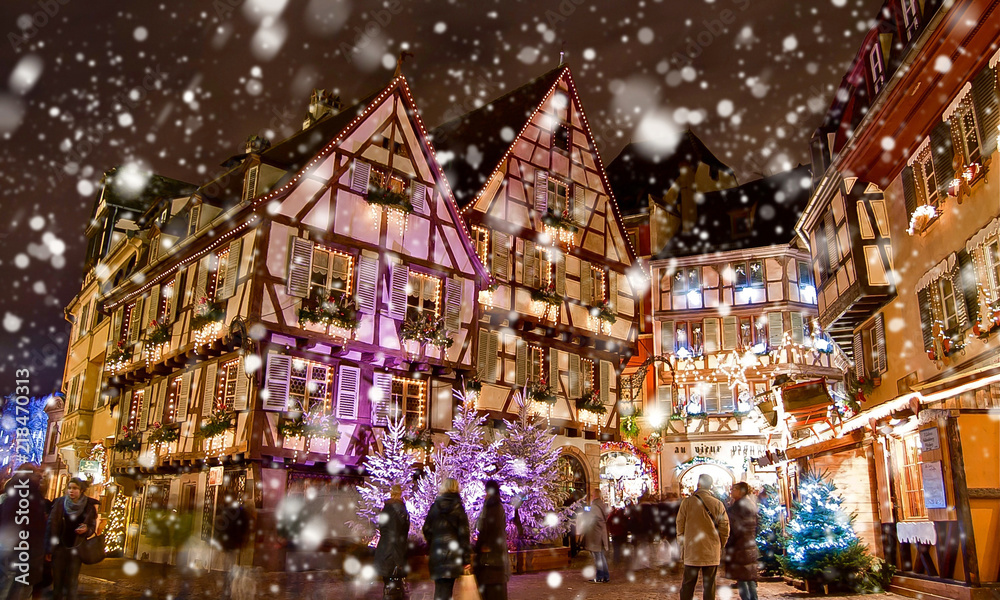
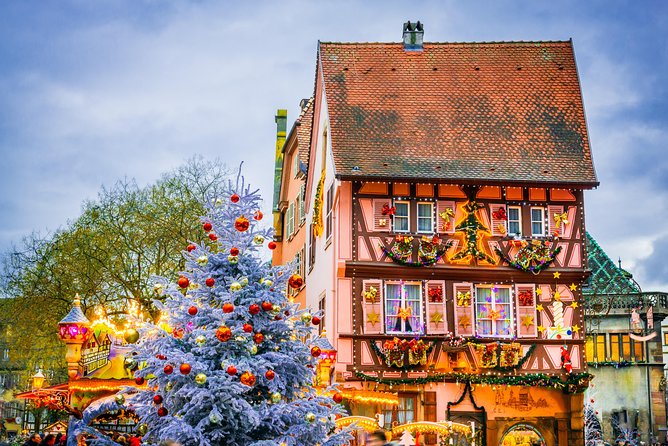
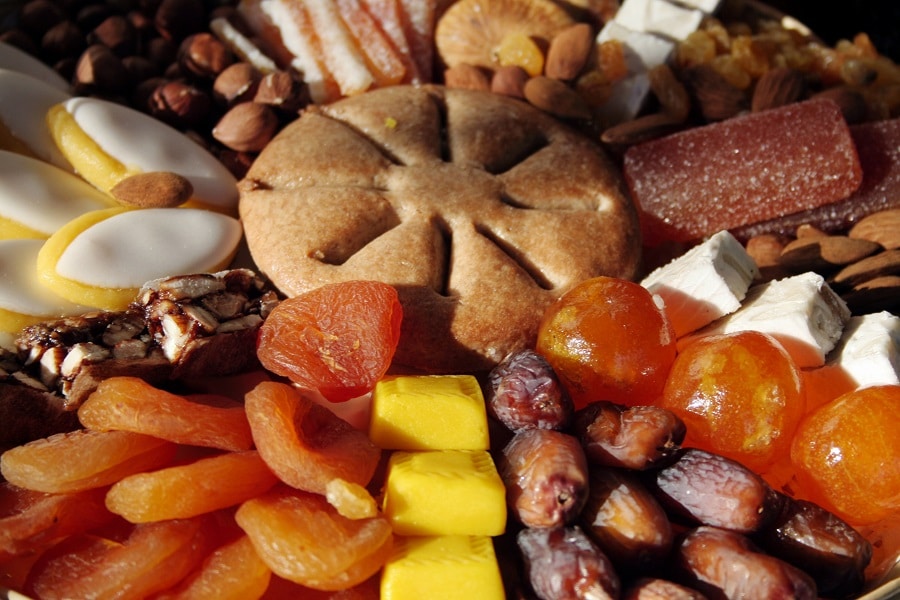

- SWITZERLAND, Zurich: With 150 stalls and operated completely indoors, a 50 foot Christmas tree adorned with Swarovski crystals welcomes visitors to Zurich as they arrive at the Main Train Station. The Zurich market is the largest indoor market in Europe, making it the perfect escape for those blustery cold evenings.
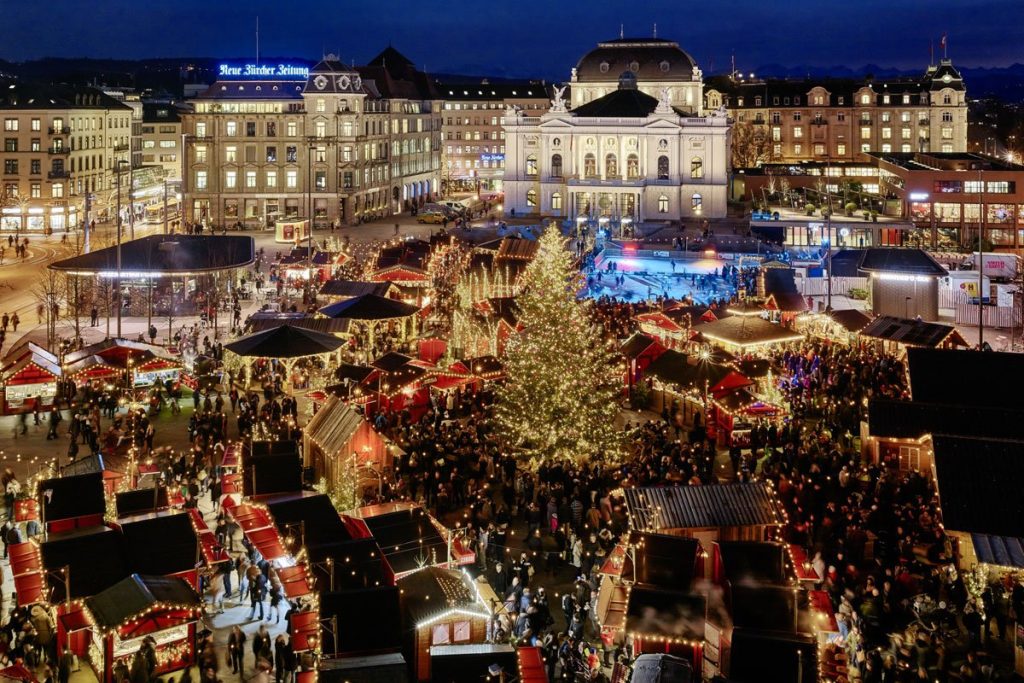
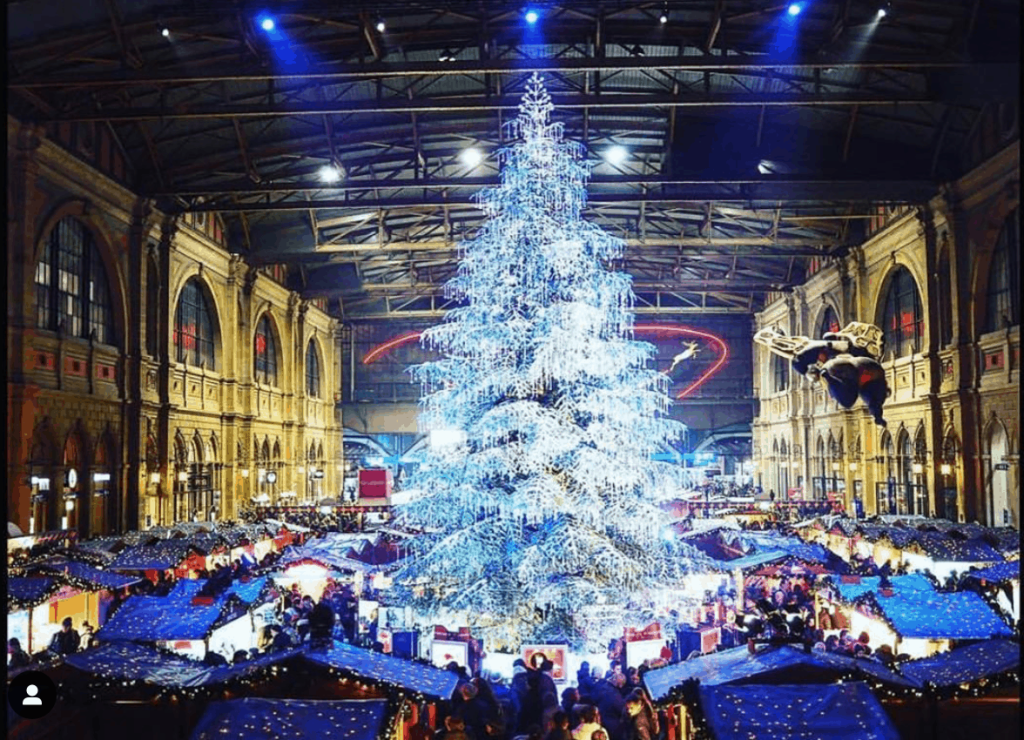
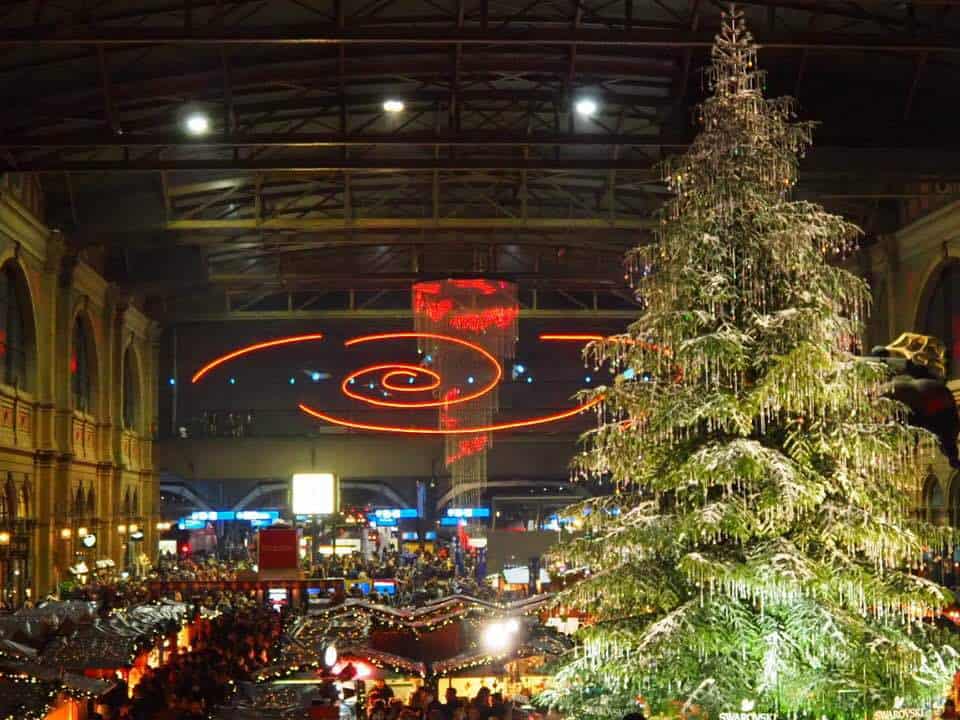
- CENTRAL EUROPE: and one of the scariest Christmas legend is “Krampus”. A demonic character, half-goat, half-demon monster, that wanders the streets with chains and bells looking for misbehaving children. He is the devilish companion of St. Nicholas. Krampus name derives from the German word Krampen meaning “claw.”
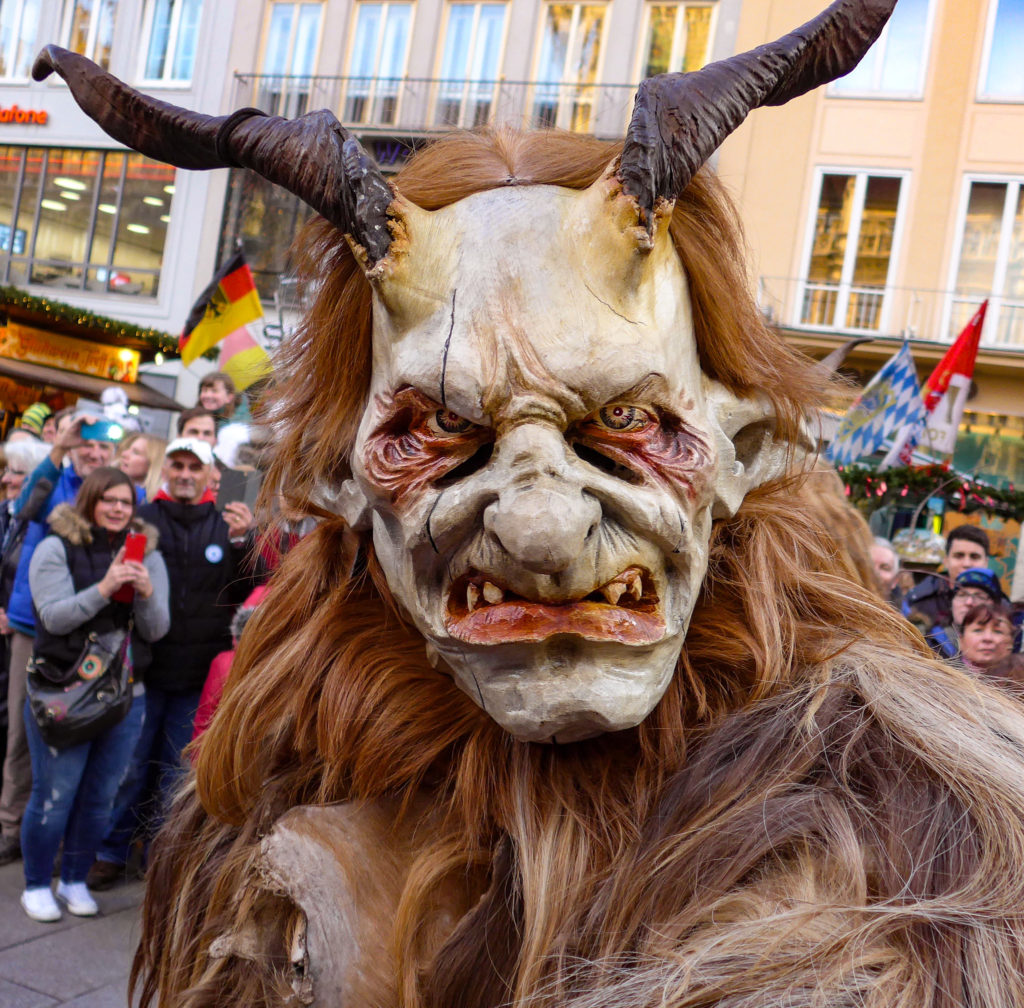

- DENMARK: people celebrate st. Lucia’s day on the 13th of december by paddling around copenhagen in kayaks lit up by christmas lights.
- Danish lovely tradition families follow: gather around the tree in a circle after the main Christmas meal, hold hands and sing Christmas carols together (usually after a few glasses of mulled wine!).
- Another Danish tradition: watch a different Christmas movie or TV show, every night.
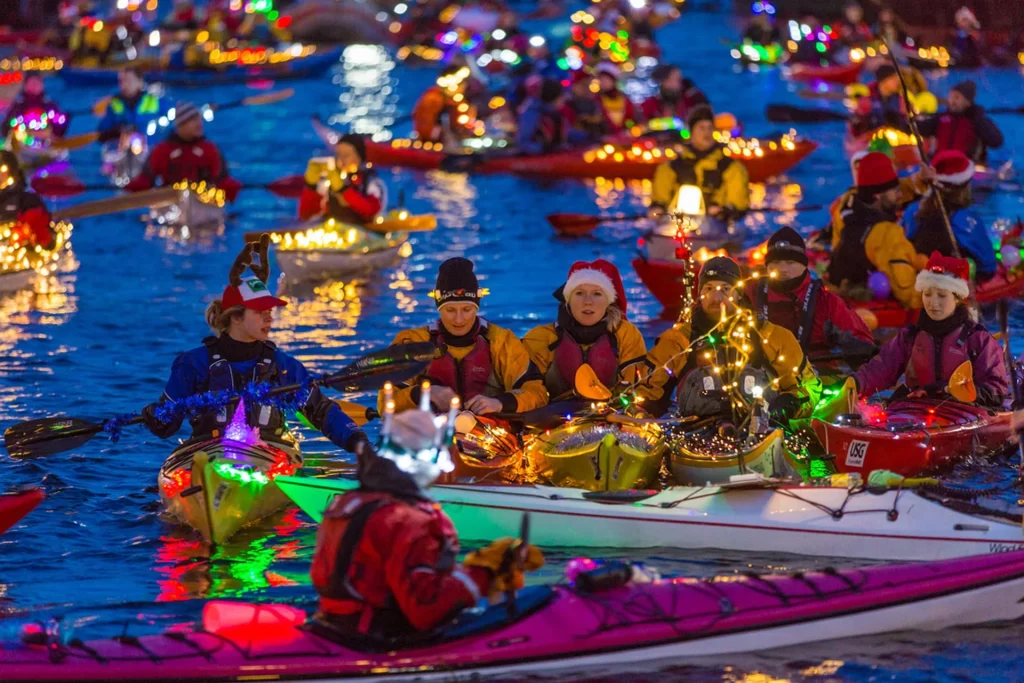
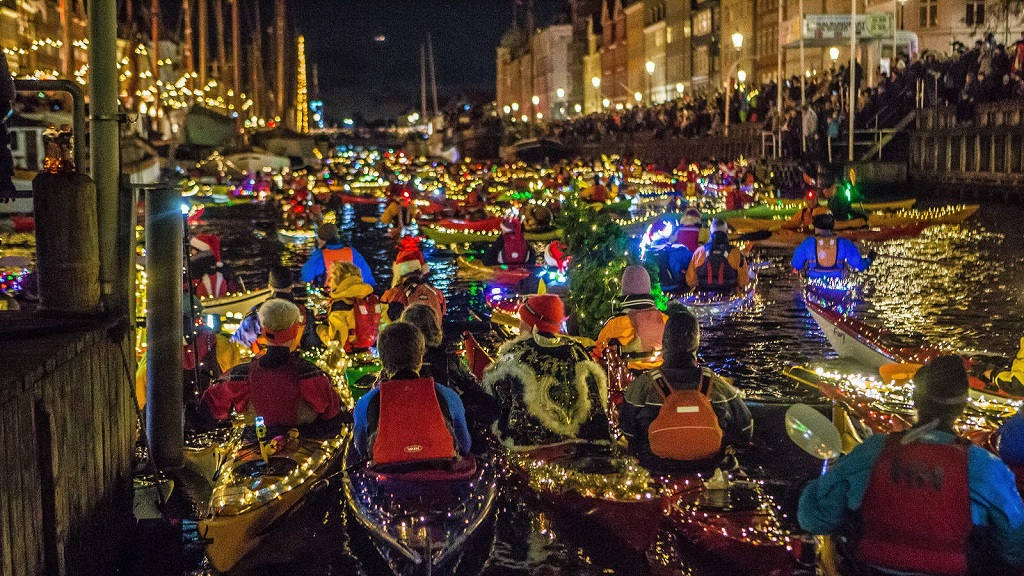
- GERMANY: Germans decorate their trees with pickle-shaped ornaments.
- Legend has it parents place a pickle in the Christmas tree after it is being fully decorated. Children with the best detective skills who find the pickle would get an extra present.

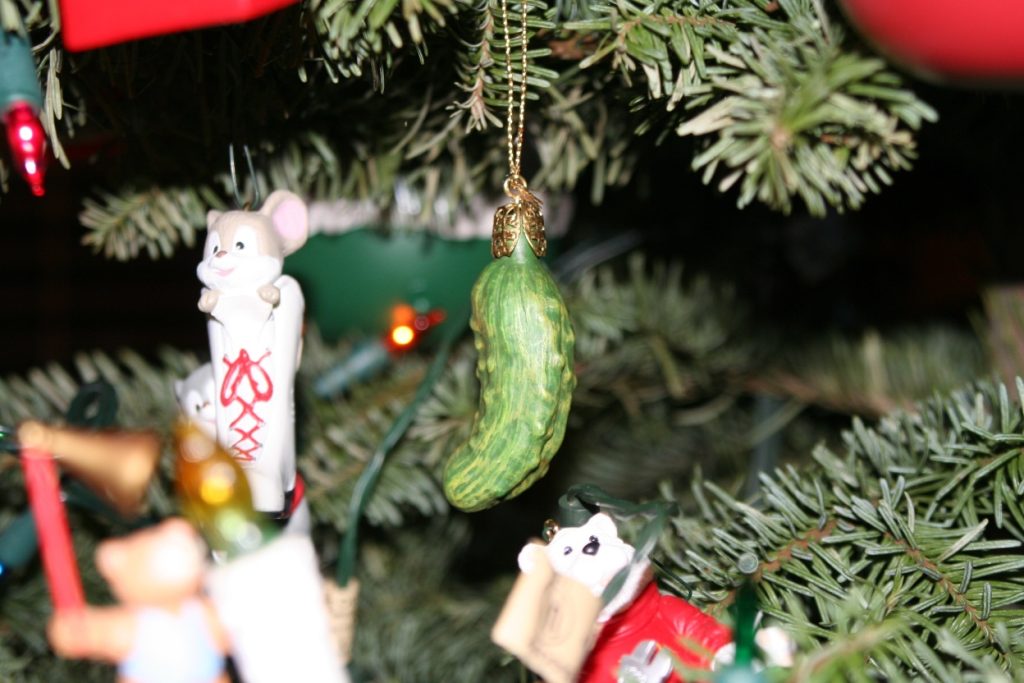
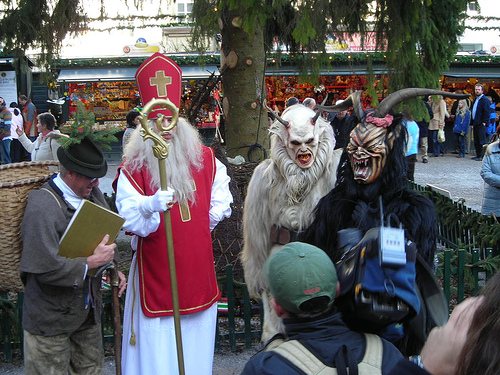
- THE NETHERLANDS: Dutch start as early as the 6th of December with St. Nicholas Day. Dutch children leave their shoes filled with treats and drawings by the windows to receive gifts in the morning. This is when Dutch celebrate Sinterklaas December 5th).
- Dutch have two (2) Christmas days. One Christmas is spent with one family, the other with the in-laws.


- SPAIN: Catalonian Christmas tradition, the Tió de Nadal (the “poop” log!). Every year on December 8th, the tió is brought in from the forest, covered with a blanket to keep it warm and fed treats to keep it full. Parents fill up the hollow log with sweets and chocolate. He is given so much food that, just before Christmas, he has to poop. On Christmas Eve, Catalans kids are rounded up and begin to hit the tió with a stick, while singing ‘poop sweets tió, if you don’t want to poop, we will hit you with the stick. And Tió de Nadal so it “poos” out sweets.
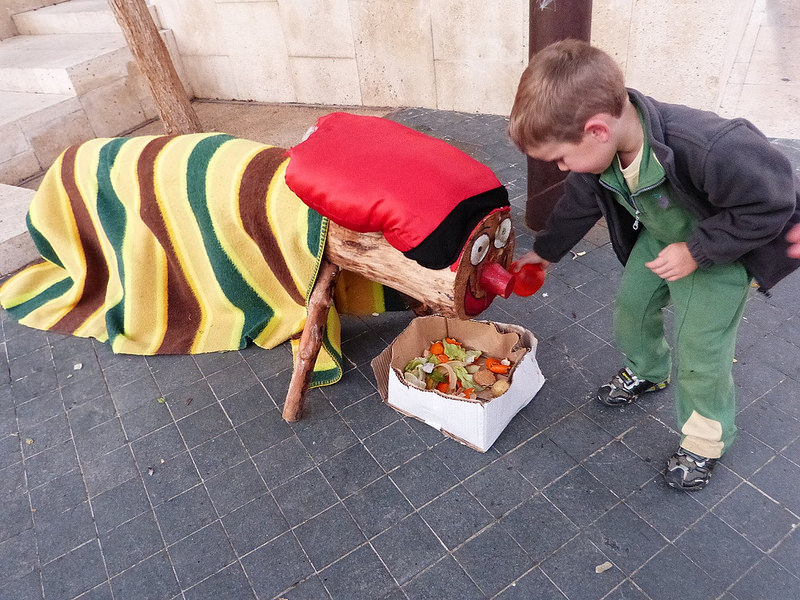
- HUNGARY: Locals make a Christmas wreath of four candles. Each Sunday in December, they’ll light one candle. The last is lit on Christmas Eve. Tree is put up, decorated with sweets.
- Christmas tree is brought in by angels on December 24th. Tree are decorated with kilos of a special candy called Szaloncukor (sweet fondant covered in chocolate and wrapped in shiny foil). The foil wrappers are empty by January 6th when the Christmas tree’s been taken off.Christmas custom: Cut an apple into as many slices as the number of family members around the dinner table, who then eat it together. It is believed to ensure they will still be sitting around the same table together the next year.
- Saint Nicholas or Mikulás is celebrated on December 6th. Children polish their shoes the night before, place them on their windowsills. If they have been good, shoes will be filled with sweets. If they have been naughty, Mikulás’ helper, Krampusz, a mischievous devil, will leave a bundle of sticks wrapped in foil instead.

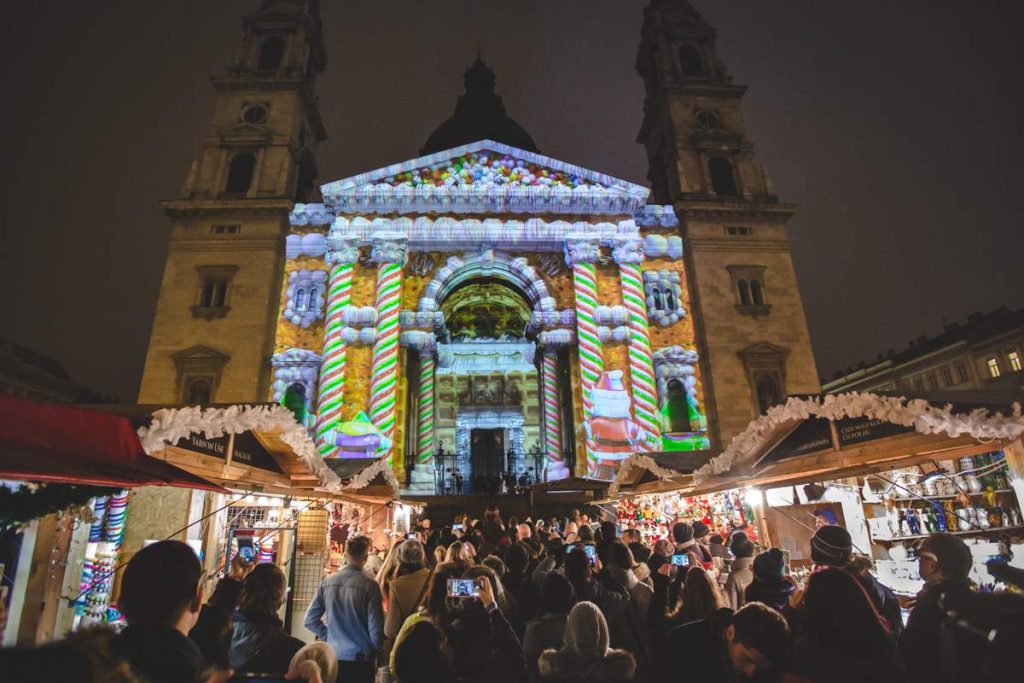
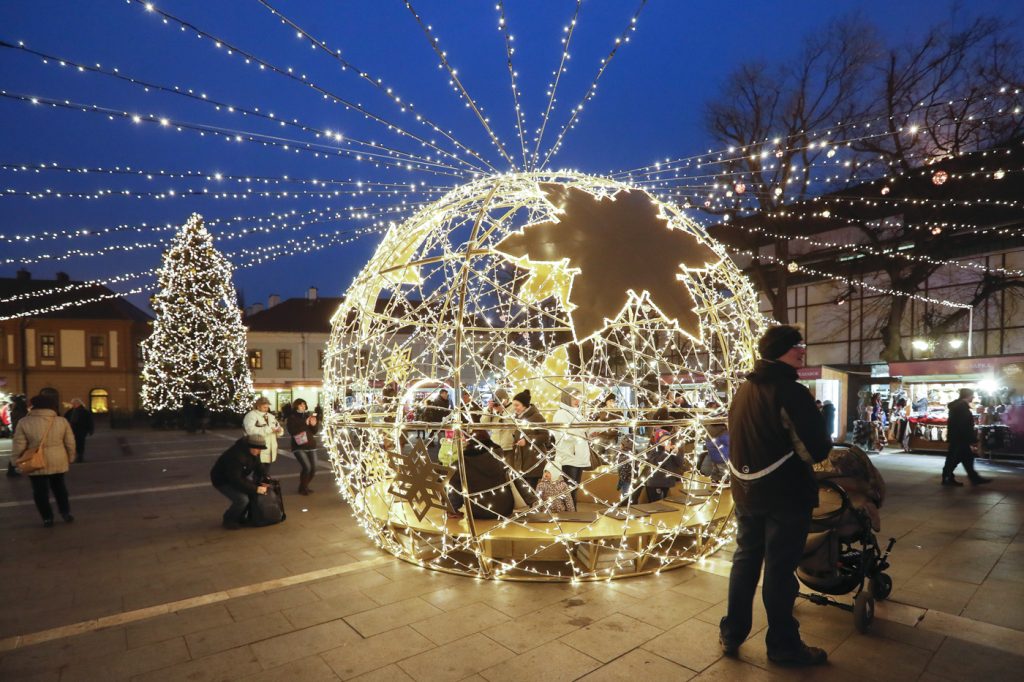
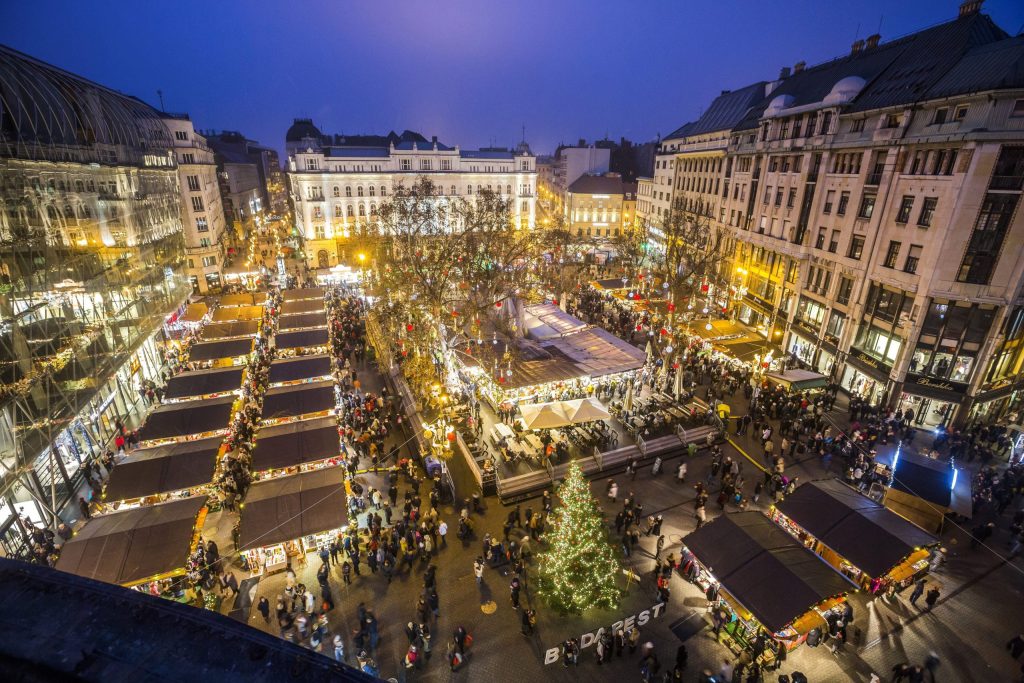
- ICELAND: People exchange books as gifts and tell a legend about a giant cat devouring everyone who doesn’t wear at least one new item on christmas.
- Celebrates 13 days of Christmas. Icelanders begin their festive celebrations on 12 December. On the 13-nights leading up to Christmas, Icelandic homes are visited by the 13 Yule Lads (“Jólasveinar”), creatures from festive Nordic folklore.




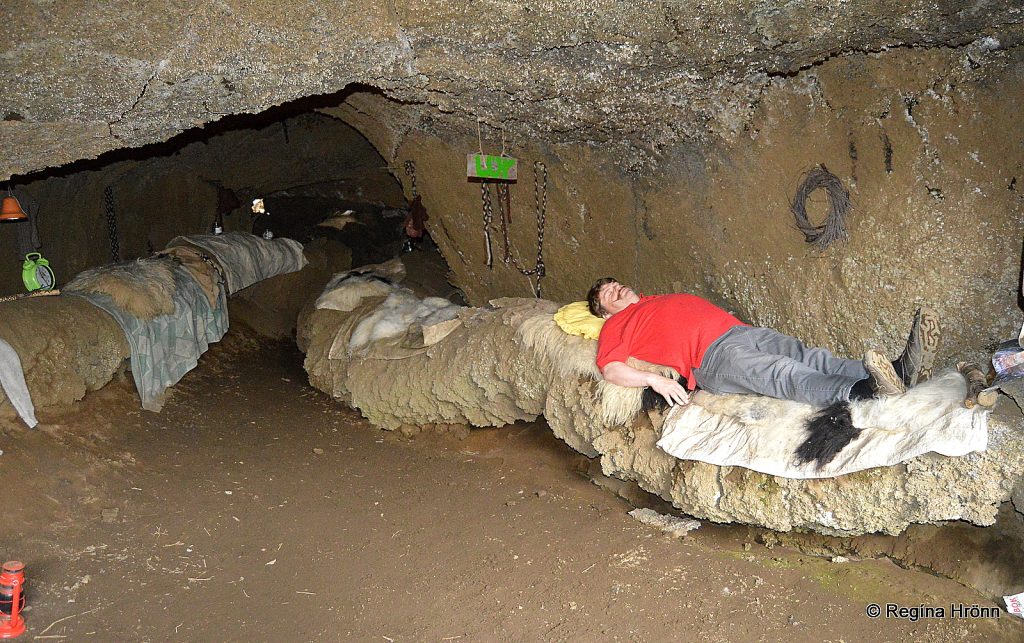
- FINLAND: At 12 noon on Christmas Eve, “Christmas peace” is declared and observed for 20 days. Finnish Christmas is quiet: people avoid crowds and noise. A Christmas Eve sermon followed by sauna bathing is an ancient Finnish Christmas ritual welcoming ancestral spirits.
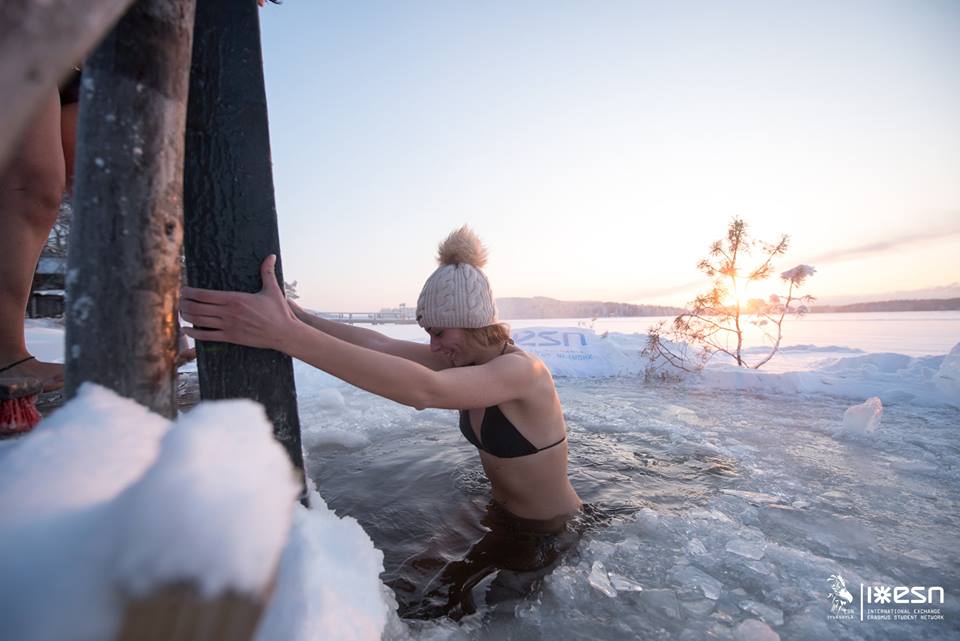

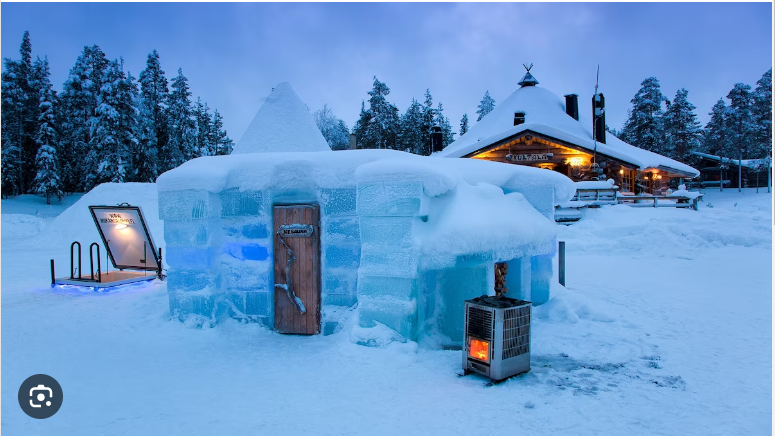
- IRELAND: The irish leave a lit red candle by the window to light the road to bethlehem for Mary and Joseph….and embark on a pub crawl including 12 pubs, pints, christmas sweaters, and creative games
- SWEDEN: Swedish families gather in front of TVs to watch vintage disney cartoons.
- Swedes turn Christmas gift unwrapping into a memorable routine i.e. write a short poem on the outside of each present, giving whoever is receiving it a clue as to what’s inside.
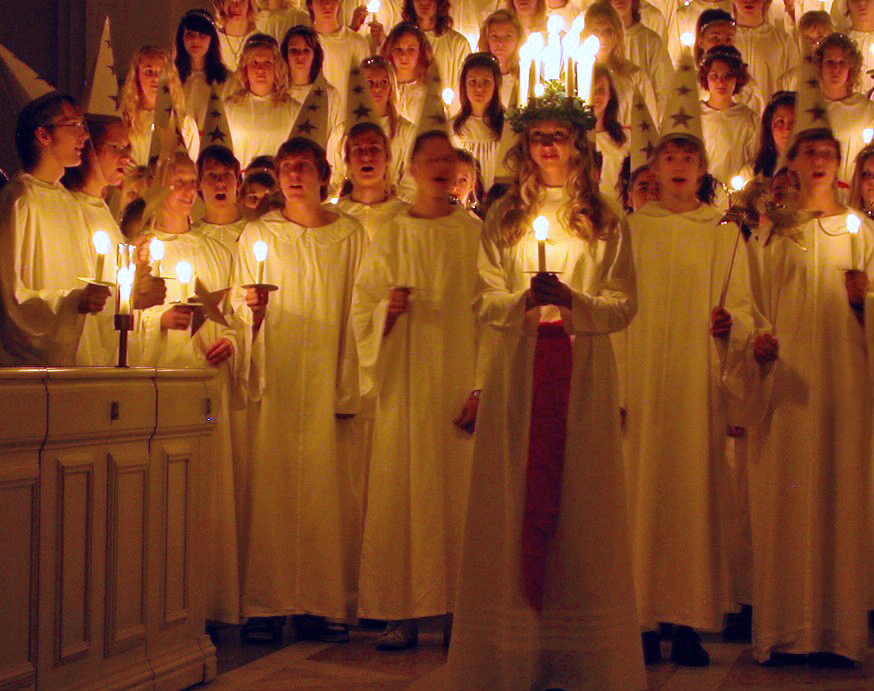
- UKRAINE: Ukrainians decorate their houses with spider webs.


- POLAND: people leave an extra setting for an unexpected guest during dinner, put a bit of hay under the tablecloth, and prepare 12 dishes.


- NORWAY (Julaften): Norwegians hide all brooms on christmas eve to avoid being kidnapped by witches and evil spirits roaming the world on this night!
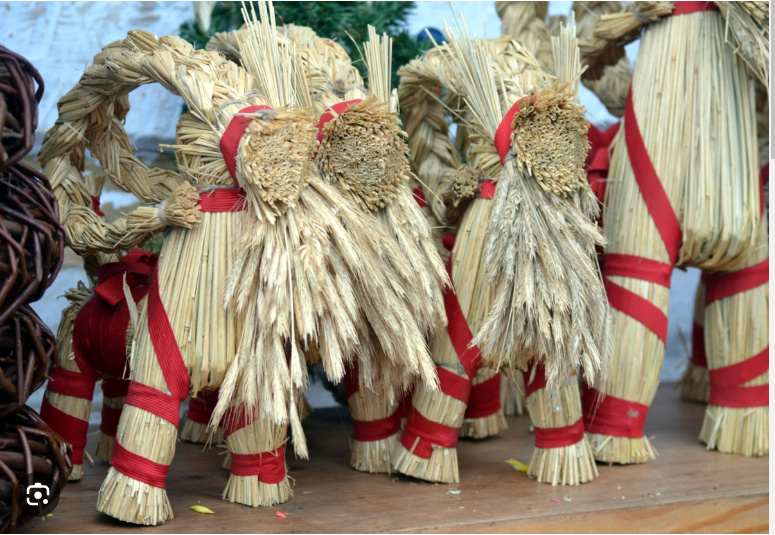
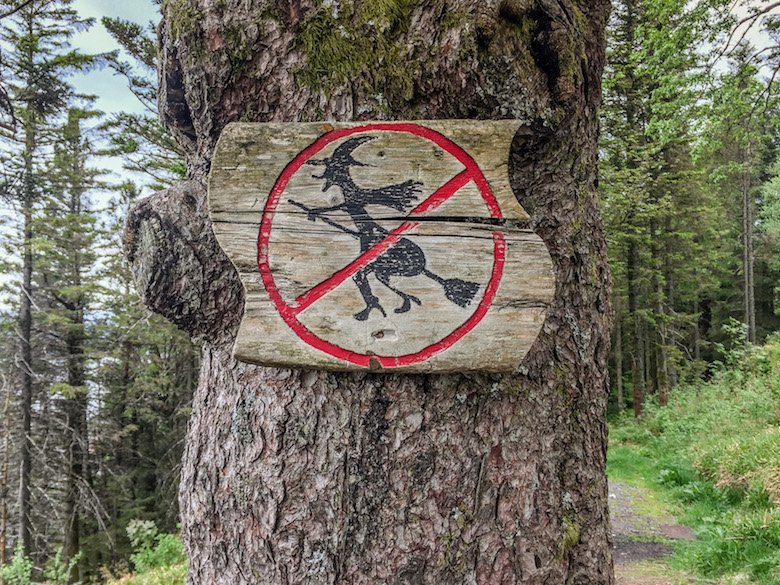
- WALES: The welsh parade a veiled horse skull decorated with ornaments and mounted on a stick around the town. Demanding entry into houses.
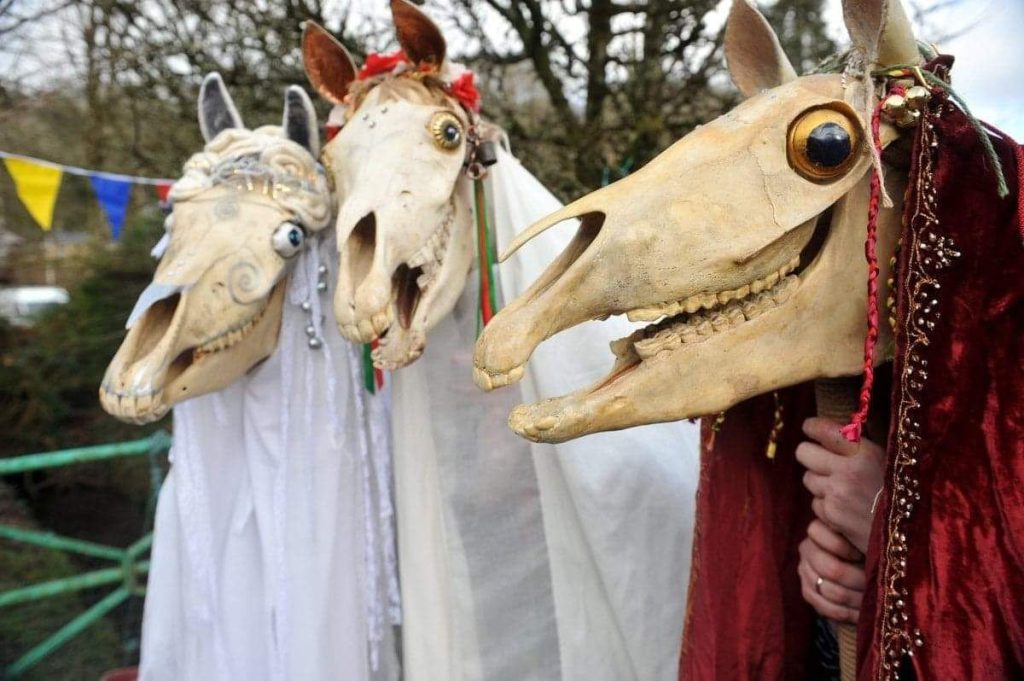
- ENGLAND: Christmas tree is a popular tradition since Prince Albert (Queen Victoria’s husband) who decorated one at Windsor Castle in 1841. This is where Father Christmas leaves gifts for children. In return, carrots, mince pies and beer are left out for him (and his reindeer) on Christmas Eve before children go to bed.


- CROATIA: One of the most important and unique Christmas traditions in Croatia is sowing the wheat (sijanje pšenice), which symbolizes fertility, new life, and its renewal.
- Preparations start early with Saint Nicholas Day on December 6th. Children clean their shoes and put them in a window. If they were good throughout the year, they would find sweets, and little presents in them. If they were naughty, they would get a golden switch.
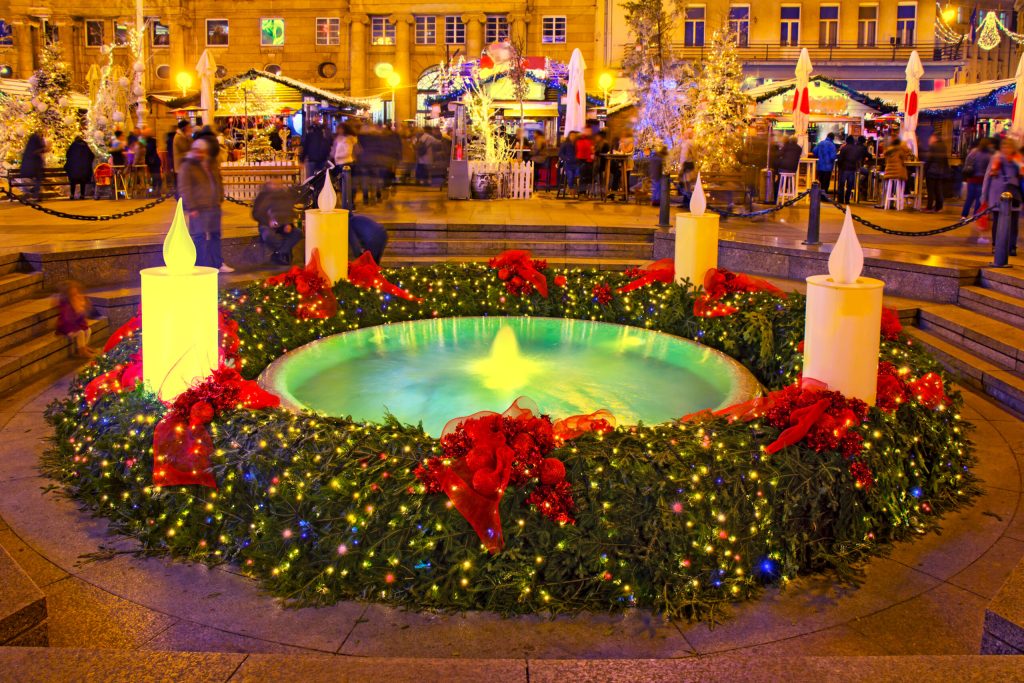
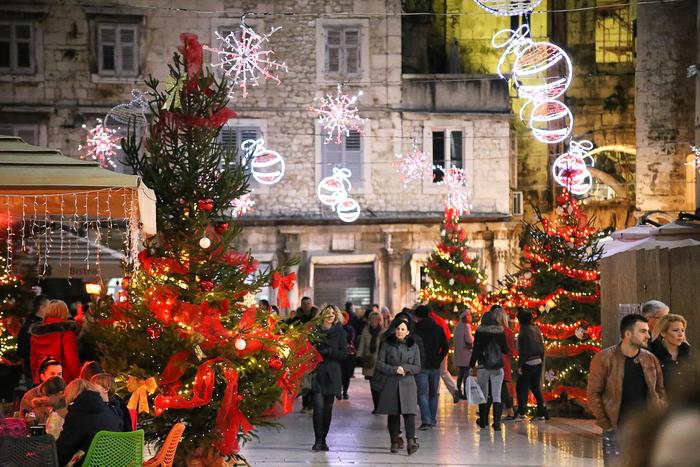
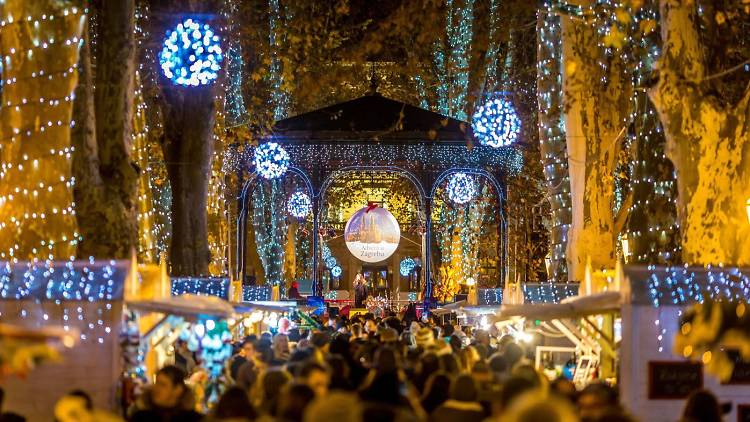
- RUSSIA: Christmas is celebrated on January 7th. Festivities are mostly linked to the New Year celebration. Usually, there is a New Year’s Tree with different decorations such as balls, toys, cones, lights and a star on the top.
- December 31st Russians watch the movie ‘The Irony of Fate’. It became a part of the holiday’s tradition.
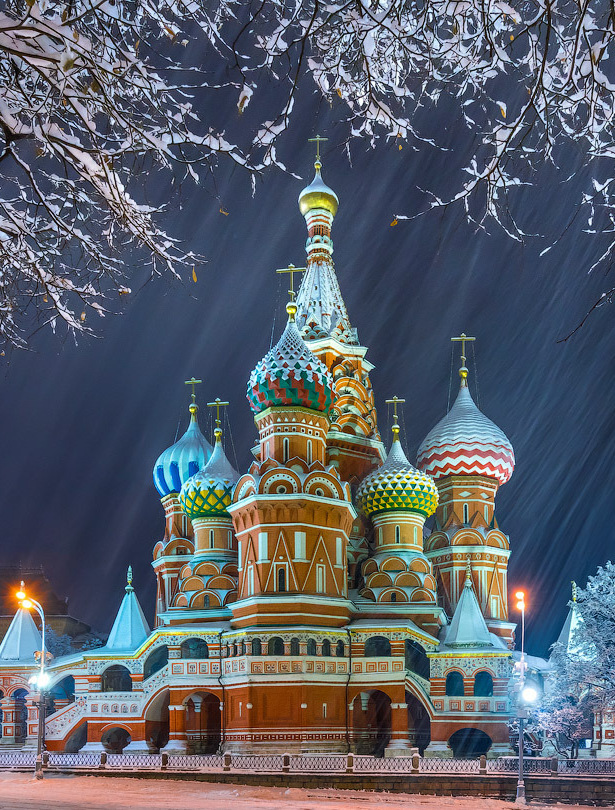



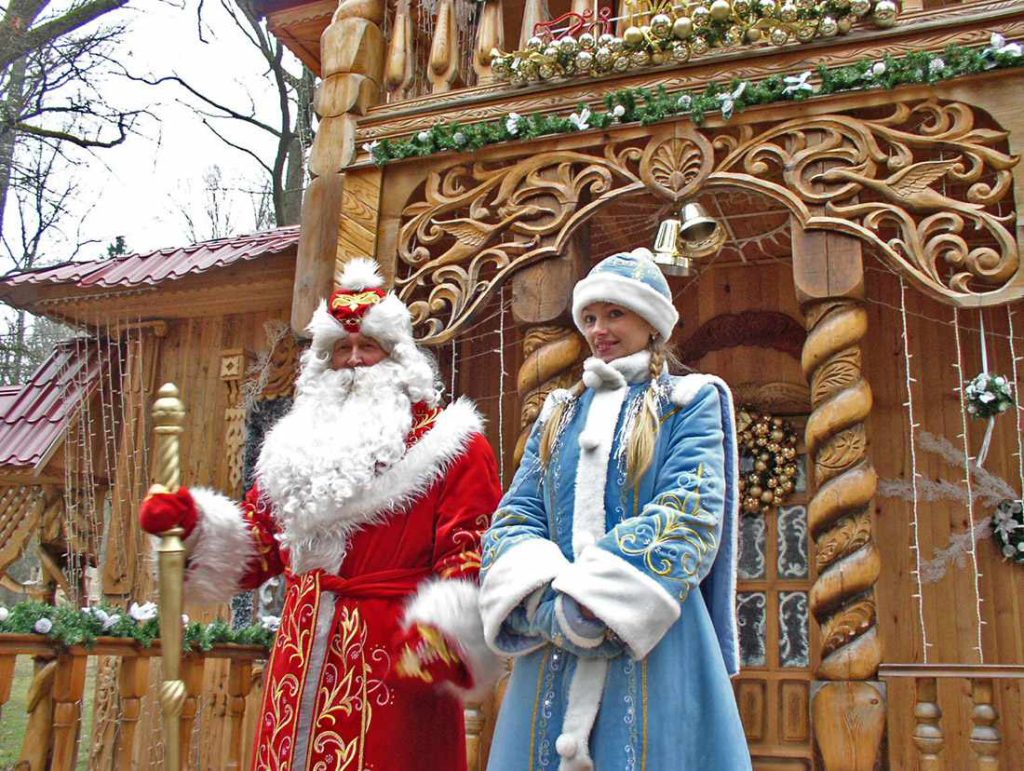
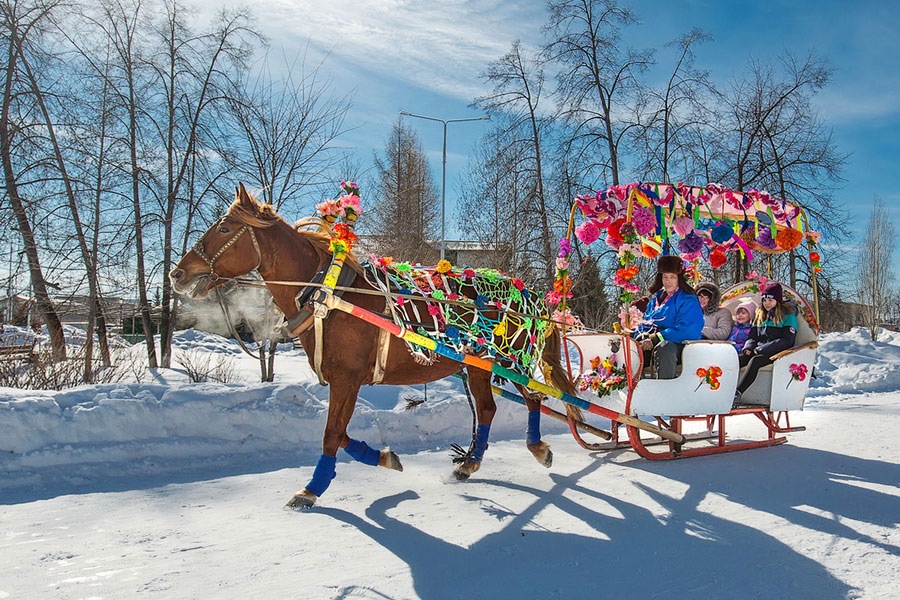
- BETHLEHEM: celebrates Christmas three times a year, according to Christians three different churches.
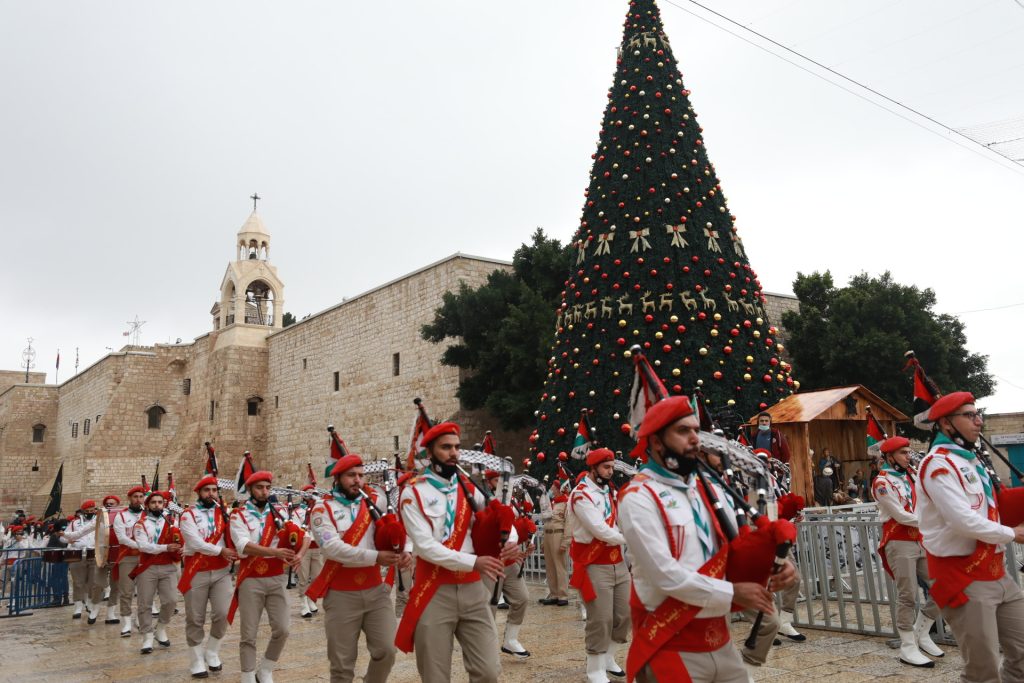
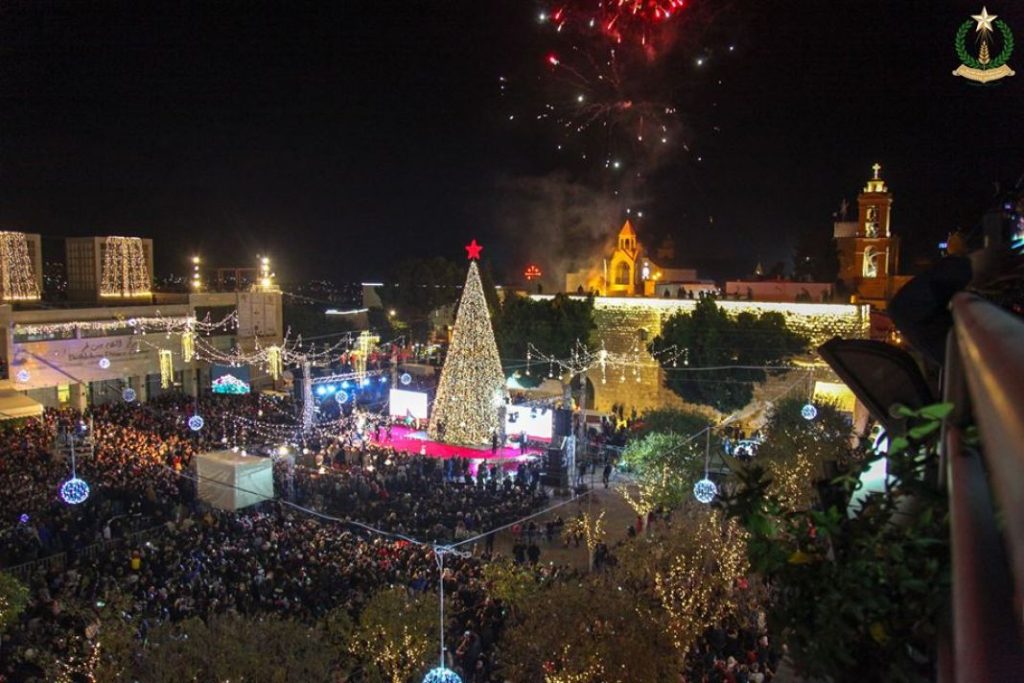
Christmas Fun Facts
- A Facebook study in 2010 revealed that two weeks before Christmas is the most popular time for couples to break up.
- It is a tradition in Japan to eat KFC for Christmas. Orders must be placed two months in advance.


- 1 in 3 men wait until Christmas Eve to do their shopping.
- In 2012, 15,000 holiday decorating injuries were reported during November and December. 34% of all injuries being falls.
- The biggest display of lights ever made was in Australia. It has 1,194,380 LEDs covering 3,865m2.
- The city of Vancouver, Canada claims to be the birthplace of the first “ugly Christmas sweater” party.
- The word “Merry” in Merry Christmas was not always accepted because being merry used to signify slight intoxication.
- In 1980, the highest selling Christmas toy was a Rubik’s cube for $1.99. It now retails for $10.
Do you know any amazing facts we missed?
Email us at [email protected]
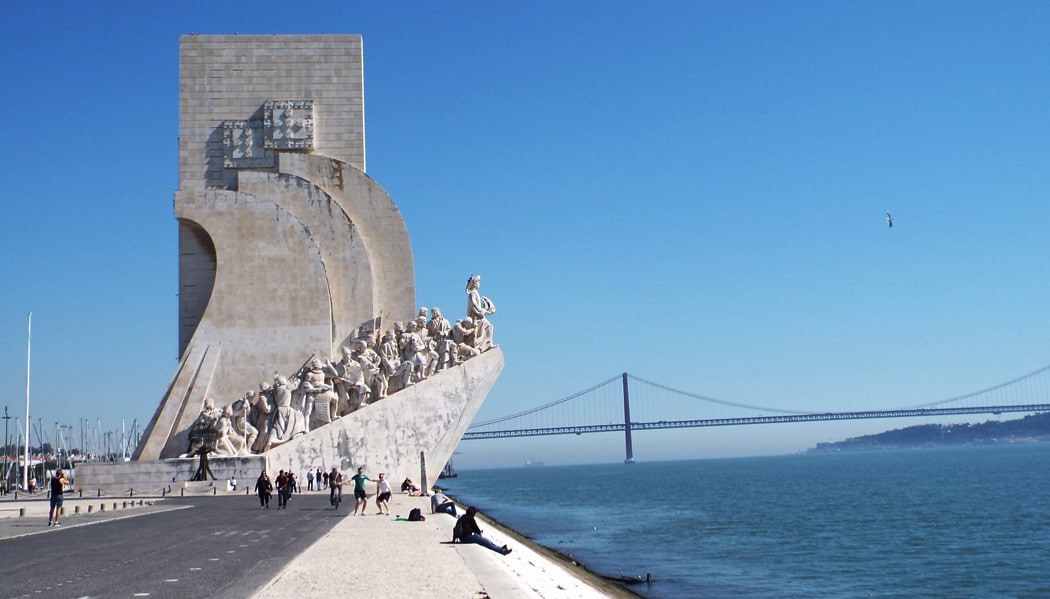
35 FACTS ABOUT PORTUGAL
35 FACTS ABOUT PORTUGAL
- Portugal is one of the oldest nations in Europe. The borders of the nation of Portugal were defined in 1139, making it not only one of the oldest nations in the world but arguably in all of Europe.
- Fun fact: Lisbon is actually 4 centuries older than Rome. The territory had been settled by various empires and civilizations such as by the Phoenicians in 1200 BC.
- Lisbon has the oldest operating bookstore in the world. Located in Chiado, Livraria Bertrand holds the Guinness world record for the world’s oldest bookstore still in operation, founded in 1732.
- Portugal is one of the most peaceful countries. In 2021, Portugal came in 4th place on the Global Peace Index (GPI), making it one of the most peaceful countries in the world, behind Iceland, New Zealand, and Denmark.
- There are over 250 million Portuguese speakers around the globe.
- Portuguese is one of the 10 most spoken languages in the world, + 250 million speakers around the globe.
- Portuguese is the official language in 9 countries: Brazil, Mozambique, Angola, Portugal, Guinea-Bissau, East Timor, Equatorial Guinea, Macau, Cape Verde, and São Tomé and Príncipe.
6. Portugal is home to the world’s largest cork forest.
- Portugal is the biggest cork producer in the world; e.g. more than 50% of the world’s cork supply.
- Home to the world’s largest cork forests, making up 34% of the world’s area of cork forests.
7. Lisbon suffered one of the world’s largest natural disasters in world history.
- An earthquake of 7.7 magnitude, followed by a tsunami 40 minutes later.
8. Portugal lived under a fascist dictatorship for over 40 years.
- Portuguese lived 40 years under a fascist dictatorship of Antonio Salazar. On the 25 of April 1974 the “Carnation Revolution”, a peaceful military coup, overthrew Salazar.
9. The maximum prison sentence in Portugal is 25 years.
10. The biggest waves ever surfed are in Portugal. Nazaré is the go-to for surfing huge waves.
11. The Sanctuary of Fatima is visited by around 8 million travellers every year.
12. Portugal is a European leader in sustainable energy.
13. Vasco da Gama bridge was the longest in Europe, now the 2nd after the Crimean Bridge.
14. Portugal is known as the “country of tiles”.
- The azulejo is also commonly displayed in Portuguese homes, train stations, restaurants, fountains, streets, buildings, and monuments.
15. First maritime power.
16. Drugs are Decriminalised.
17. Portugal offers a treasure trove of natural, historical, and cultural wonders.
- From the Azores and Madeira to the sun-splashed Algarve and even popular cities like Lisbon and Porto.
18. Portugal occupies the westernmost point in Europe and has a long, exposed coastline.
19. The Portuguese were the first Europeans to reach Japan in the 16th century.
- Japenese words e.g. pão means bread and sabato (Saturday).
20. The secret recipe for Pastéis de Nata (custard tart) was kept since the 19th century.
21. There’s always time for coffee.
22. Portugal has one of the world’s oldest universities.
23. Portuguese explorer, Ferdinand Magellan, is said to have led the 1st expedition to circumnavigate the globe.
24. Port Wine is Portugal’s most famous export and its national drink.
25. Home to 17 UNESCO World Heritage Sites,=.
26. The “British” habit of drinking tea was taken to England by the Portuguese princess Catherine of Bragança.
27. Fado music added to the UNESCO Intangible Cultural Heritage Lists.
- Famous singers: Dulce Pontes, Carlos do Carmo, Mariza, Mafalda Arnauth, Amalia Rodrigues called the “Queen of Fado”.
- Fado music is a form of Portuguese singing that dates back to the 1820s and can often be heard in pubs, cafes, and restaurants. Fado music is about the hard realities of daily life, resignation and hopefulness. It can be described by using the Portuguese word “saudade”, which means “longing” and stands for a feeling of loss and melancholy.
28. The Romans took 200 years to conquer Portugal.
29. In 1494, Portugal and Spain divided the world in 2 (treaty of Tordesillas).
- Portugal the eastern half of the “New Word,” including Brazil, Africa, and Asia.
30. Portuguese Empire was the 1st global empire in history! longest-lived colonial power lasting almost 6 centuries.
31. Portugal once had a dead Queen: King Pedro I (in 1357) proclaimed his Dead lover, Ines de Castro, Queen.
32. Portuguese are fatalists sang in Fado music.
33. Portugal had a massive influence on world cuisine.
- Portuguese Jesuit missionaries took tempura to Japan.
- Invented Piri-Piri sauce.
- Introduced chili pepper potatoes and tomatoes to India and Thailand.
34. Portugal is 95% water. The ocean area is about 18.7 times the land area.
35. Portuguese love football.
Weird Portugal facts and records
- 2010, Porto hosted the world’s largest Santa Claus parade. 14,963 people donned Santa outfits.
- 2012, a giant firework rocket (13.4 kg) was used in Oporto and Gaia.
- 2012, Portugal (in Santarém) made the world’s largest omelet: 55 people, 6 hours, 145,000 eggs.
- The above referred largest dining table in the World!
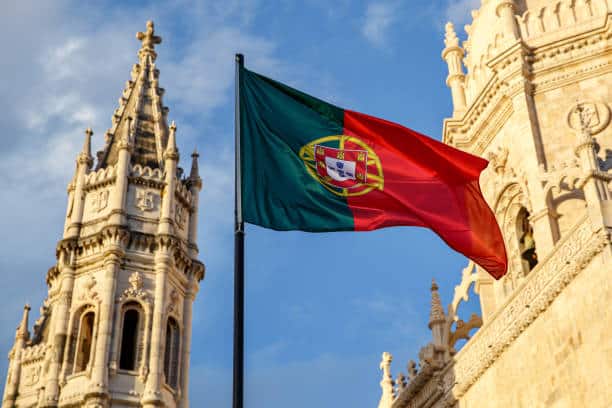
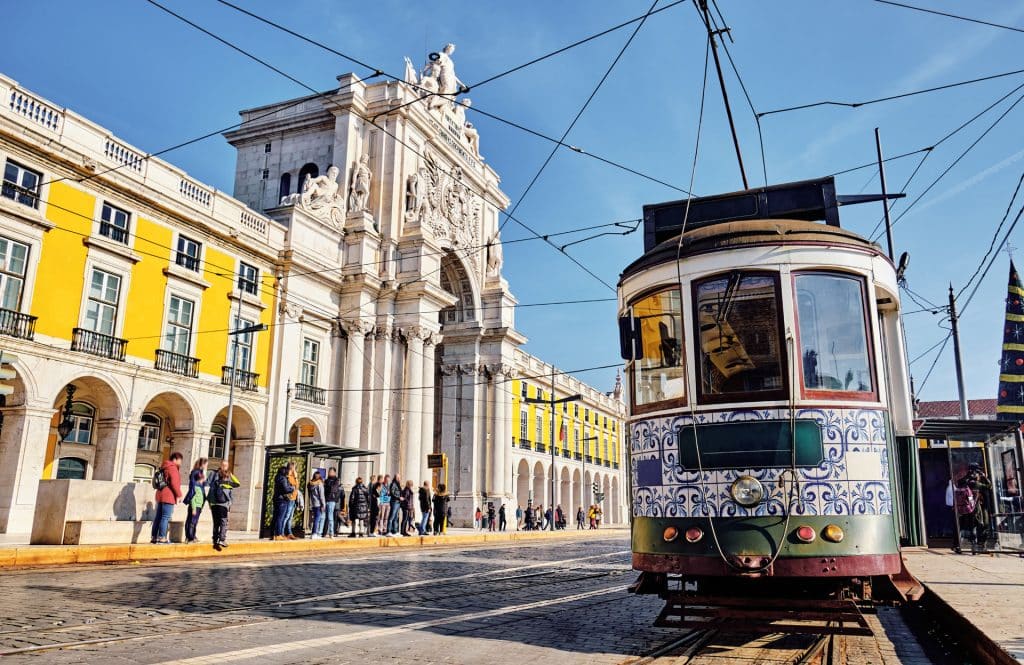
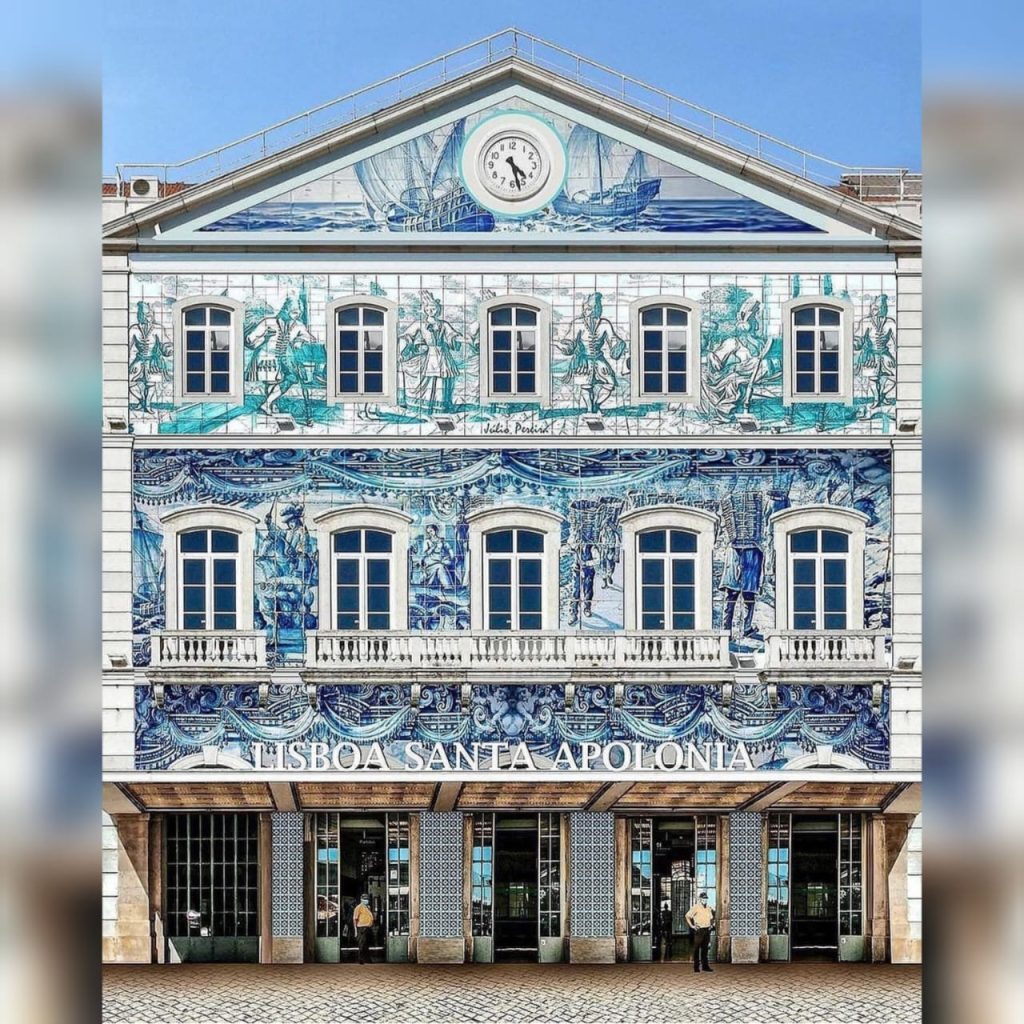
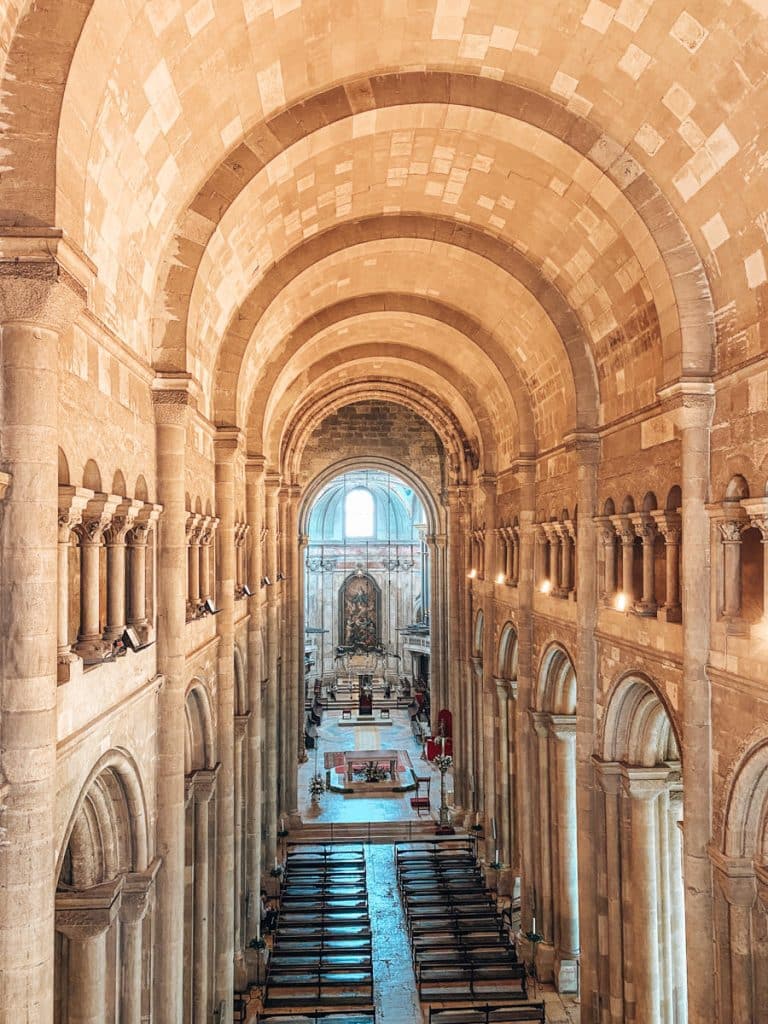
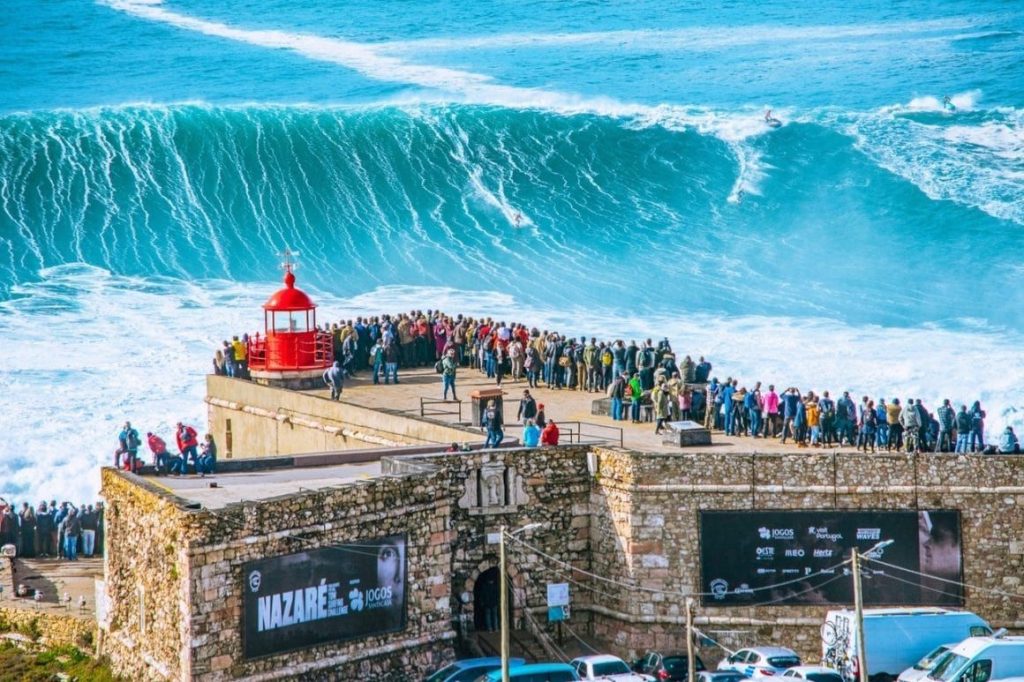
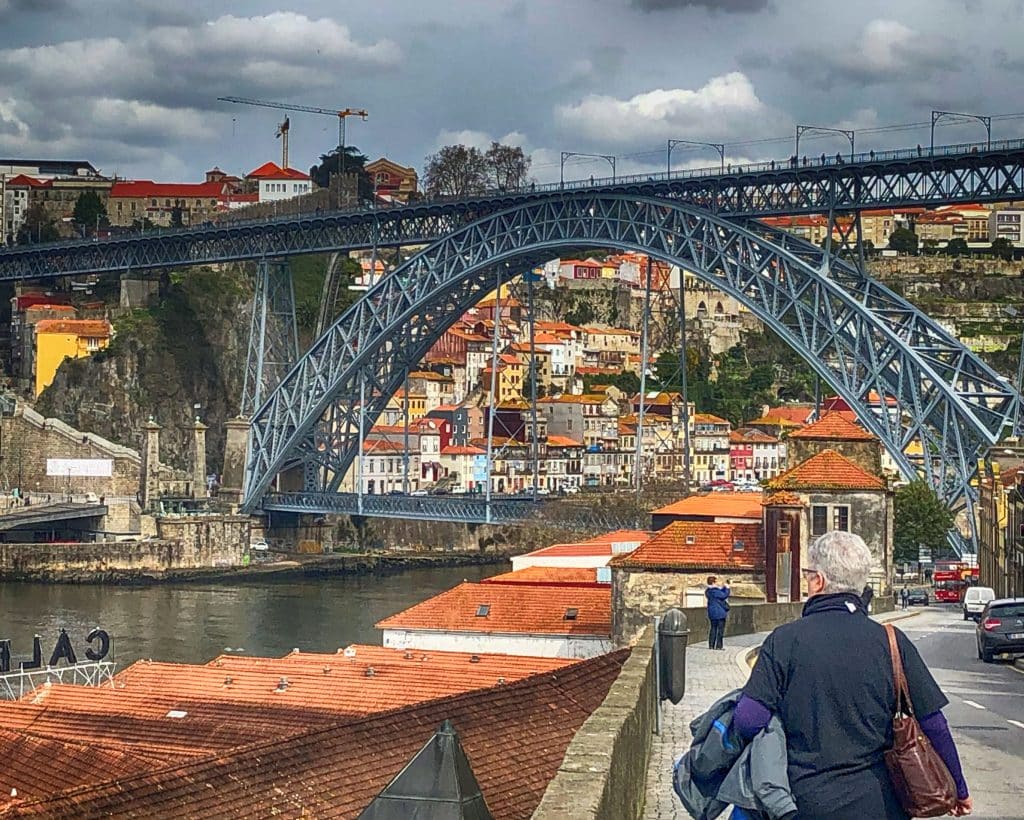
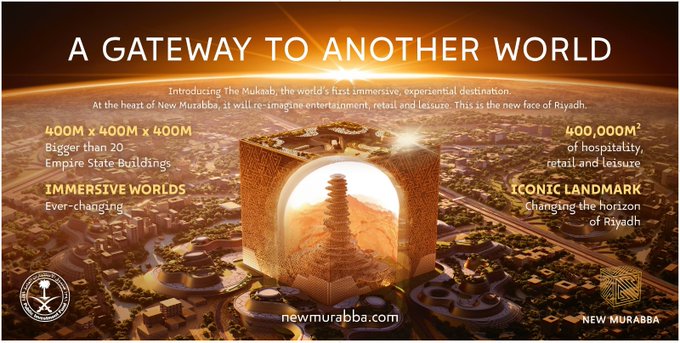
Over the past few years, Saudi Arabia has built a reputation for challenging the boundaries of urban design with projects such as NEOM. These boundaries are once again being tested with the New Murabba project which will be developing the world’s largest modern downtown in Riyadh. The crown jewel of this development is undoubtedly The Mukaab, an iconic landmark that will end up defining Riyadh’s skyline.
For more details, please click on the link:
Saudi Arabia aims to develop the world’s largest modern downtown in Riyadh as part of Saudi Vision 2030 plan
It looks like a city out of a science fiction movie: Space pods, flying dragons and floating rocks. But this is the birthplace of Islam, Saudi Arabia, which wants to transform its capital into one of “the most livable cities on Earth.”
…big enough to fit 20 Empire State buildings. It offers “an immersive experience” with landscapes changing from outer space to green vistas, …. The project is due to be completed in 2030.
For more details, please click on the link:
https://edition.cnn.com/2023/02/20/middleeast/saudi-arabia-mukaab-mime-intl/index.html
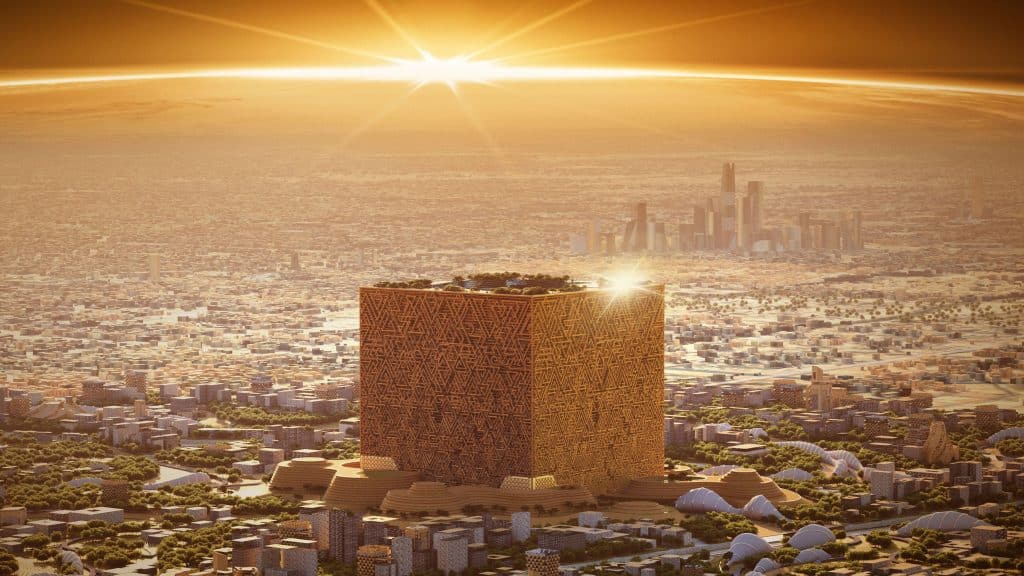

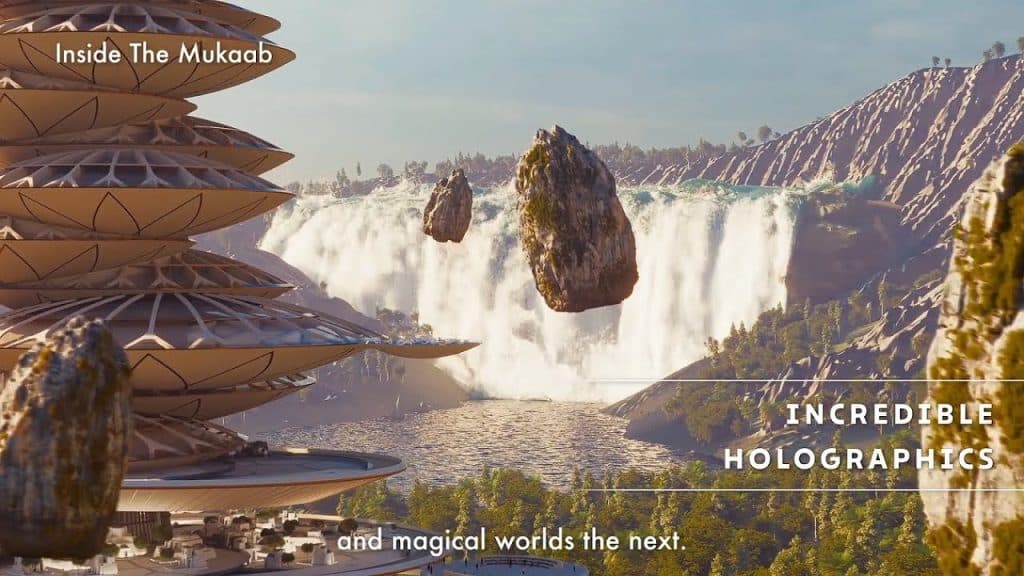
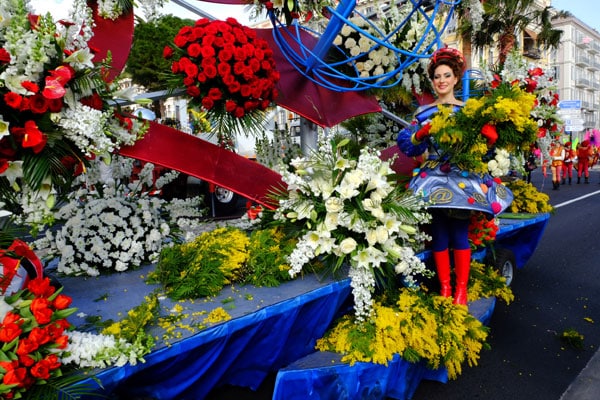
from February 10 to 26, 2023
Nice Carnival is one of the biggest carnivals in the world! Every year thousands of visitors come to take part. Two top events: the flower battles and the carnival parade.
Here we are, winter is back! The best season to treat yourself with a short trip to end or start the year on a high note after the Christmas festivities. Choose a trip which includes typical villages, ski resorts as well as sunny beaches and festive events! An exotic destination? No! Just a winter weekend on the French Riviera!
Here are a few suggestions of themed weekends to enjoy and discover the beautiful Riviera in a different light during the winter season! Find the perfect combination for your winter weekend with a destination offering unique, authentic stays.
THE NICE CARNIVAL
The Nice Carnival is one of the biggest in France and most famous in the world! For 2 weeks (and 3 weekends) in February, experience a succession of night shows and decorated floats in a joyful musical atmosphere! A battle of the flowers takes place every year: 20 flowered floats parade in the streets and distribute over 100,000 regional flowers to the public. A grandiose show, filled with enchantment and colours!
During your stay, take the opportunity to visit Nice’s town centre: history, culture, art and gastronomy, the city has a lot to offer.
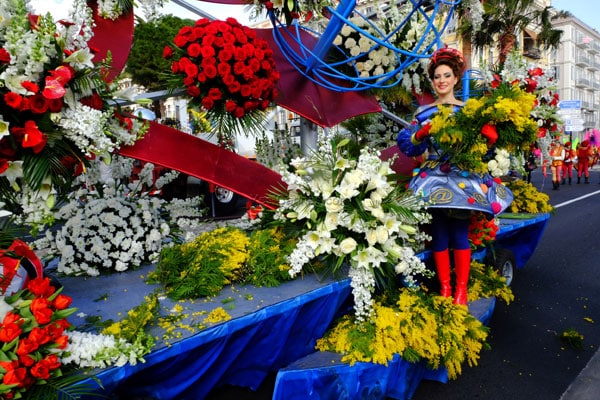
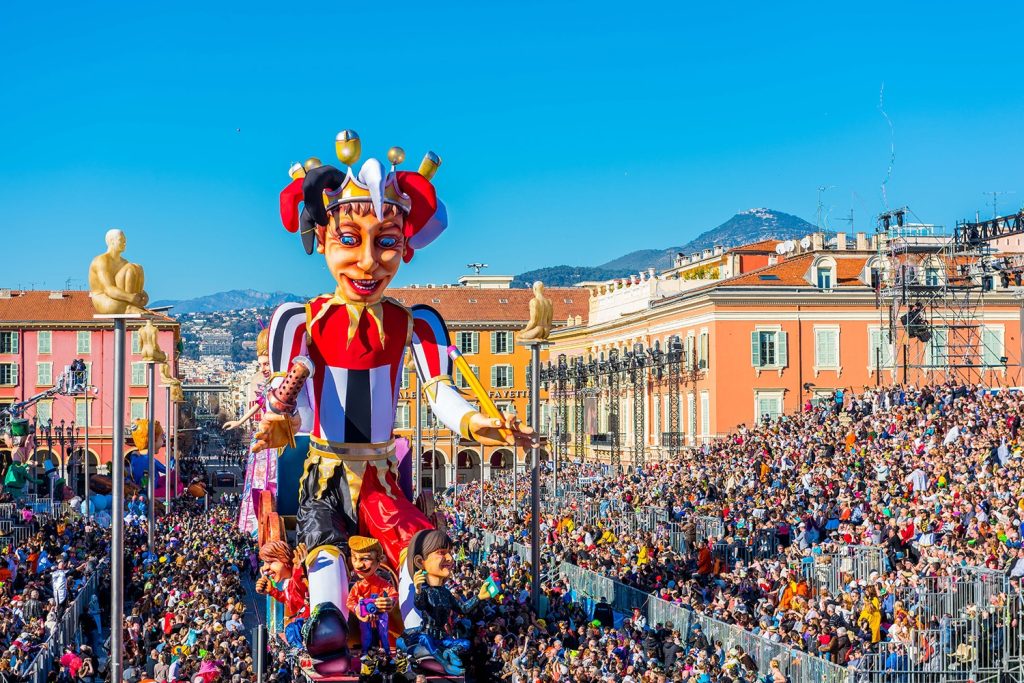
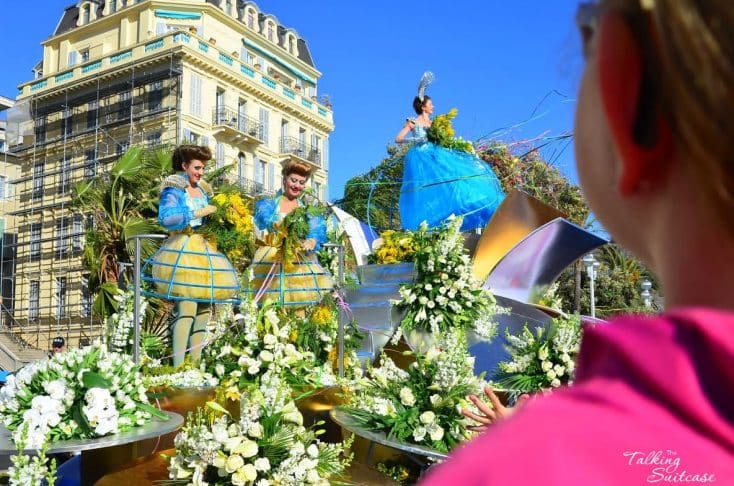
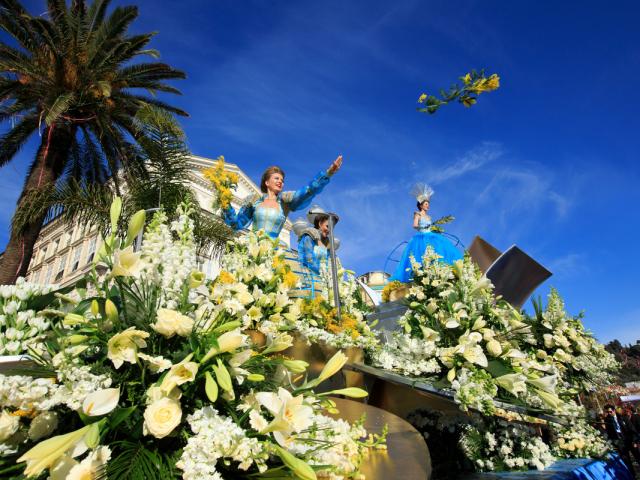
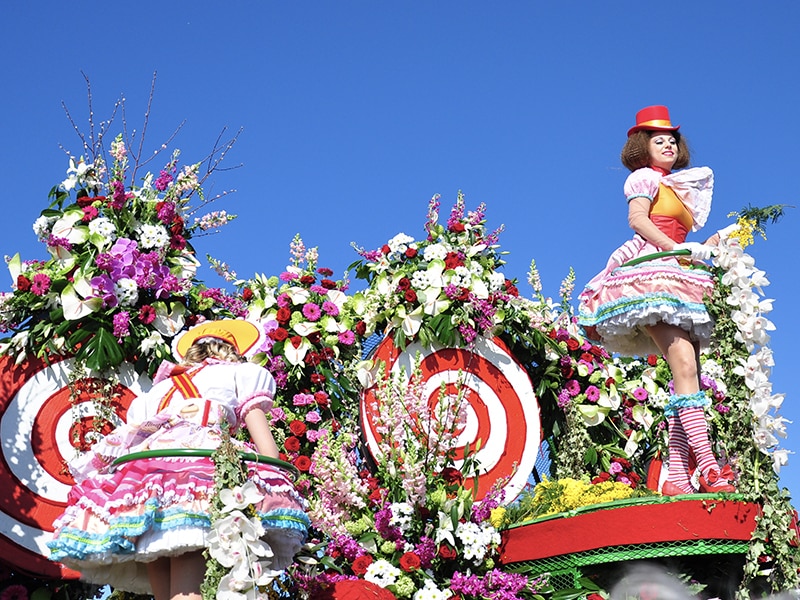
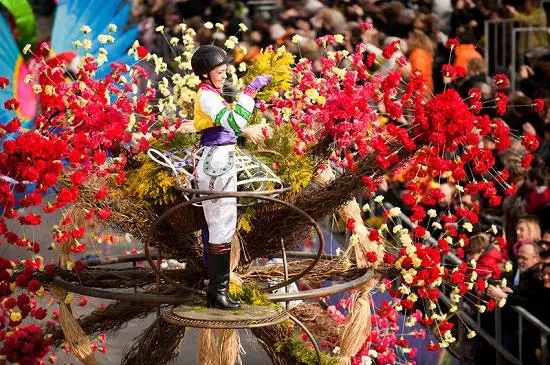
THE FÊTE DU CITRON (LEMON FESTIVAL) IN MENTON!
Insatiable zest for life! Lemon, pulp and cocktail lovers, welcome to the city of Menton for an event that’s unique in the world: the Fete du Citron. This winter, during your stay on the Côte d’Azur French Riviera, take a few days to experience this spectacular event which takes place in February and lasts 15 days.
The programme: discovering the lemon in all of its aspects!
● Taking a tour of the Biovès Gardens with its sumptuous citrus sculptures
● Taking part in exhibitions and Bloemencorso parades by day or by night
● Taking a tour of the Crafts Fair and the Orchid Festival in the Palais de l’Europe
● Dancing to the rhythm of the marching bands, shows and folklore…
● Enjoying the highlight of the show in front of the firework
Naturally, the city’s various bars and restaurants have it at heart to give a taste of the famous fruit: in a dish, in a dessert or in a cocktail (to be consumed in moderation of course).
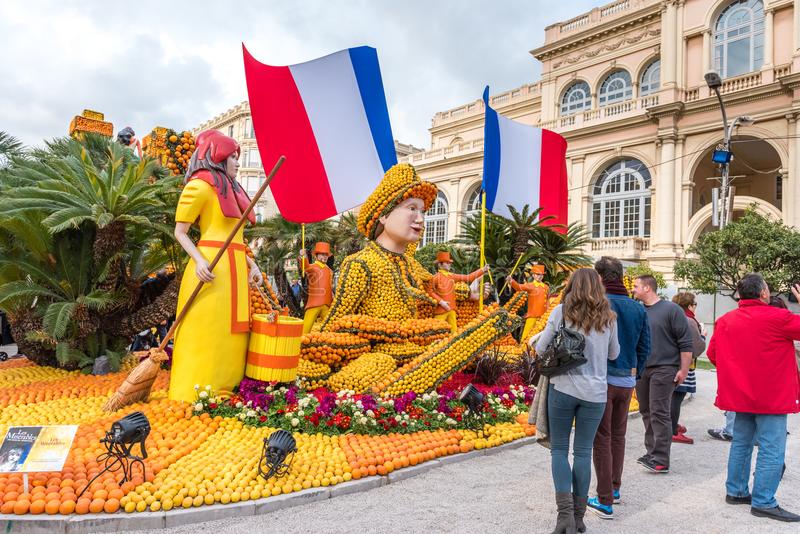
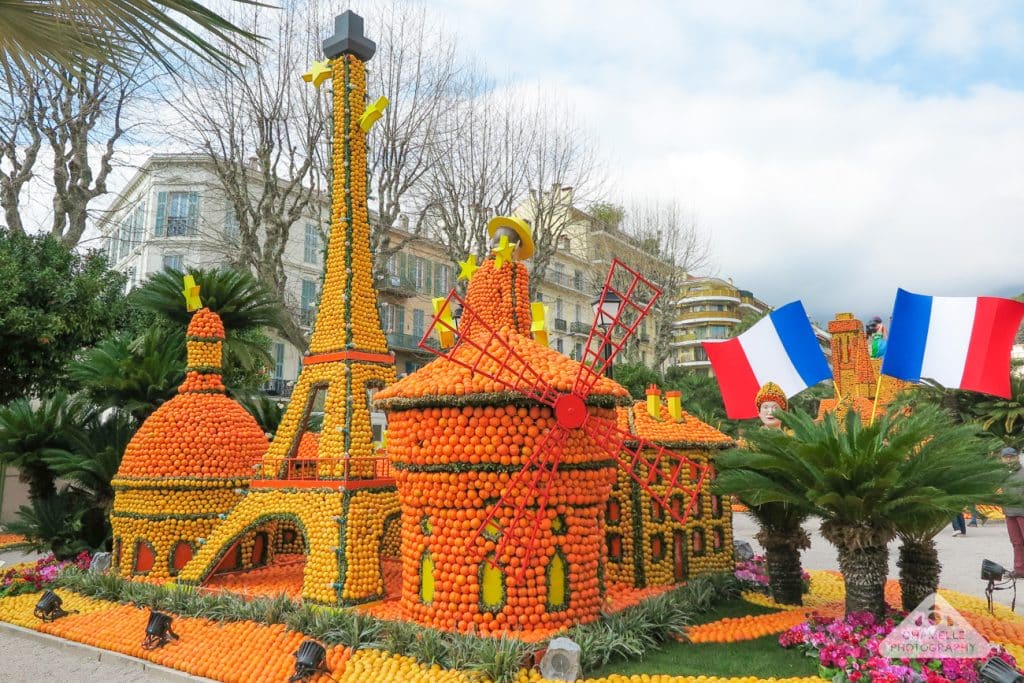
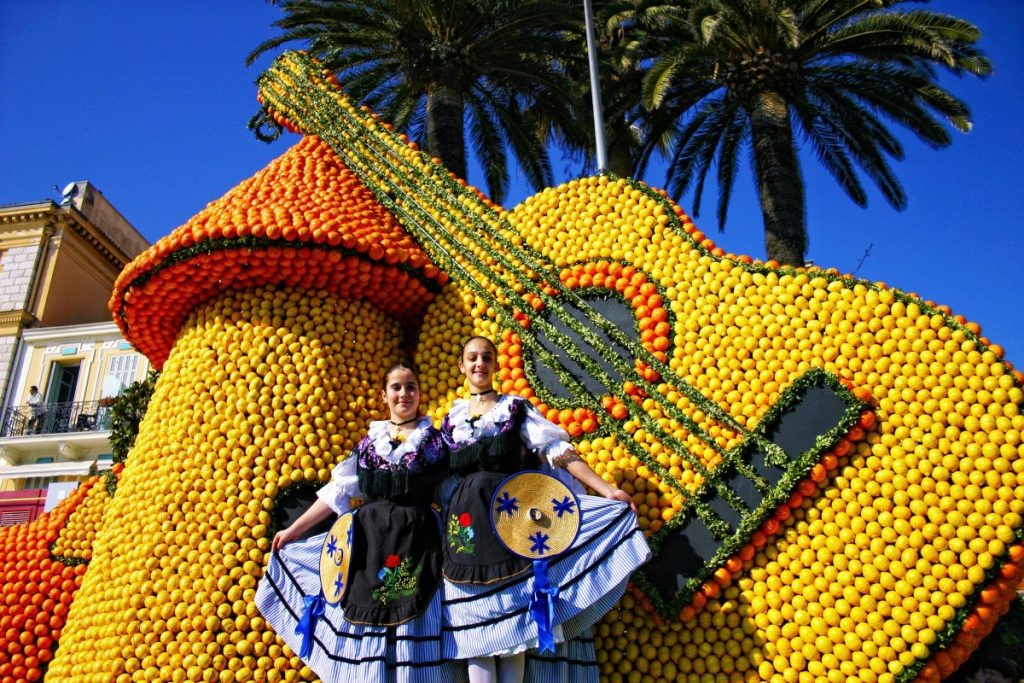
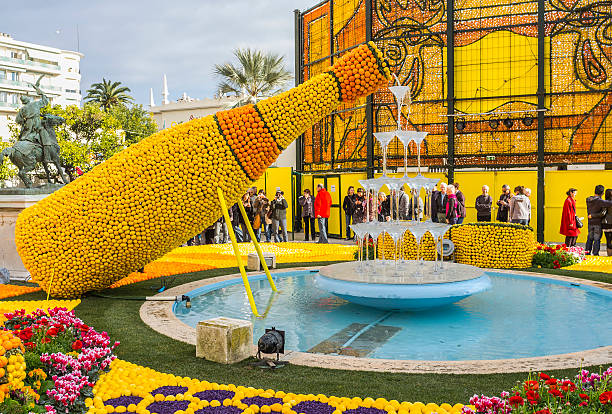
A WEEKEND FULL OF FRAGRANCE ON THE MIMOSA ROUTE
Let’s continue with the colour yellow and take the Mimosa Route: a sensory getaway, at its best between January and March. The Mimosa Route has you discover the treasures and landscapes of the French Riviera, between sea and mountain, in a mild climate.
Starting in Bormes-Les-Mimosas up to Grasse, a 130-km circuit goes through the little villages on the Riviera with the golden flowers as a backdrop. This is sure to awaken your senses. Offering their fragrance and colour, thousands of golden bunches play with the sun and contrast with the blue of the sky and the sea.
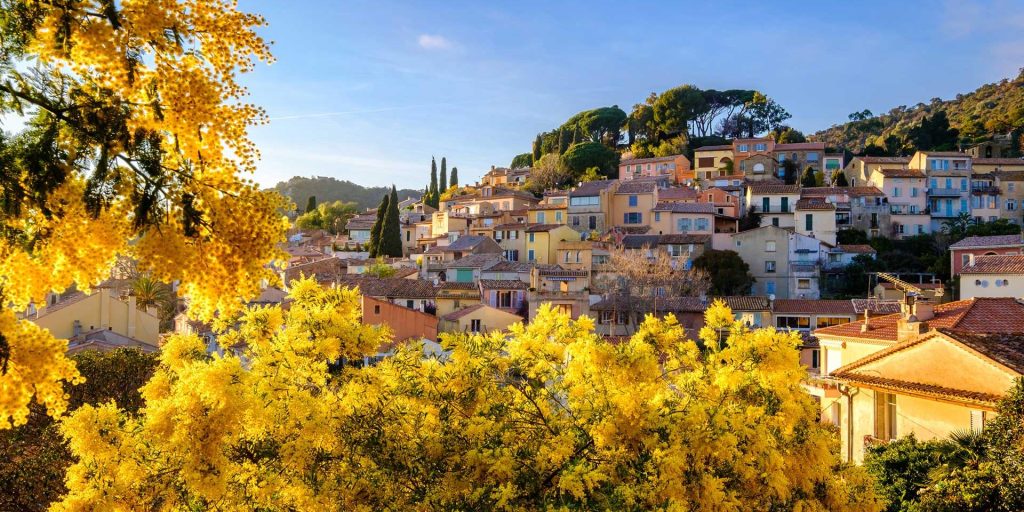

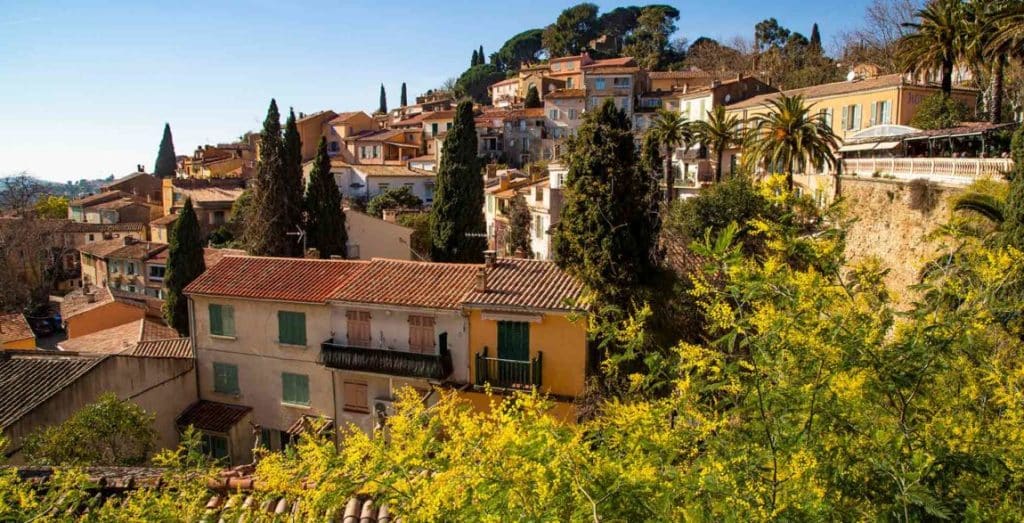
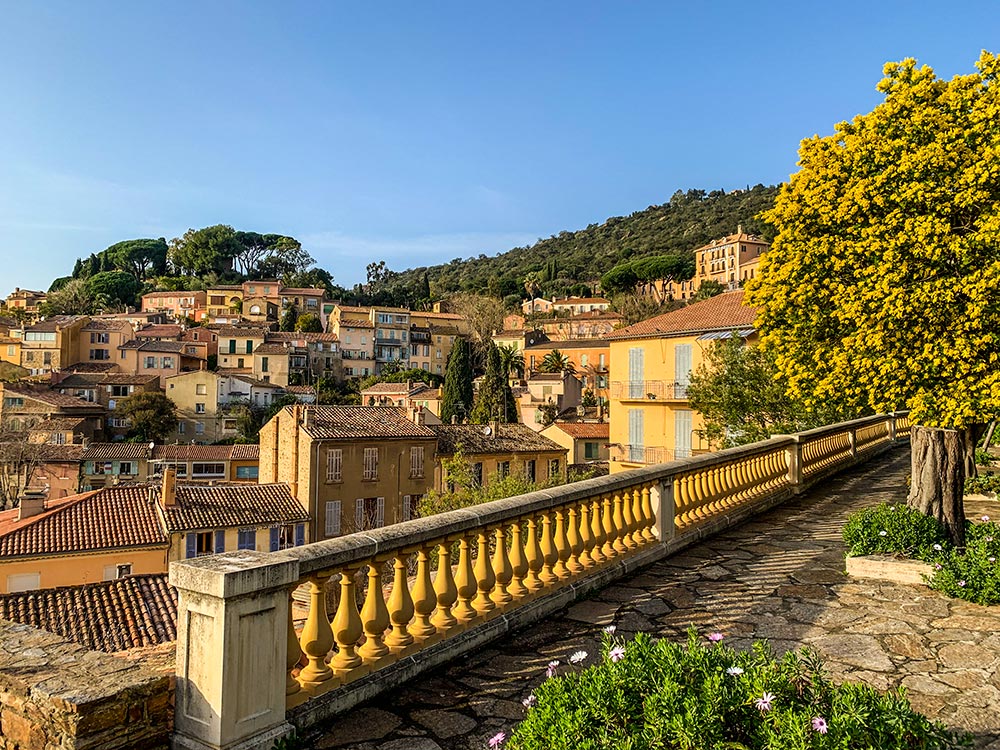
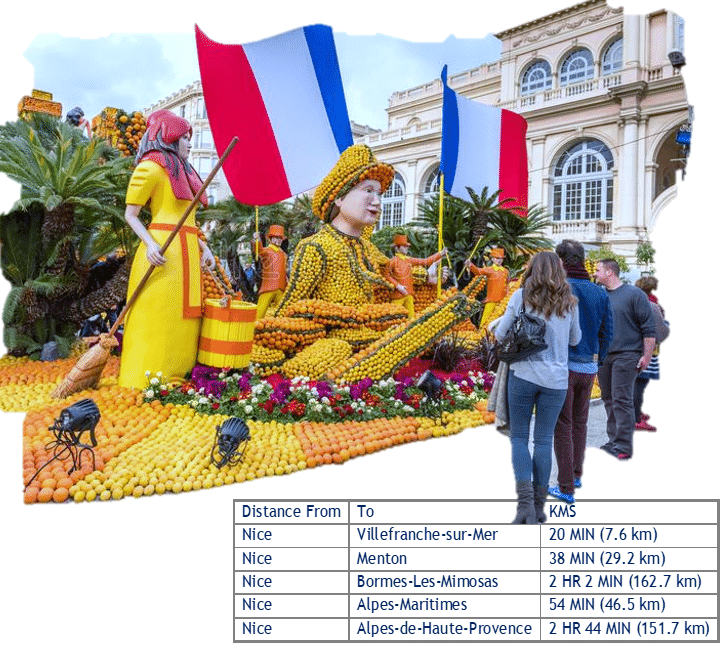
For more details, please clock on the link:
https://cotedazurfrance.fr/en/discover/extended-winter-weekend/
…. For the travel industry, that environment includes a heightened global commitment to dealing with climate change. It includes the very real threats of overtourism on fragile ecosystems, wildlife, and local communities. It includes the transformation of the energy economy and the integration of new energy sources, supply chains, and technologies.
For more details, please click on the link: https://skift.com/2023/01/21/what-i-learned-in-davos-about-managing-travels-new-complexity/
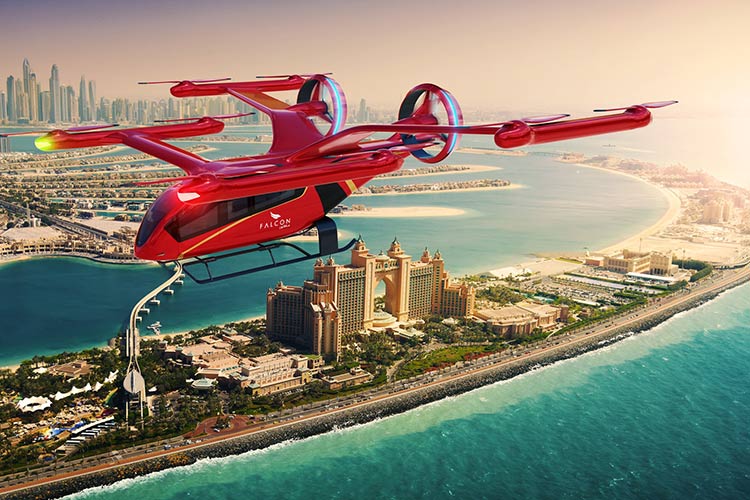

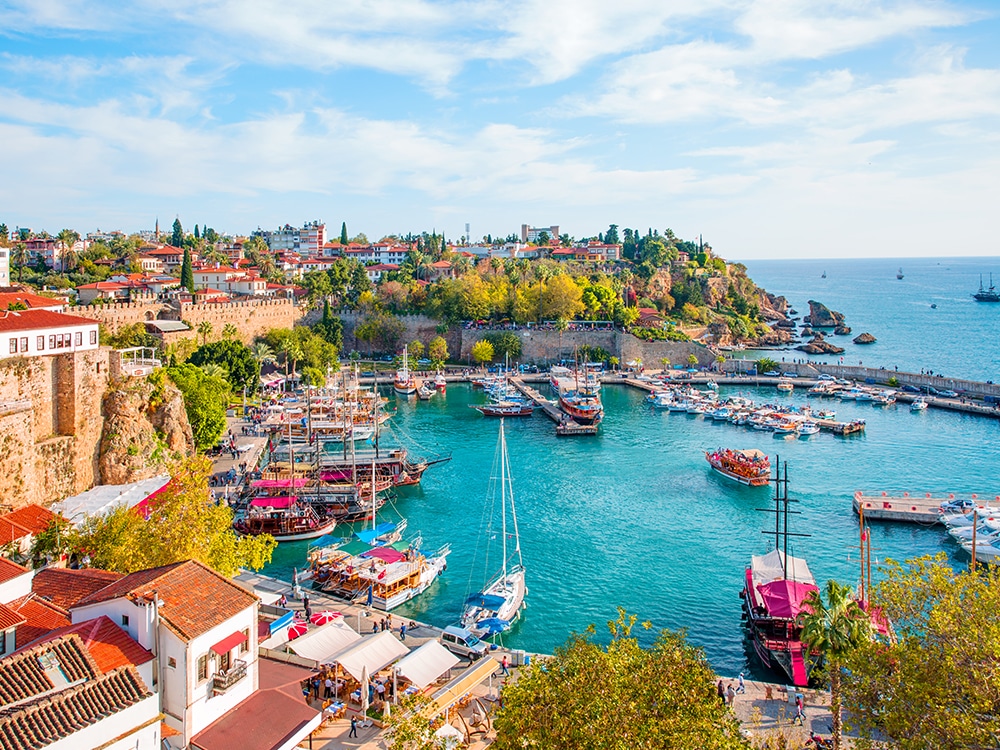
No. 1 / 3
Turkey is a richly historical land with some of the best cuisine you will ever taste, scenery from beaches to mountains and the great city of İstanbul.
With shores, forests and mountains peppered with millennial ancient ruins, the Turkish Riviera is the perfect destination for history aficionados, nature lovers and beach-buffs.
Starting from Antalya on the East and stretching over to Muğla on the West, is Türkiye’s one of the most popular holiday regions located by the turquoise Mediterranean Sea. This lush coastal region offers you ancient cities, castles, ports, temples and much more to discover….
The Turkish Riviera is Turkey at its most staggeringly beautiful: sandy sweeps of shore hug a coastline lapped by jade waters and backed by forest-blanketed slopes. The Turquoise Coast is prime sun-and-sea territory, but step off the beach and you’ll find ancient cities such as Xanthos, Tlos and Arykanda perched precariously atop hills, and ornate tombs carved into cliffs at Pınara and Myra. Hike between ruins on a section of the 500km-long Lycian Way and you’ll be richly rewarded with scenery worth the sweat.
The cool, calm waters of the Turkish Mediterranean are ideal for a relaxing sailing holiday – with nothing on the agenda but swimming, sunbathing, eating and hopping ashore for a spot of sight-seeing. Although much of the coast has been invaded by package tourists, there are still a number of unspoiled areas …
The Turkish Riviera or the “Turquoise Coast”, boasts some of southern Europe’s most incredible holiday destinations. This is a true coastal paradise, set at the meeting point of Europe and the Middle East.
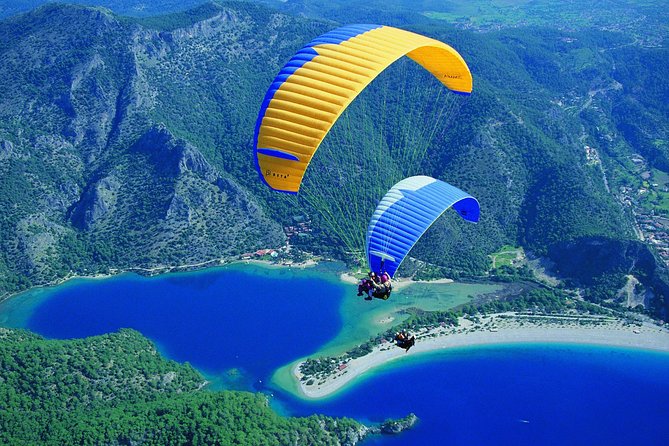
CUSTOMERS QUESTIONS & ANSWERS
- Why ANTALYA is so popular?
- The Antalya region easily lures history lovers because of ancient ruined cities like Aspendos and its perfectly intact Roman theatre or Side with its landmark temple of Apollo and the ruins of the old city in the heart of the new one.
Why BODRUM is so popular?
- Bodrum has an excellent Riviera location, and is famed for sun, sand, luxury, and nightlife, the Turkish Riviera offers plenty of resorts and tourist infrastructure. The stunning beaches and dramatic coastline, and greenery makes it easy to understand why tourists flock in their masses.
- Is FETHIYE or ANTALYA better?
- Antalya beaches Lara/Side are long and sandy with high rise hotels.
- Fethiye has mainly pebble sand beaches and buildings/hotels – especially Oludeniz – of 3 floors maximum.
- Which is better FETHIYE or BODRUM?
- Bodrum has lots of partying, loud music ….
- Fethiye on the other hand is quiet at night, calmer nightlife perfect to rest and relax.
- Is BODRUM or MARMARIS better?
- Marmaris has more humidity and is a hotter resort than Bodrum with its cool breeze.
- Is BODRUM better or ANTALYA?
- From a beach perspective, Antalya is the winner.
- Please find the Comparison in the below graph.
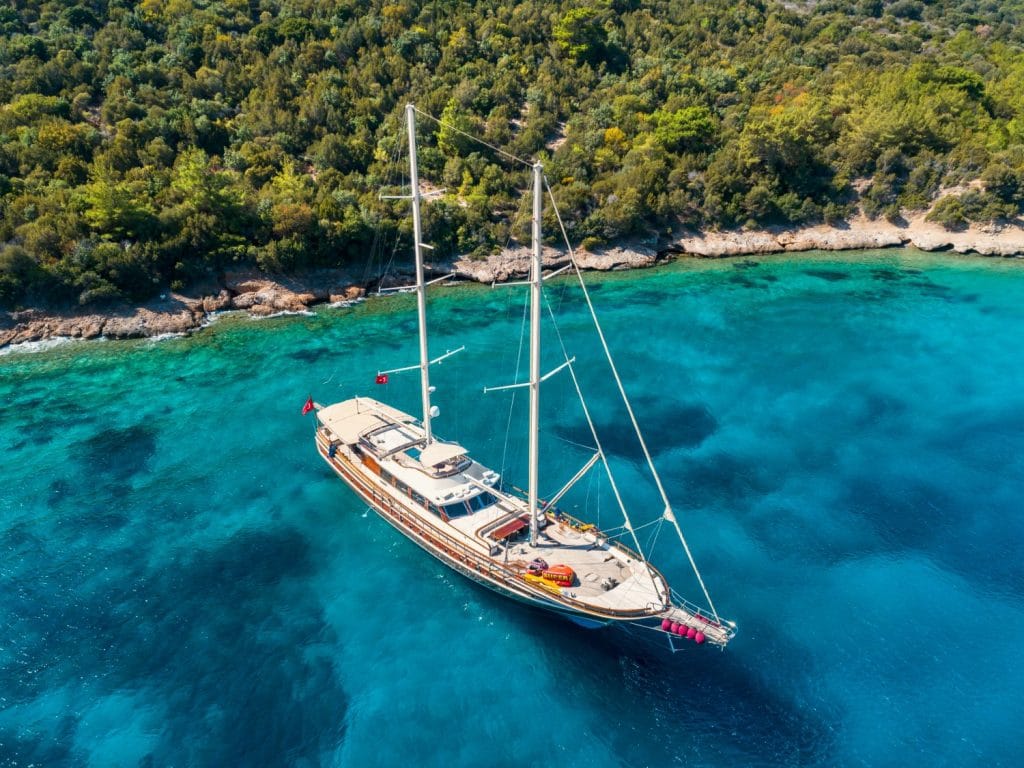
BODRUM vs ANTALYA
- Small size, easy to explore.
- Offers a charming coastal town vibe and accessible beaches.
- Explore the Picturesque countryside or the beautiful stretch of winding coastline in no time.
- Not a mass tourism destination (quieter).
- Visit historical sites around Bodrum: Ruins of the Mausoleum of Mausolus; Bodrum Castle.
- A short ferry ride away from the Greek Islands of Kos and Rhodes.
- Partying mainly in the town of Gumbet, just west of Bodrum.
- Nightlife happens in the city center, particularly in nearby Gumbet.
- Explore coves, bays, and beaches. Bodrum has several wondrous beaches nearby.
- DAY TRIPS FROM BODRUM:
- PAMUKKALE: Hot prings and travertine terraces.
- EPHESUS: Ancient Greek and Roman ruins.
- BLACK ISLAND: Volcanic island featuring healing mineral pools.
- KOS OR RHODES: Greek Islands near the Turkish south coast.
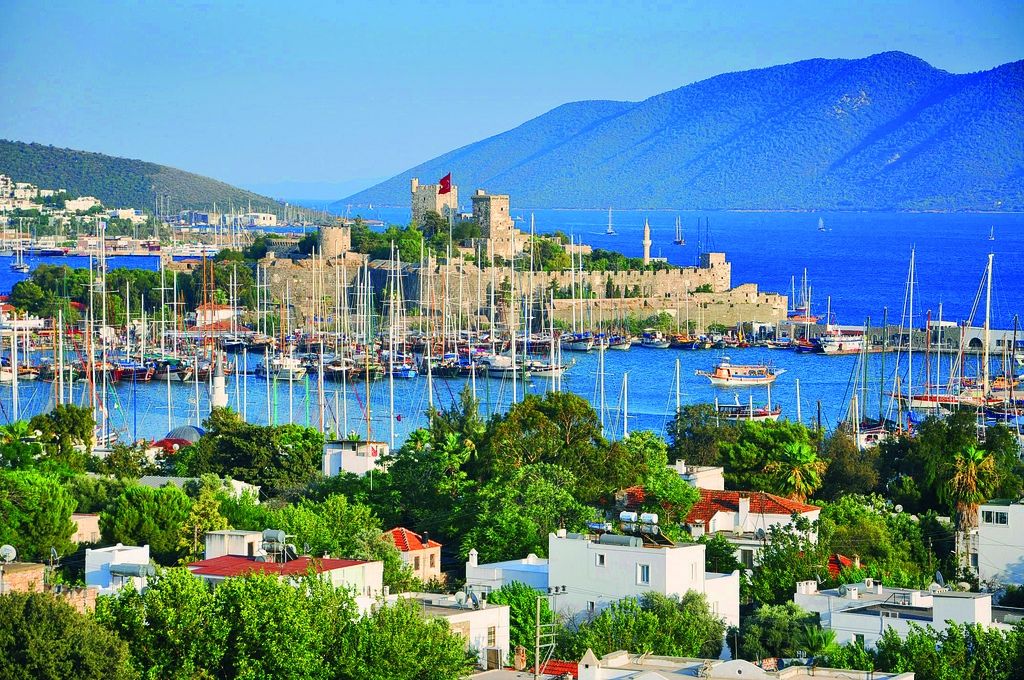
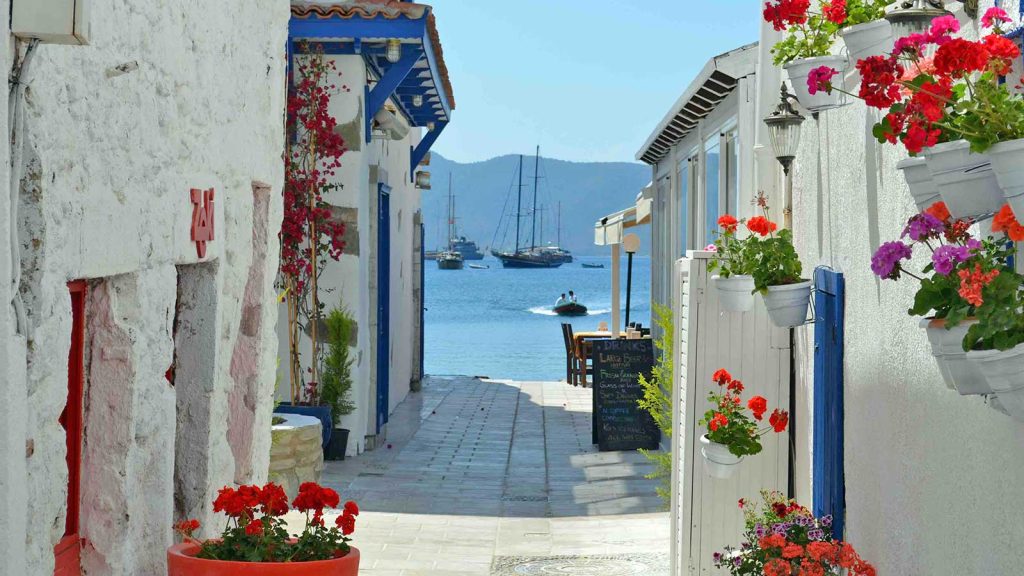
ANTALYA vs BODRUM
- Large city, bigger than Bodrum with its sprawling port city.
- Very accessible and a crowded destination.
- This huge coastal city is the largest international sea resort in Turkey with a lot to see & do.
- Antalya has the upper hand in Partying, with large clubs and is the region’s largest city.
- Authentic Turkish cuisine can be easily found in the numerous local restaurants.
- Coves, bays, and beaches re in abundance. Nature lovers have more variety and options for adventure around Antalya.
- Families with children have lots of activities: Waterparks, Theme parks, Accessible Public Beaches, Fun Nature Excursions.
- Attractions:
- stunning beaches,
- wonderful waterfront and harbor,
- walled Old Town home, cobbled streets,
- Archaeology Museum
- Historic Sites:
- Hadrian’s Gate,
- Hidirlik Tower,
- Clock Tower.
- Aspendos Theater, one of the world’s largest intact Roman amphitheaters.
- Waterfalls: Düden, Manavgat, Kurşunlu.
- National & Urban parks, green spaces.
- Antalya is much warmer than Bodrum and has an extended summer season.
- Antalya has some excellent public beaches within the city.
- Nightlife mainly takes place in the all-inclusive resorts rather than inside the city.
- DAY TRIPS FROM ANTLAYA:
- PAMUKKALE: Hot springs and travertine terraces.
- KÖPRÜLÜ CANYON: Canyon for hiking, whitewater rafting, natural scenery, and archaeological sites
- ALTINBESIK CAVE NATIONAL PARK: National park home to the world’s largest underground water cave, as well as abundant wildlife.
- TERMESSOS RUINS: Ancient ruins set within a gorgeous mountain landscape.
- ÇIRALI: Coastal town home to one of the best beaches in Turkey.
- Olympos Ruins.
- Legendary Chimaera Mountain.
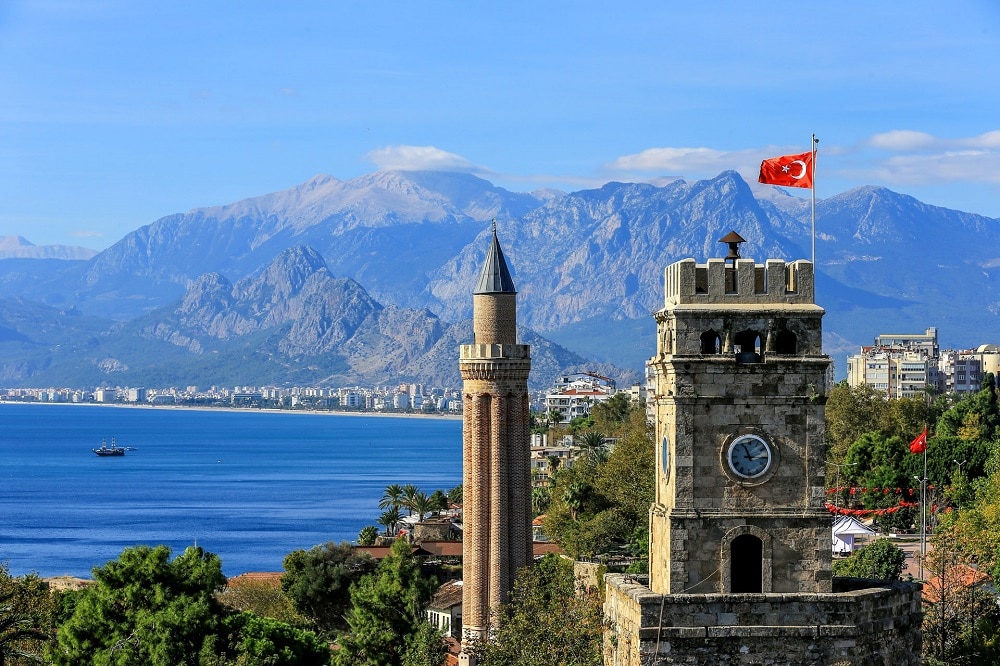
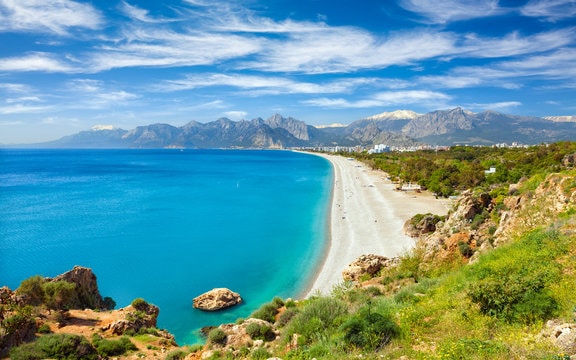
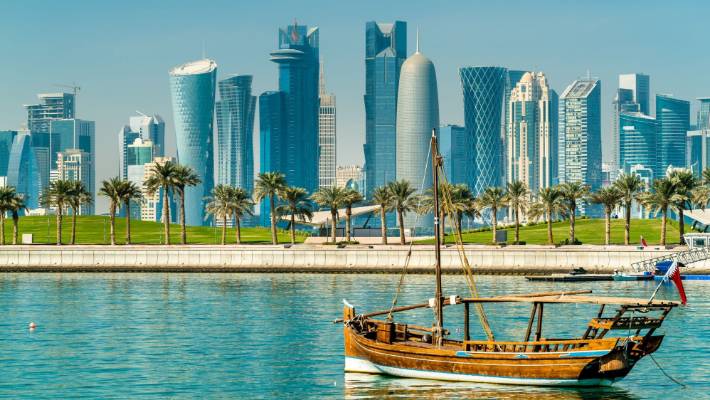
QATAR LANDMARKS & BEYOND
DOHA TOWER
An iconic tower standing high above Doha’s West Bay.
The iconic Doha Tower, known also as Burj Doha, rises 238 metres above the West Bay in Doha, Qatar. Its phallic shape rises 46 stories above the ground, with a further 3 floors stretching underground. The French architect Jean Nouvel, who designed the building, described its shape as suggestive of “a fully assumed virility.”
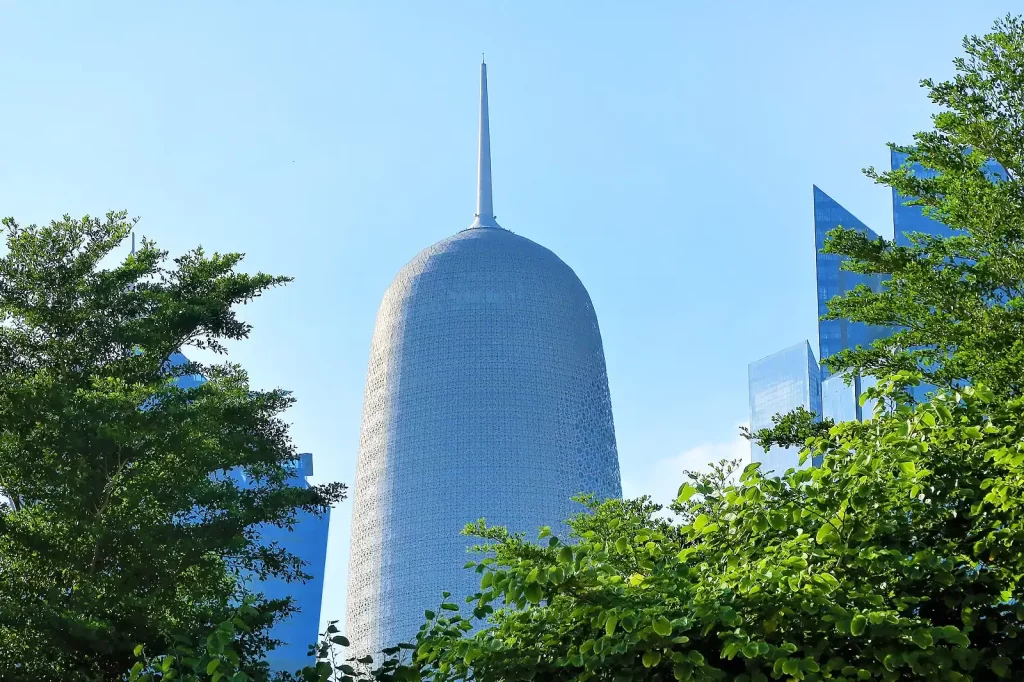
ASPIRE TOWER or THE TORCH DOHA
Enjoy panoramic views from Doha’s tallest building
Also known as The Torch Doha, Aspire Tower is a 300-metre high-rise hotel in the Aspire Zone complex in Doha, Qatar. The hotel is centrally located and near to several local attractions, including Villaggio Mall Shopping Center and the Khalifa International Stadium.
Aspire Tower is one of the tallest structures in Qatar. For a view over a spectacular cityscape and a little fine dining, check out the Panorama Restaurant at the top of the tower itself. The Torch Doha or Aspire Tower is now a luxury hotel and meeting space. Dine in the hotel’s revolving 360 restaurant. Another way is to go for a sky-high spa treatment in the health club and get access to the gym and cantilevered swimming pool, which offers superb views from the 19th floor.
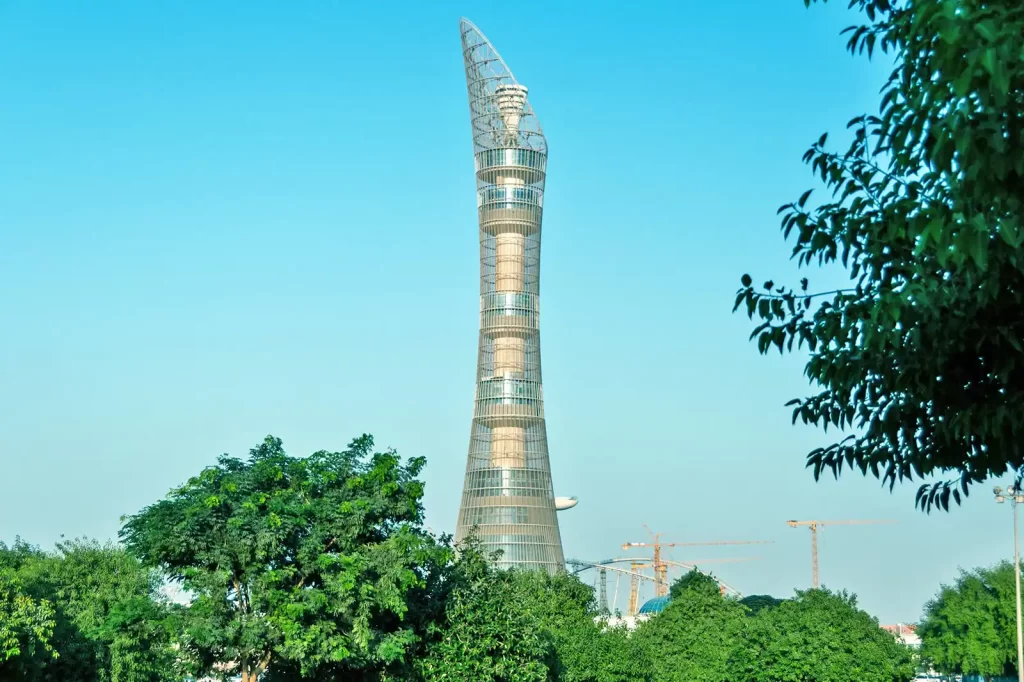
TORNADO TOWER
Snap a shot of this distinctive hourglass-shaped building. Tornado Tower’s distinctive hourglass shape is instantly recognisable. Also known as QIPCO Tower, this building’s 52 floors stretch almost 200 metres into the skyline.
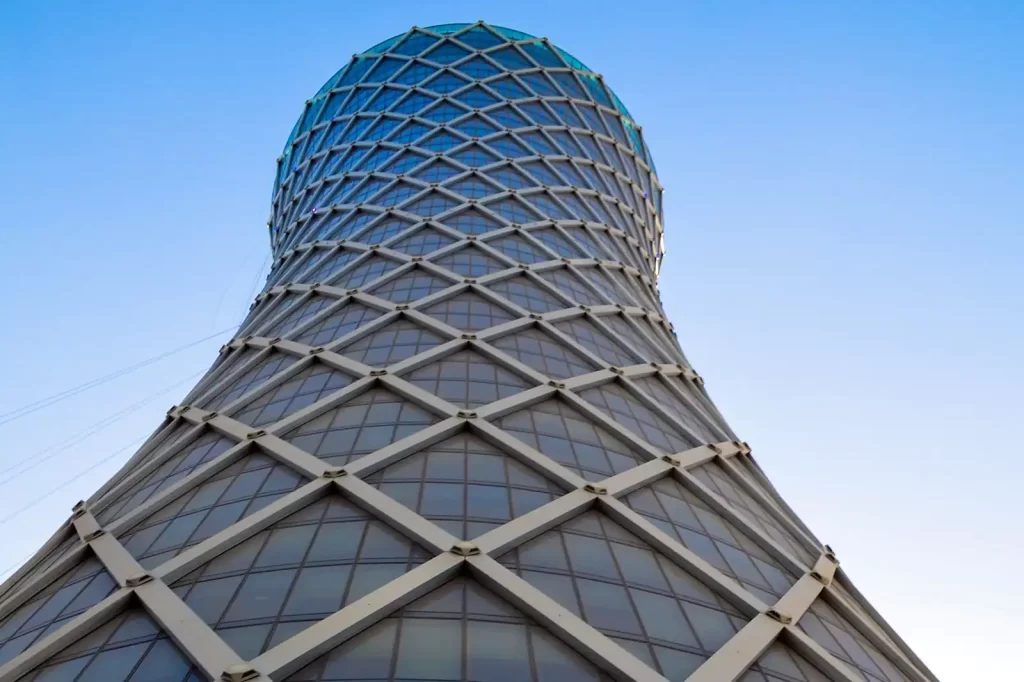
SIDRA PUBLIC ART
Enjoy one of Qatar’s world-class public art installations. You’ll find a renowned art installation by the controversial British artist Damien Hirst. Known as The Miraculous Journey, this installation consists of 14 large bronze sculptures depicting the human journey from conception to birth. With sculptures ranging in height from 5- to 11-metres tall, Hirst has charted the miracle of birth in vivid detail. The reality for some may be shocking as among the scenes depicted is a breech birth. There was some controversy surrounding the unveiling of the sculptures initially, but this divisive art piece is now widely praised. While some were upset with the harsh realism of the scenes, this fascinating public art installation is certainly worth a visit.
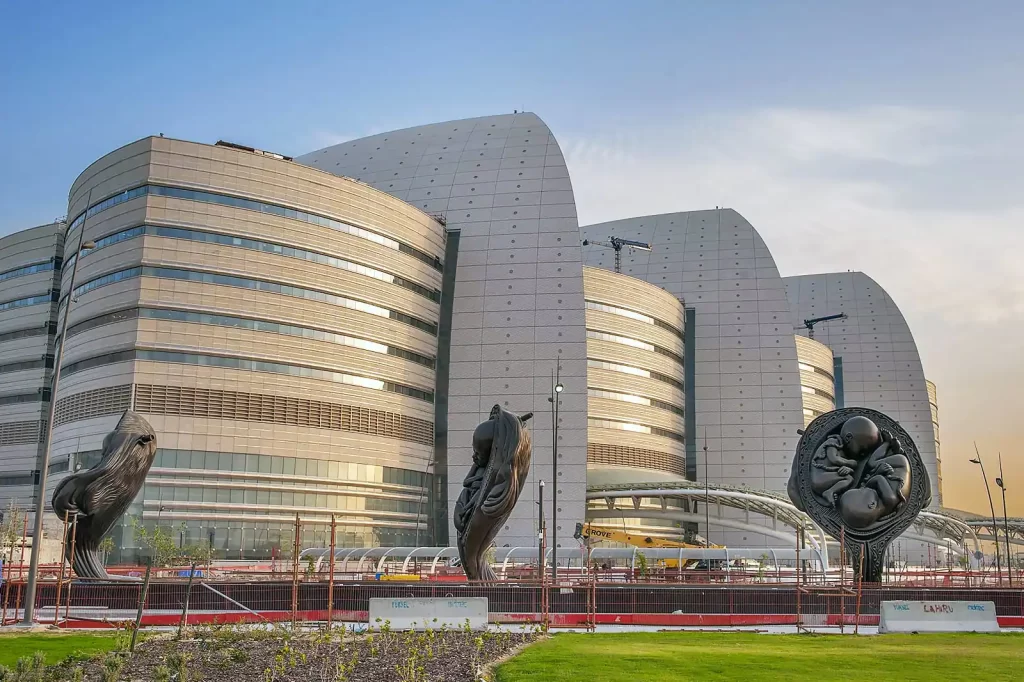
AL ZUBARA FORT
Visit this UNESCO World Heritage site for a glimpse into Qatari history. Located near a now-deserted town of the same name, Al Zubara Fort is a large fort dominated by 3 huge circular towers and a single rectangular one. The fort was built in 1938 by Sheikh Abdullah bin Jassim Al Thani to serve as a coast guard station. It’s now used as a museum and hosts regular exhibitions on the history of the area.
Located about 105 km from the capital, the remains of the deserted town and the fort protecting it are a UNESCO World Heritage site that lies on the northwestern coast of the Qatar peninsula and can make for an interesting day trip. Be sure to bring snacks and plenty of water and note there’s little in the way of shade while exploring here. It’s probably best to avoid arriving around midday and early afternoon when the heat is at its most intense.

BARZAN TOWERS
Visit these aptly named 19th-century towers day or night. The Barzan Towers date to the late 19th century and were erected to stand guard over the precious rainwater that collected in the nearby valley. Barzan means ‘high place’, and with watchtowers that stand over 16 metres in height, the place is well named. The towers were also used for observing the moon to accurately pinpoint the start of Ramadan.
The towers are just 15 km north of Doha and are open 24 hours a day, so there’s never a bad time to visit. With enormous staircases and impressive buttresses, the architecture here offers some great photo opportunities for visitors, with the best views available from the top. There are some shops nearby too, so you don’t have to worry about finding refreshments while visiting.

AL WAJBAH FORT
Catch a glimpse into Qatar’s storied past at this 18th-century fort. One of Qatar’s oldest historical sites, Al Wajbah Fort dates to the late 18th century. The site of significant battles between the Qatari people and Ottoman forces, the fort holds a special place in the hearts of the locals and evokes a strong sense of national pride for many. With thick walls and 4 high watchtowers, the fort contains weaponry displays and exhibits detailing its history.
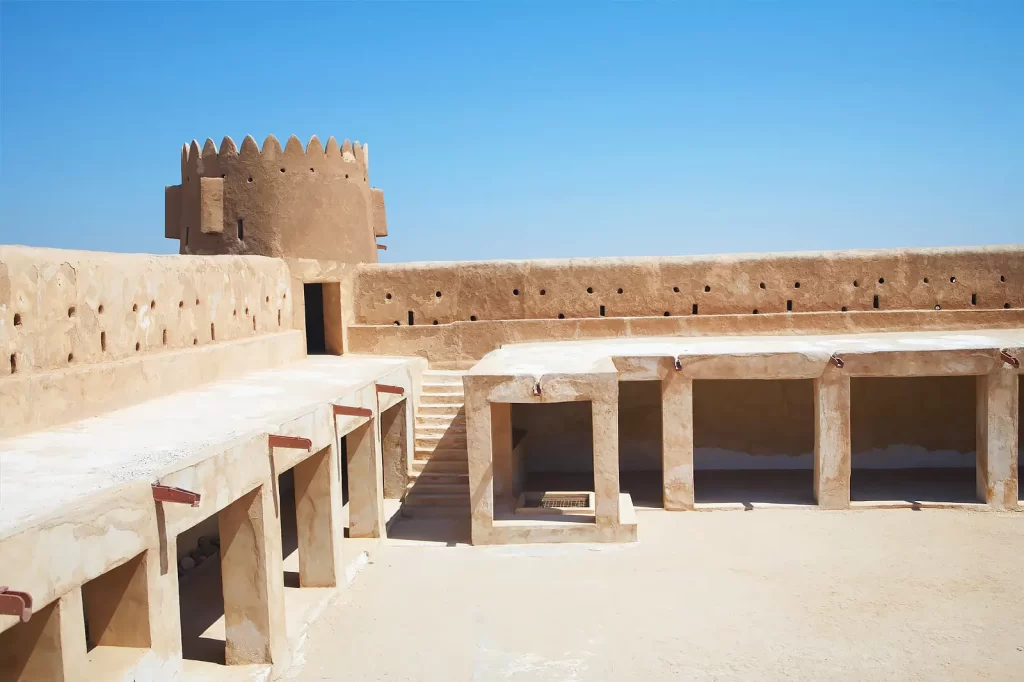
THE PIGEON TOWERS
Don’t miss this unique and intriguing pigeon-related attraction. Qatar’s Pigeon Towers are undoubtedly one of the country’s most unique and intriguing attractions. A popular photo opportunity for tourists and locals alike, the towers also serve an extremely practical purpose. Home to thousands of pigeons, the distinctive towers have been designed to collect their droppings for use as fertiliser by local farmers.
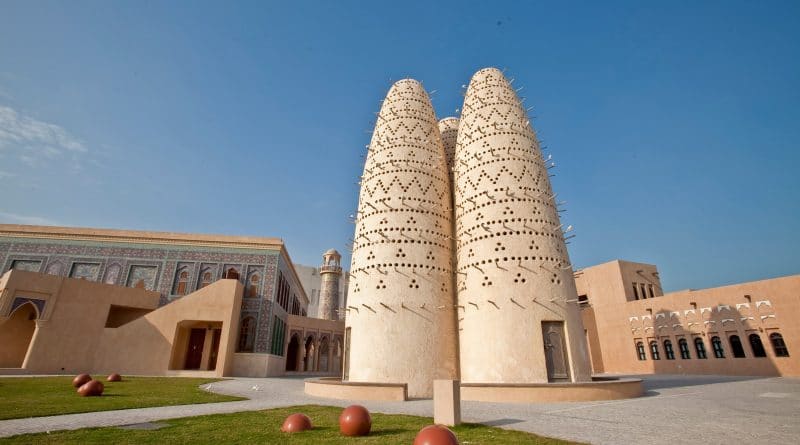
IMAM MUHAMMAD IBN ABD AL WAHHAB MOSQUE
A striking place with a great view of the city. Dazzling both inside and out, the Imam Muhammad Ibn Abd Al Wahhab Mosque is a spectacular structure, deserving of the title of Qatar’s national mosque. Built to reflect the older, more traditional homes in Qatar, everywhere you look you’ll be met with classic Islamic architecture and design features, from the bright white walls to the carpets at your feet. Note that this is an active place of worship, though, so dress appropriately.

LA CORNICHE
Take a waterfront walk or go for a jog on the running track. La Corniche is a lovely seafront promenade extending for 7 km along Doha Bay. Offering great views of the water and city skyline, this wide pedestrian walkway is a popular gathering spot for local families and travellers alike. Stroll La Corniche at dawn to watch the golden rays reflecting against the central business district’s high-rise towers, or explore during the bustling evening hours and look out at traditional wooden dhows bobbing in the bay. There are plenty of cafés and restaurants along the way where you can relax while taking in the views.
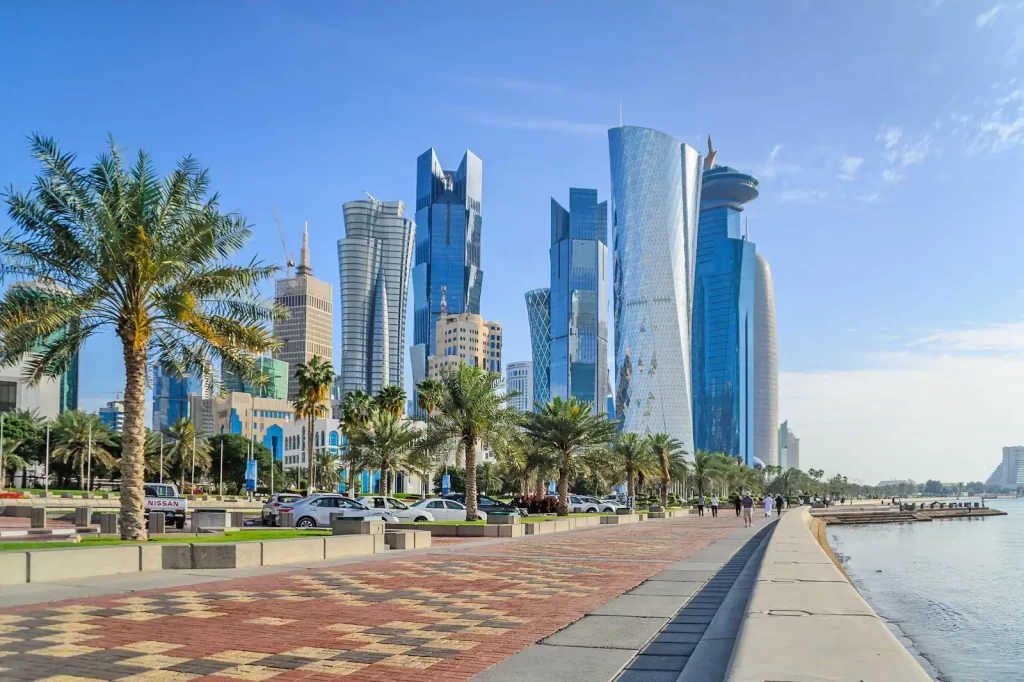
SOUQ WAQIF MARKET
Expect to haggle in this busy shopping labyrinth. Spread over 4 blocks near the Corniche, Souq Waqif is a lively centuries-old market that once served as a trading hub for the Bedouin looking to buy and sell camels and more. Those not in the market for a camel will find plenty of other eye-catching goods to buy from gold jewellery to colourful fabrics and even Aladdin-style bronze lamps.
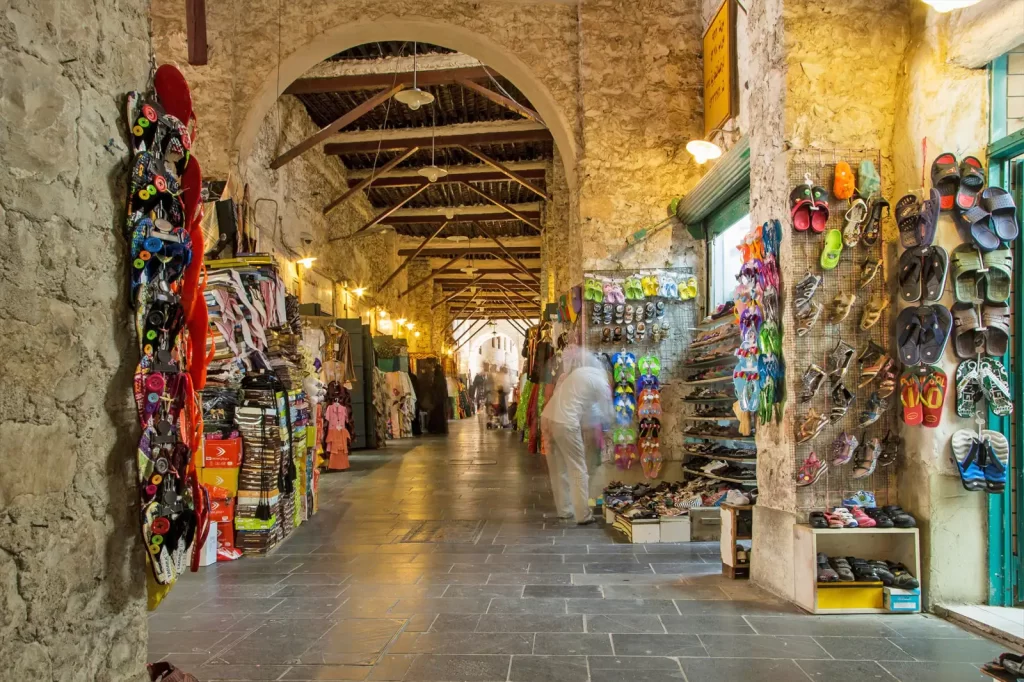
MUSEUM OF ISLAMIC ART
Designed by revered architect I.M. Pei. With its stunning architecture and huge collection of art and artefacts, the Museum of Islamic Art is one of the best things to do in Doha and one of the city’s most celebrated sights. Set along the Corniche promenade on Doha Bay, the museum houses collections of ceramics, manuscripts, metalworks, textiles and other fine art pieces of the Islamic world from 14 centuries ago to modern times.
Journey through 1,400 years of Islamic culture. Tradition meets modernity at Qatar’s Museum of Islamic Art (MIA). An iconic building in the Doha waterfront, this limestone structure emphasises art’s connection to Islam without necessarily focusing on religious items. The museum also holds a library that houses more than 15,000 rare manuscripts and texts from around the world, including a Quran from the 7th century.
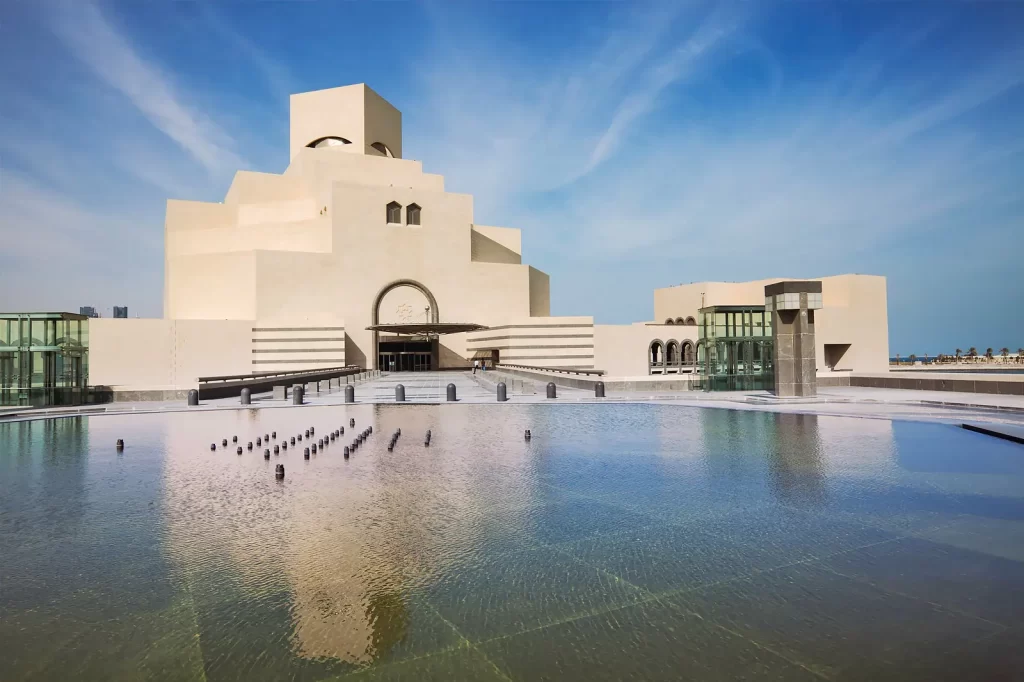
NATIONAL MUSEUM OF QATAR
Experience Qatar’s history in a heartbeat. The building was designed by architect Jean Nouvel who was inspired by the desert rose crystal, which can be found in Qatar. The National Museum of Qatar offers an immersive and informative experience of Qatar’s history. Just off the waters of Doha Corniche, this architectural marvel offers a vibrant space with an incredible view across the bay. The museum tells Qatar’s unique story in 3 parts: Beginnings, Life in Qatar, and The Modern History of Qatar. Most notably, it displays the Pearl Carpet of Baroda, which features 1.5 million hand-embroidered pearls, sapphires, and diamonds. A fully landscaped park allows you to learn about Qatar’s indigenous plants. After your tour, head over to the museum’s café to experience a traditional food forum
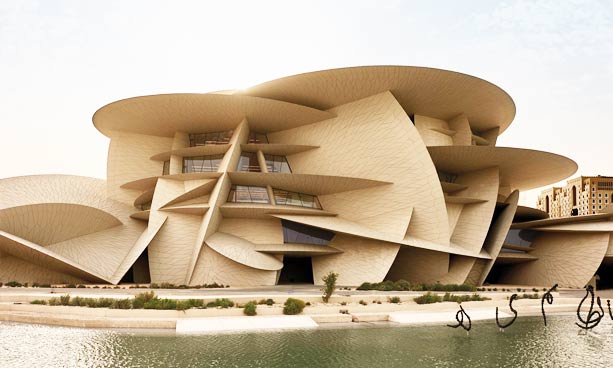
MSHEIREB MUSEUMS
Explore Doha’s fishing roots from 4 historical houses. The Msheireb Museums trace Doha’s history from its humble beginnings as a small fishing village. The museums pay homage to 4 historic heritage buildings in the oldest part of the capital: the Bin Jelmood House, Company House, Mohammed Bin Jassim House, and Radwani House.
Each building focuses on different aspects of Qatar’s history, including ancient slavery, the discovery of oil and gas, traditions, and the development of Arabian Gulf countries.
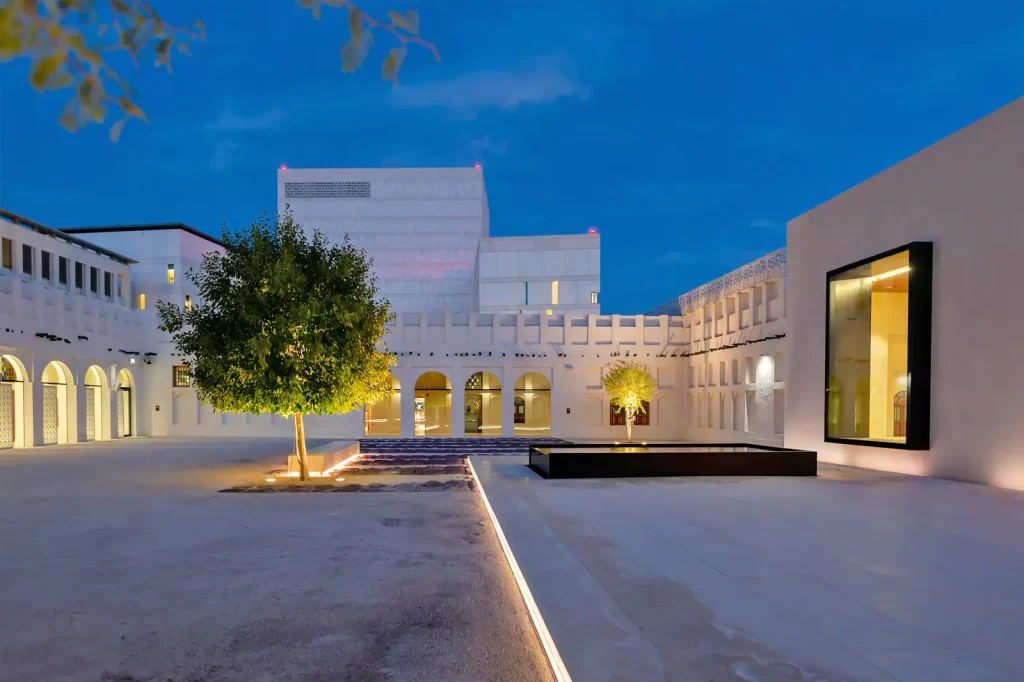
KATARA CULTURAL VILLAGE
Qatar’s hub for culture and creativity. With its grand Greco-Roman amphitheatre and numerous performances and festivals year-round, Doha’s Katara Cultural Village is a 1-stop destination for arts and culture. Katara was built on reclaimed land near The Pearl and designed in a way to hark back to traditional life with its maze of alleyways and Pigeon Towers.
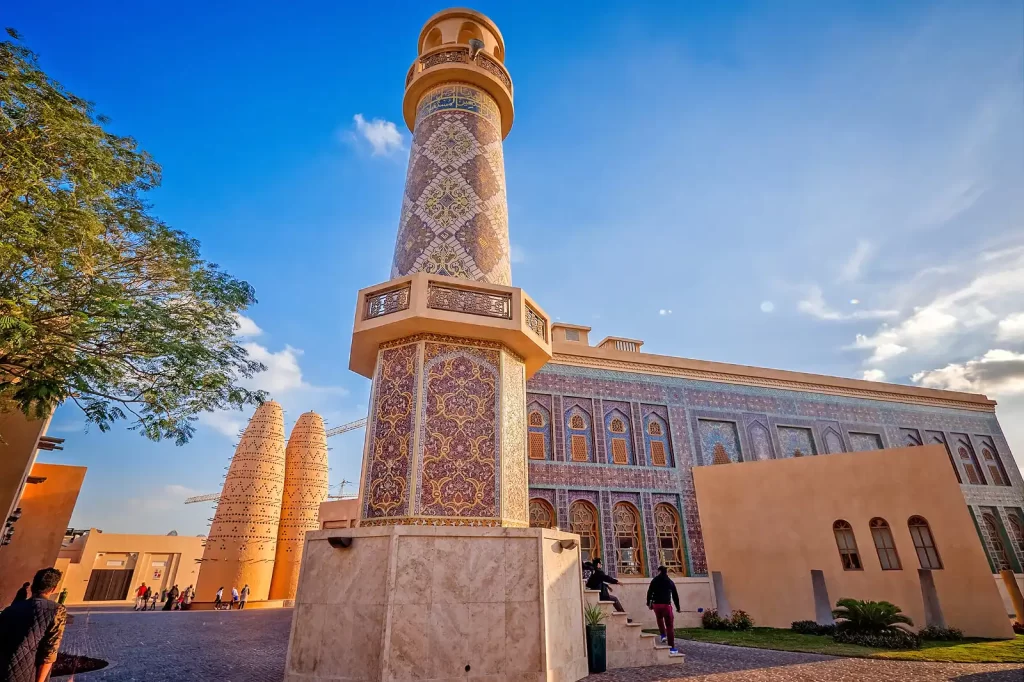
THE PEARL
Built on a former pearl diving site. Set on a manmade island of 4 sq km, The Pearl is a modern district with a great choice of sports, entertainment and shopping venues to explore. Many come here just to check out the snazzy yachts at the marina or enjoy some water sports at one of the beaches.
For the kids – and thrill-seeking adults – there’s Megapolis, a lively indoor fun park with a bowling alley, escape room and arcade games. The dining scene here offers a tasty variety, from artisanal sweet treats to indulge in at Alison Nelson’s Chocolate Bar to the Andalusian-style meals fit for royalty at Yasmine Palace.
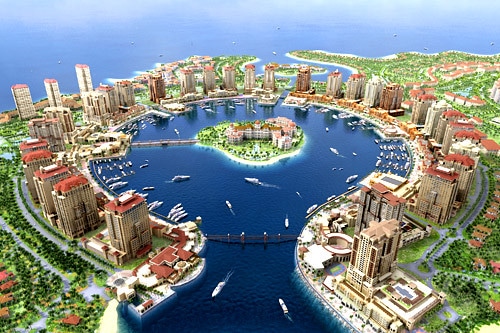
VILLAGGIO MALL
There’s even an Olympic-sized ice rink. Shoppers stepping into Villaggio Mall might think they’ve taken a sudden magic carpet ride to Italy, with its Venetian-inspired canals and gondola rides. Everything is inside and air-conditioned, so there’s no need to worry about wilting in the desert heat while browsing for the latest fashions, enjoying some lunch or catching an amusement park ride at Gondolania Theme Park. The mall is home to several luxury brands including Louis Vuitton, Christian Dior and Gucci, but there are also budget-friendly shops to check out if you lack a sultan’s fortune.
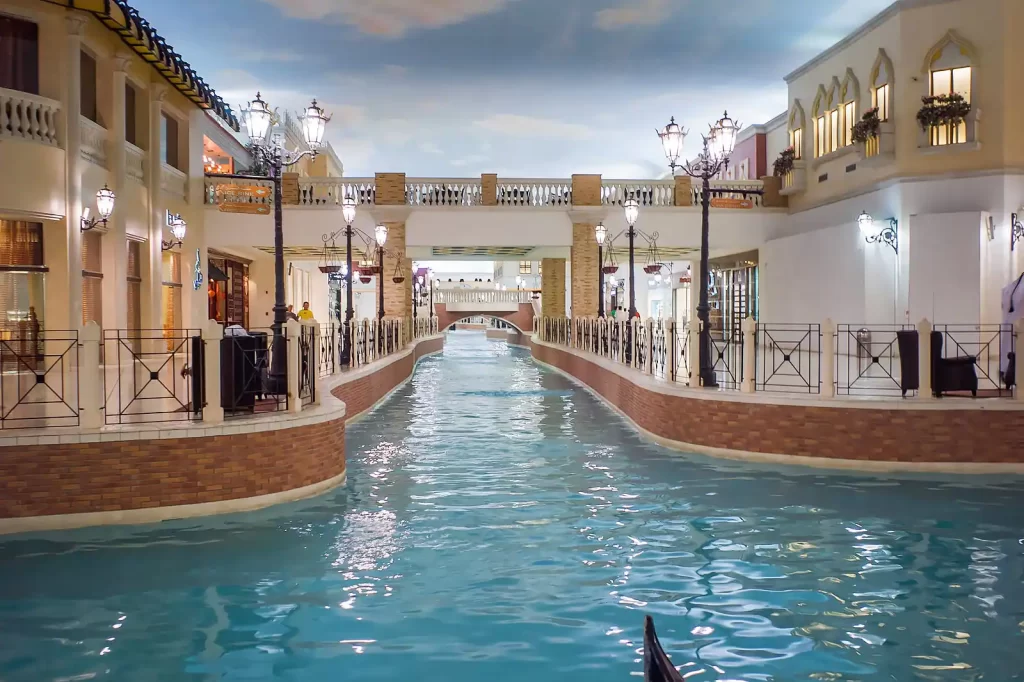
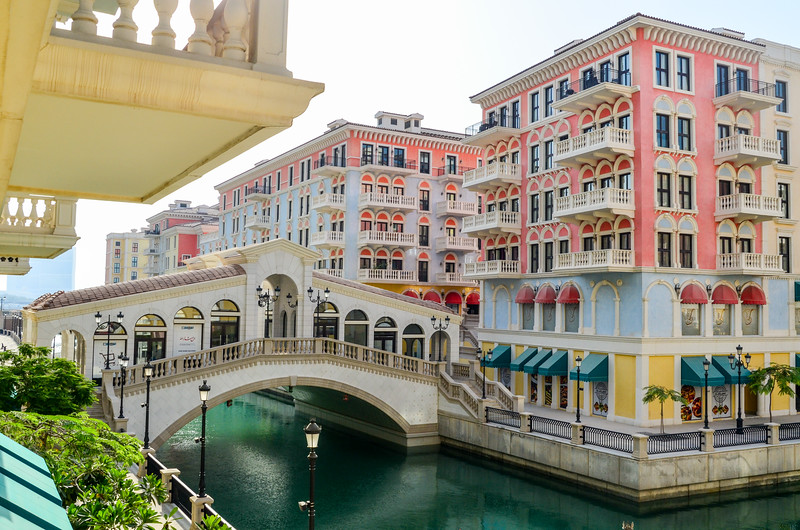
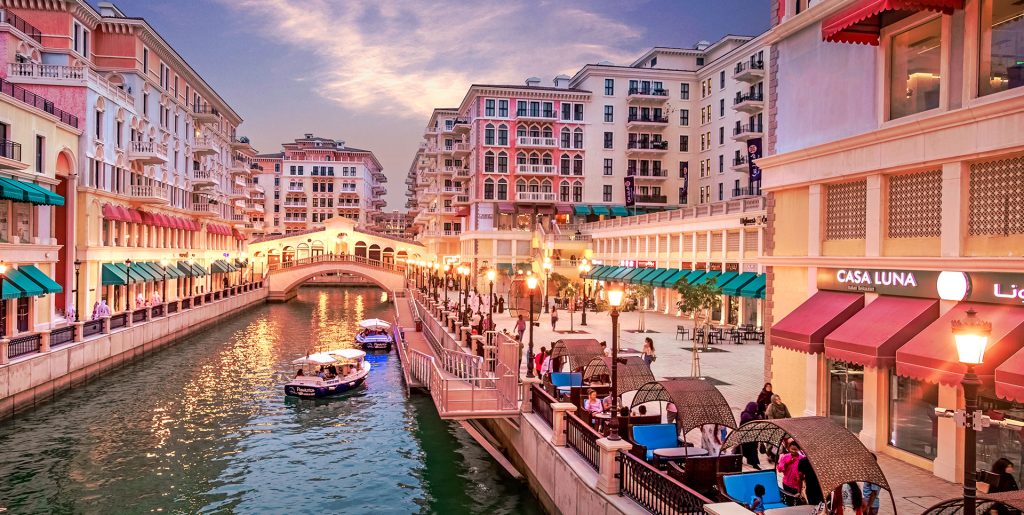
FALCON SOUQ
Ancient Bedouin hunting technique. While modern Qatar has little practical need for falconry, the tradition of keeping and training these magnificent birds lives on and is recognised by UNESCO as a culturally important practice. It’s not an unusual sight to see men and boys proudly carrying their prized falcon on their arm as they stroll through the city streets and markets.
The Falcon Souq, found adjacent to Souq Waqif Market, offers an engaging peek into the world of falconry. See shops selling all sorts of falcon-keeping paraphernalia or visit its monthly auction, where the more coveted birds could fetch tens of thousands of dollars.
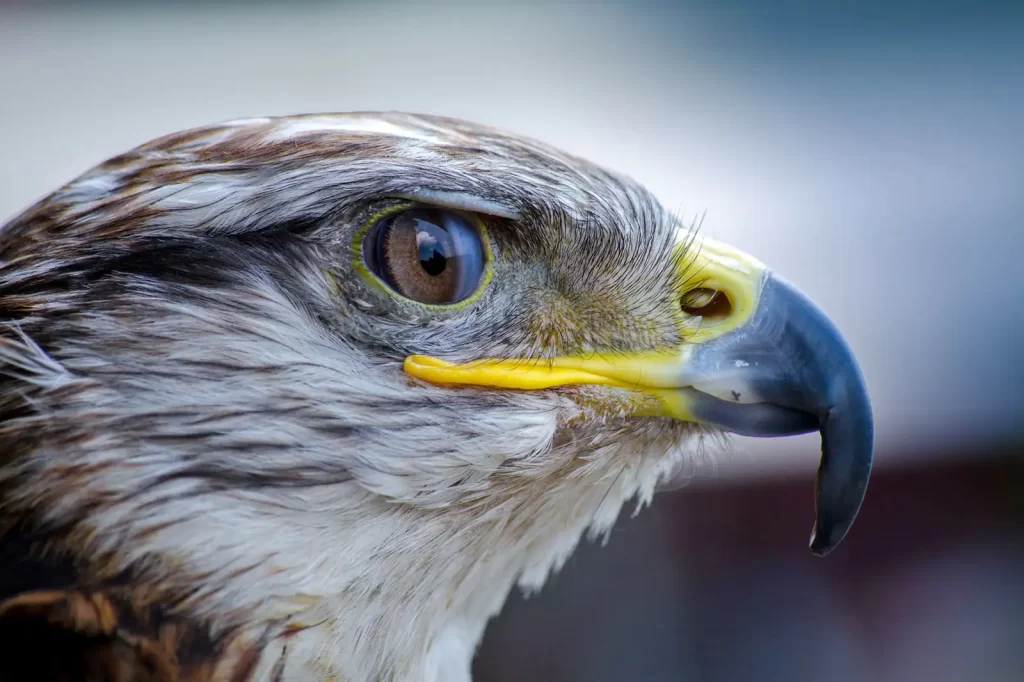
BANANA ISLAND
Just a 25-minute boat ride from downtown Doha. Those in search of some beach time can hop aboard a luxury catamaran at the dock near the Museum of Islamic Art and head out to Banana Island. Expect to enjoy a day of lounging by the pools, kayaking, banana boat rides, waterslides and a bunch more water sports and fun activities for the family.
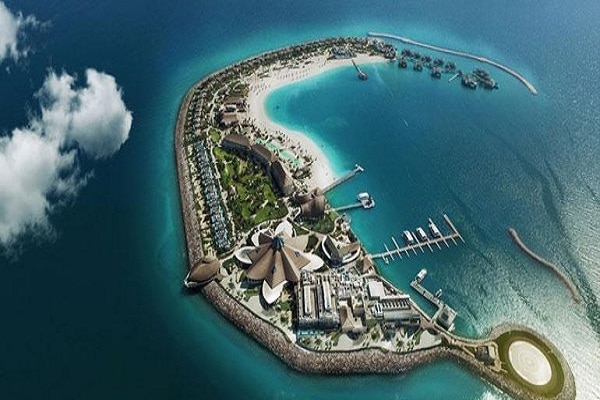
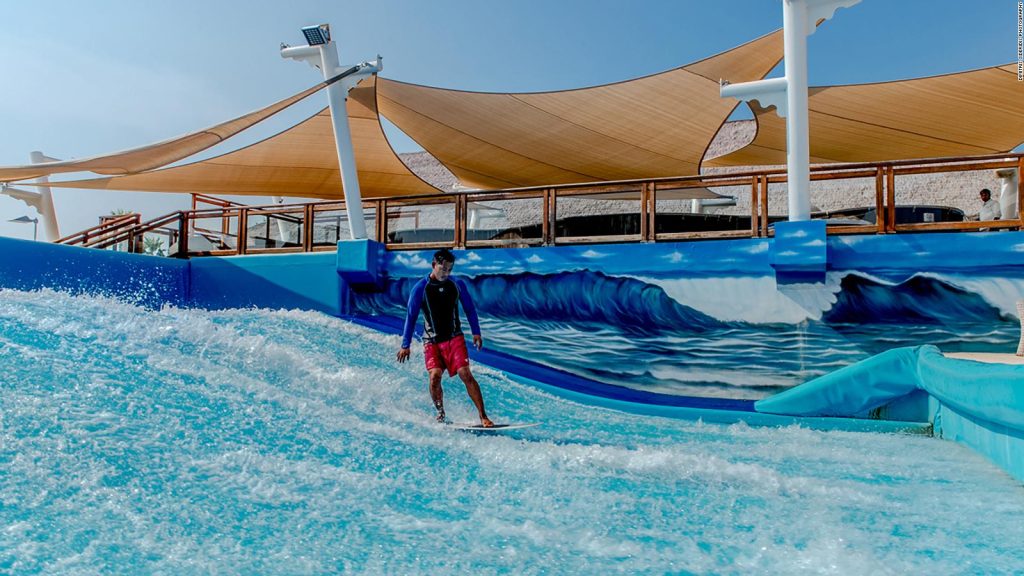
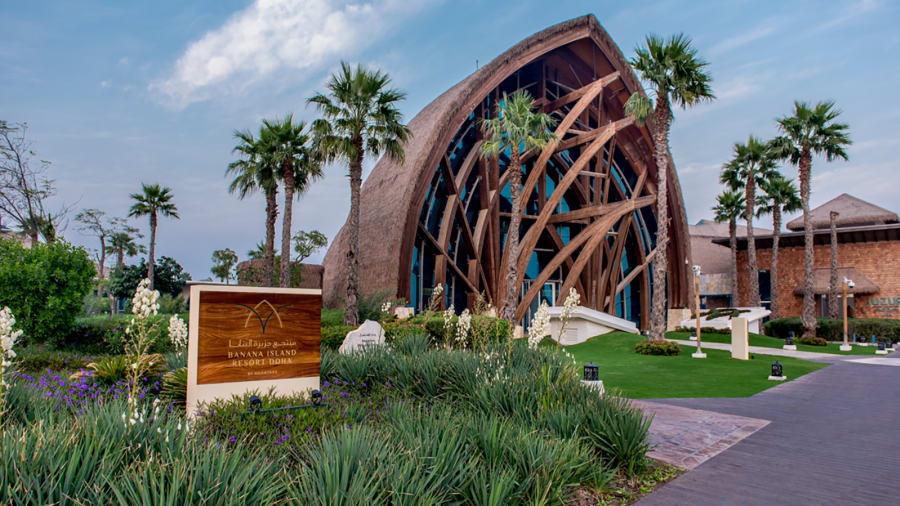
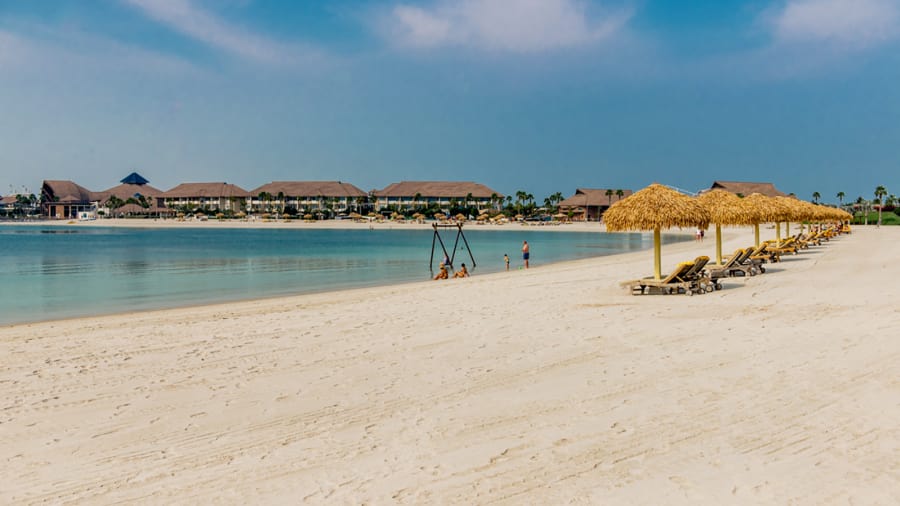
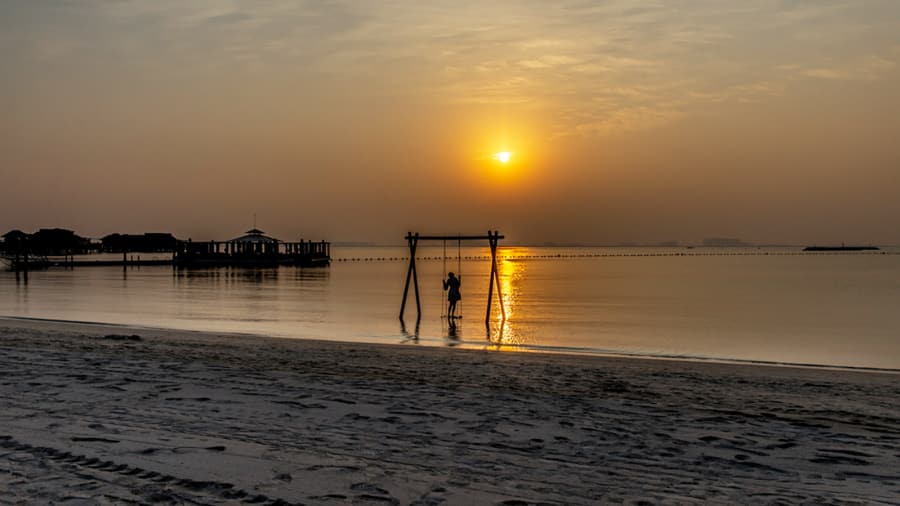
KHOR AL ADAID
Explore the beauty of the inland sea. Khor Al Adaid attracts nature lovers with its beautiful scenery and diverse wildlife. If UNESCO refers to a nature reserve as ‘a remarkable landscape’, you know you’re in for a treat when you head for this inland beach.
Watch the sunset from the summits of the sand dunes or watch flocks of migratory birds occupying the shores. In this conservation area, you can enjoy picnicking, overnight camping, stargazing, and fishing. You can only get to Khor Al Adaid on a 4×4, as you won’t be able to conquer the dunes with an ordinary car.
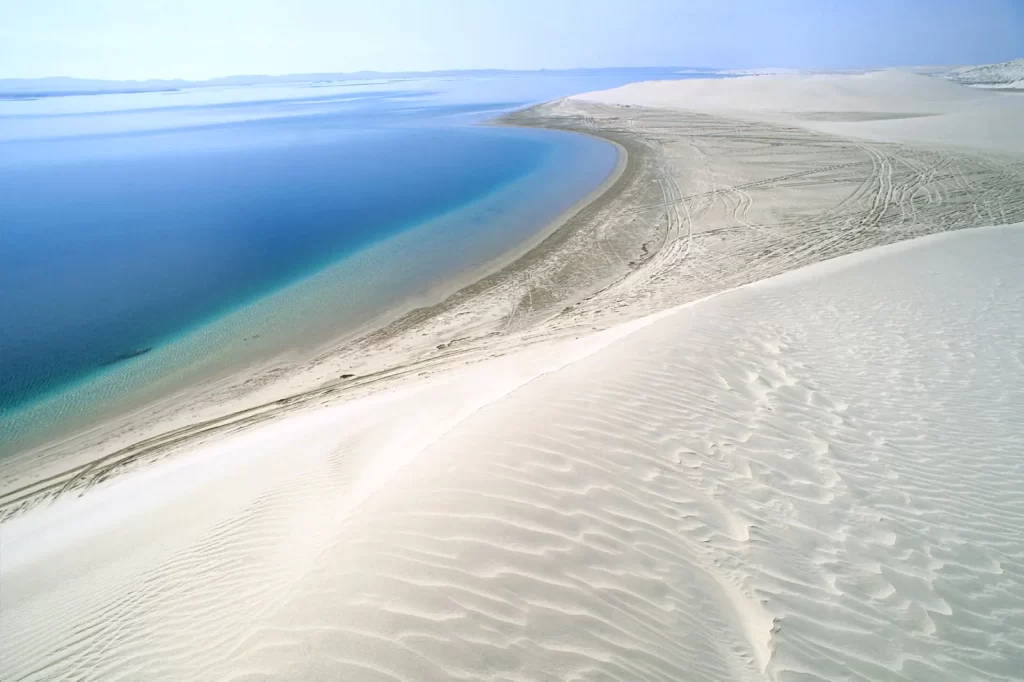
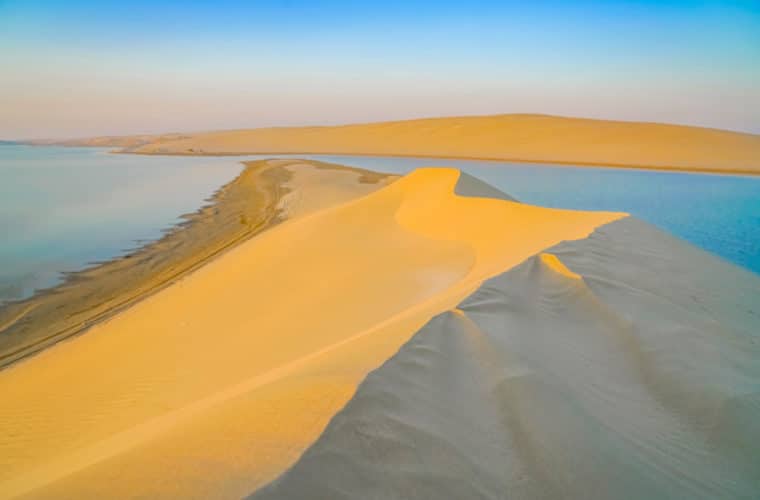
AL THAKHIRA BEACH
Enjoy the mangroves along this long stretch of coastline. Al Thakhira Beach, located 60 km north of Doha, is a popular place mainly for family gatherings. Benches on the beach, a walking promenade, and playgrounds for the young ones make for an excellent getaway for those with kids.
A beautiful addition to this Northern Qatari beach is mangrove forest stretching out along the coastline. While you’ll get a view of the mangroves from the shores, it’s more fun to join a kayak excursion. The biodiversity is stunning, and it’s incredible to see the many species of birds that call this place home.
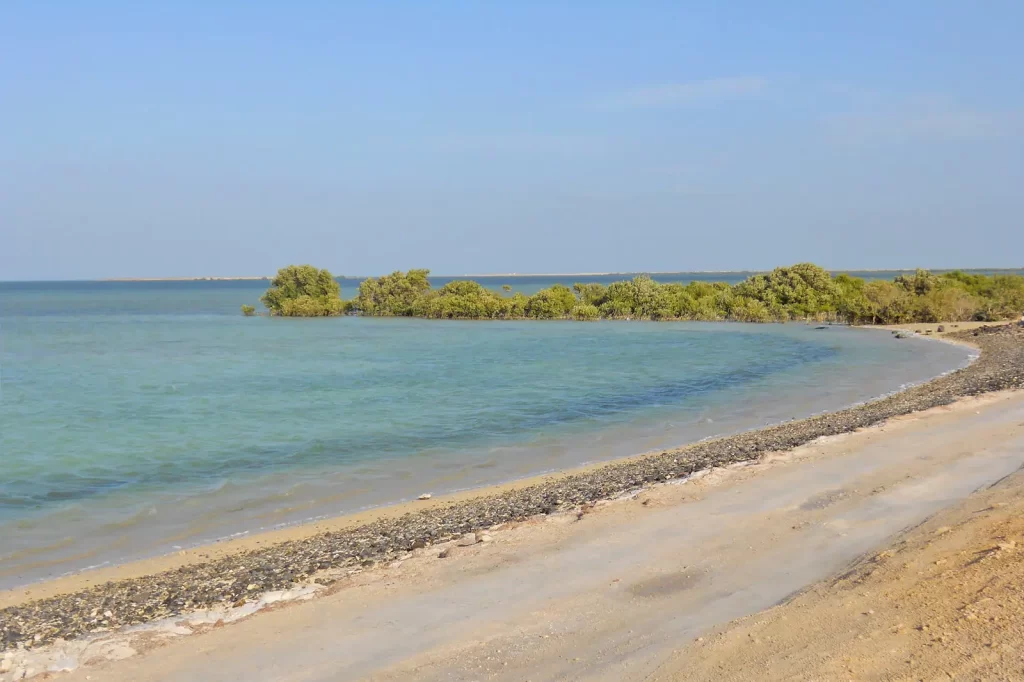
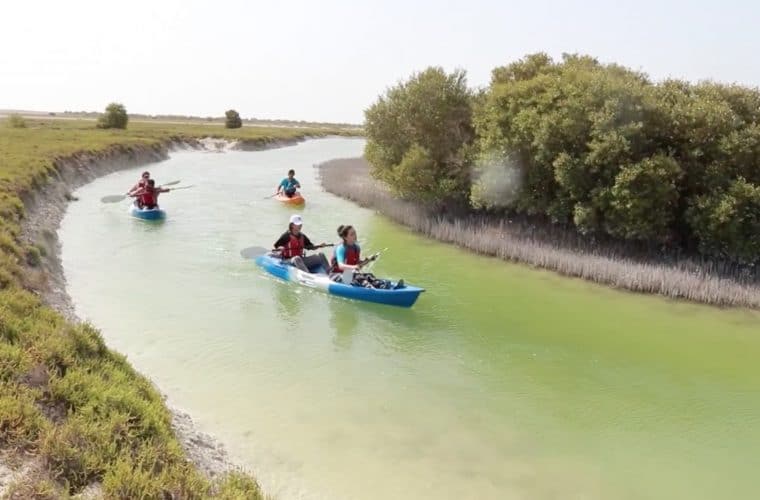
FUWAIRIT BEACH
Take a relaxing swim at this picturesque seaside. Fuwairit Beach sits on the northernmost tip of Qatar, almost 100 km north of Doha. Due to its long distance from the capital, this beach is rarely crowded. Flanked by beautiful rock formations, its shallow and calm water invites you for a cooling dip with picturesque views.
The beach lacks amenities and eateries, so it’s a good idea to pack your own umbrella and picnic. Fuwairit Beach is closed from April to July, when hawksbill turtles lay their eggs on this stretch of sand.
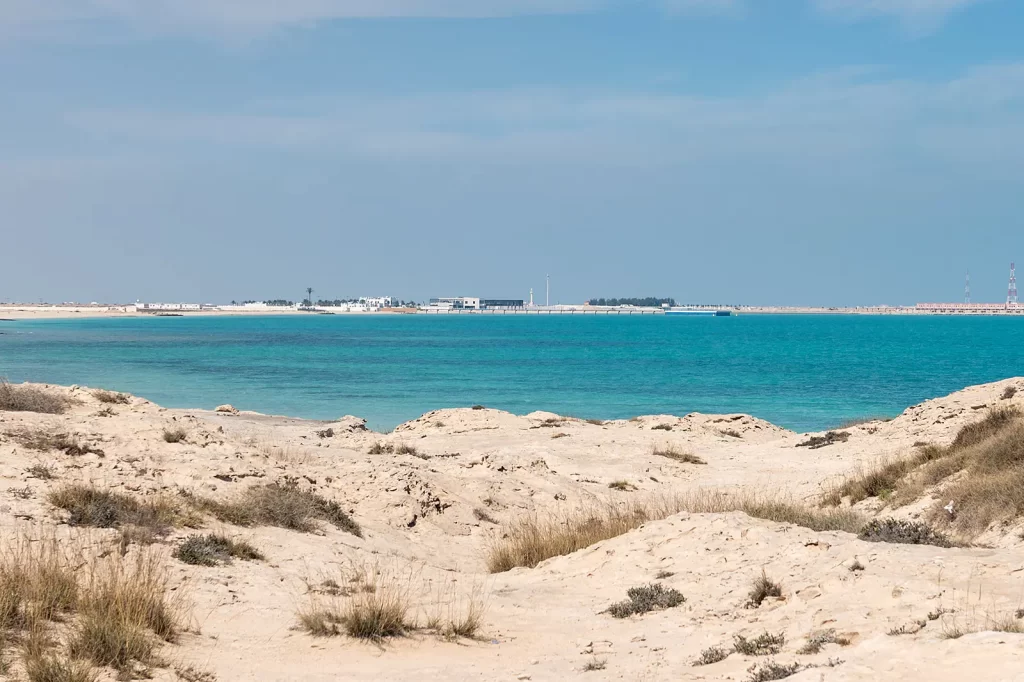
ZEKREET BEACH
Check out Qatar’s wildlife and limestone rocks. Zekreet Beach is often described as ‘remote’, and its location on a peninsula in West Qatar validates this statement. Located 100 km west of Doha, you will need to rent a 4×4 to reach this beach and enjoy a scenic drive over the rugged terrain.
Bring your goggles to enjoy snorkelling in the ocean or stay inland to see gazelles, deer, and ostrich roaming around freely. Facilities are non-existent on Zekreet Beach, so make sure to pack all the food and gears you need for an adventurous day on the west coast of Qatar.
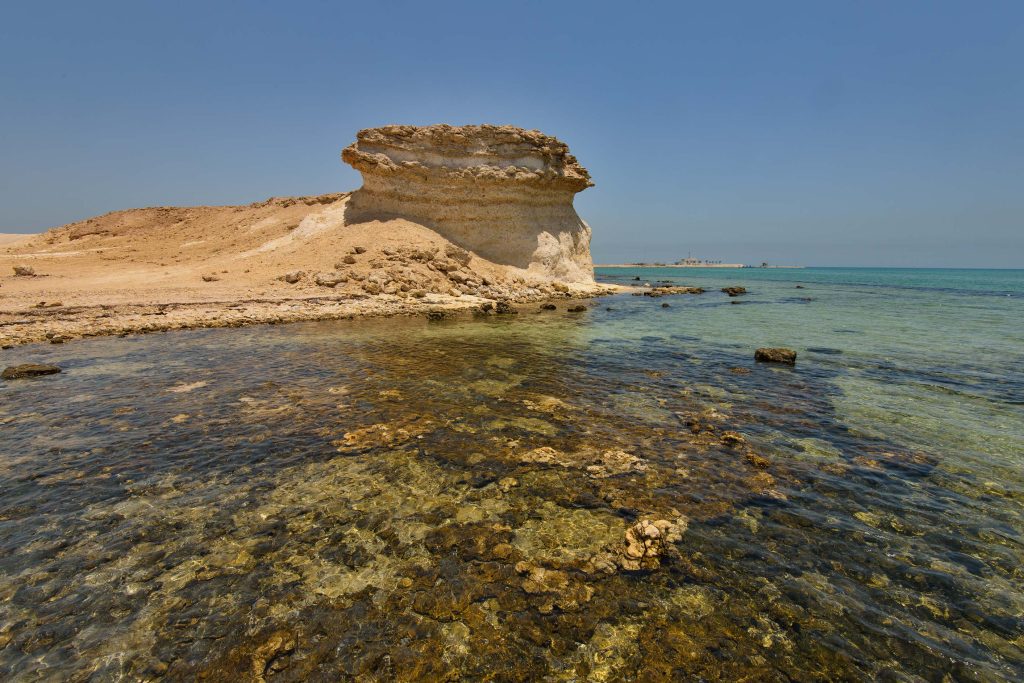
UMM BAB BEACH
Relax under the shade of date palms. Umm Bab Beach lies around 35 minutes south of Zekreet Beach. It’s not just the fine sand that draws in beachgoers – it has plenty of date palms providing shelter from the sun. You can easily spend an entire day on this shoreline, thanks to beach facilities such as barbecue grills and play zones for kids.
